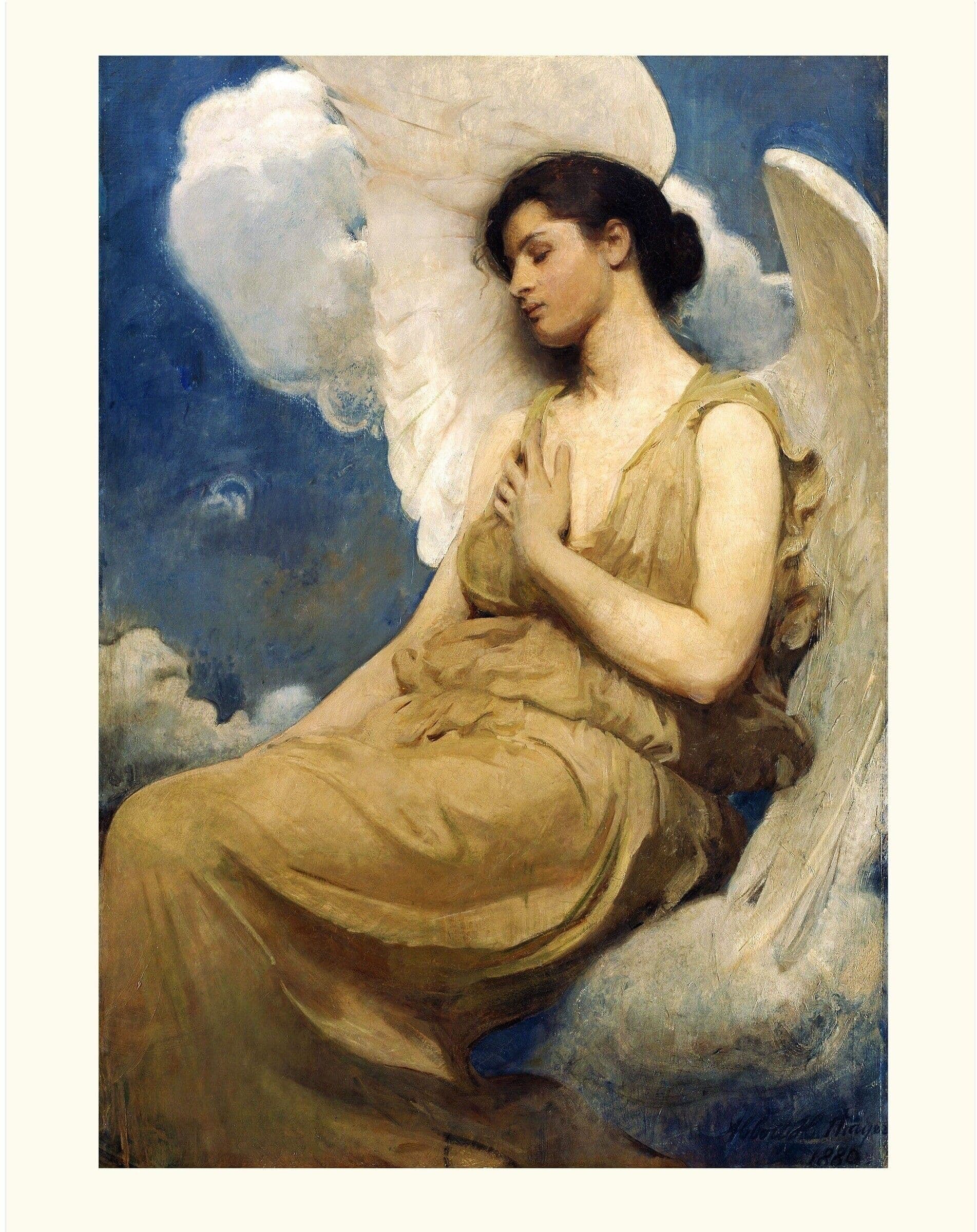
Abbott Handerson Thayer
View all artwork by Abbott Handerson Thayer
Abbott Handerson Thayer was an American painter celebrated for his ethereal depictions of angels and madonnas, as well as his pioneering work in camouflage theory. Born in Boston and raised in rural New Hampshire, Thayer studied at the Brooklyn Art School and the National Academy of Design before continuing his education in Paris at the École des Beaux-Arts. His artistic career spanned the late 19th and early 20th centuries, during which he developed a distinctive style characterized by idealized figures set against luminous backgrounds. Beyond his artistic contributions, Thayer made significant observations about protective coloration in nature, particularly regarding countershading in animals, which later influenced military camouflage techniques during World War I. His work represents a fascinating intersection of fine art, natural science, and practical application.
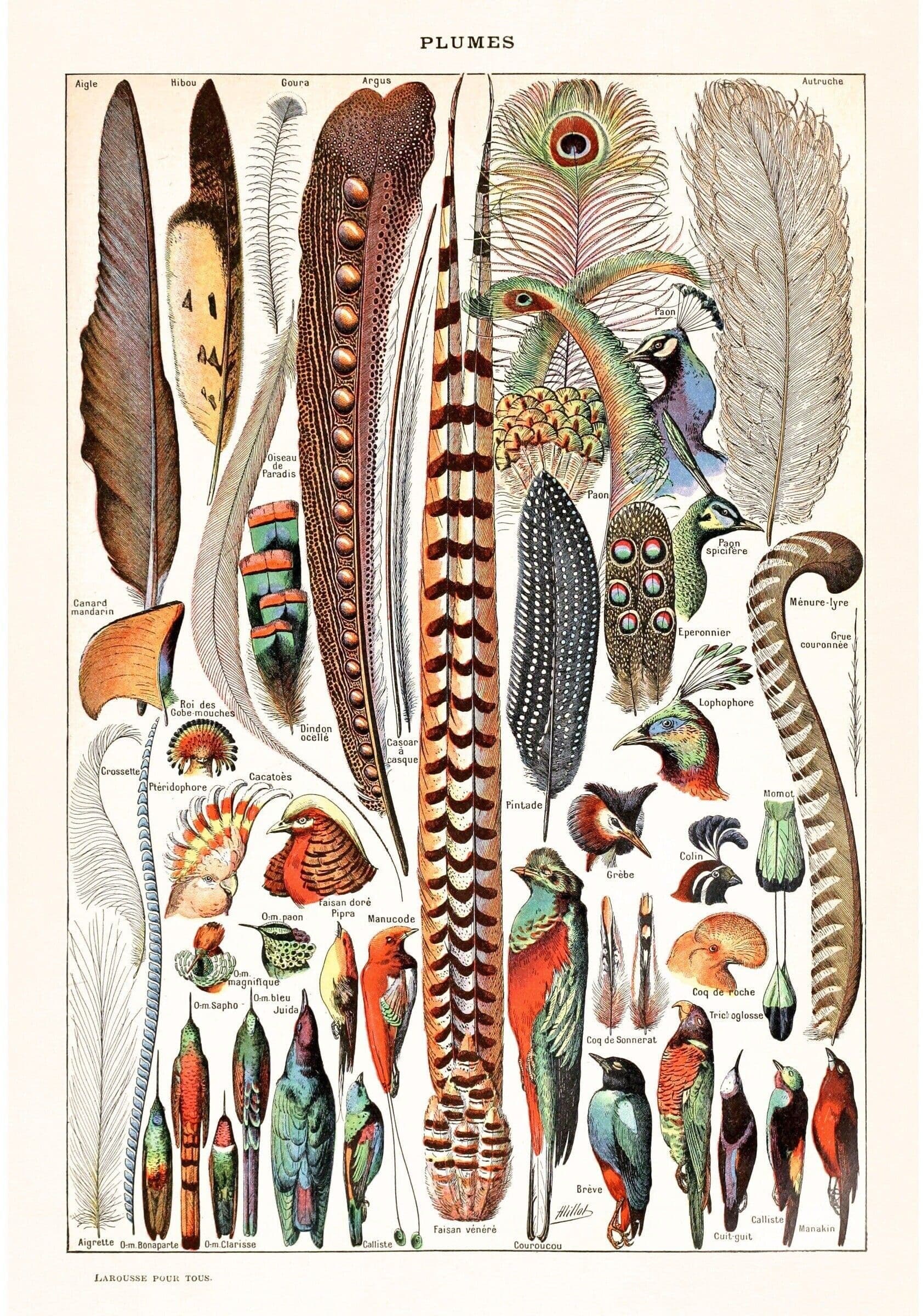
Adolphe Millot
View all artwork by Adolphe Millot
Adolphe Millot was a French painter, lithographer, and illustrator renowned for his exquisitely detailed natural history illustrations. Working primarily in the late 19th and early 20th centuries, Millot created hundreds of educational plates depicting flora, fauna, insects, and marine life with scientific accuracy combined with artistic elegance. His illustrations appeared in numerous reference works, including the famous Nouveau Larousse Illustré encyclopedia, where his vibrant, meticulously rendered images of butterflies, beetles, flowers, and other natural specimens became iconic examples of scientific illustration. Millot's work exemplifies the Belle Époque tradition of combining scientific documentation with aesthetic beauty, making complex biological subjects accessible and visually captivating. His legacy continues to inspire both scientists and artists, and his illustrations remain highly sought after for their technical precision and artistic merit.

Aert Schouman
View all artwork by Aert Schouman
Aert Schouman was a distinguished Dutch painter, printmaker, and glass engraver of the 18th century, celebrated for his masterful depictions of birds, animals, and botanical subjects. Born in Dordrecht, Schouman demonstrated exceptional artistic talent from an early age, studying under several masters before establishing himself as one of the leading natural history artists of his time. His work is characterized by meticulous attention to detail, vibrant coloration, and a remarkable ability to capture the essence and personality of his avian subjects. Schouman worked in various media including watercolor, oil, and glass engraving, and served as a drawing master and decorator of wall hangings. He was particularly known for his ornithological studies, which combined scientific observation with artistic flair, often depicting exotic birds collected by wealthy patrons. His contributions to Dutch art extended beyond painting; he was also an influential teacher and played a significant role in the artistic community of Dordrecht and The Hague.

Agustino Brunias
View all artwork by Agustino Brunias
Agostino Brunias was an Italian painter who became one of the most important visual documentarians of Caribbean life in the 18th century. Born in Rome, Brunias trained in the Italian academic tradition before relocating to England, where he worked as an assistant to renowned architect Robert Adam. His career took a dramatic turn when he traveled to the West Indies, where he spent the majority of his later life capturing scenes of daily life, cultural practices, and the diverse populations of the Caribbean islands. His paintings provide invaluable historical records of 18th-century Caribbean society, depicting free people of color, enslaved individuals, and various social interactions with a level of detail and nuance uncommon for his era. Brunias's work is characterized by its vibrant palette, careful attention to costume and setting, and its complex relationship with colonial power structures. While his paintings were created within a colonial context, they offer modern viewers important insights into Caribbean history, culture, and the complexities of race and class in the colonial West Indies.
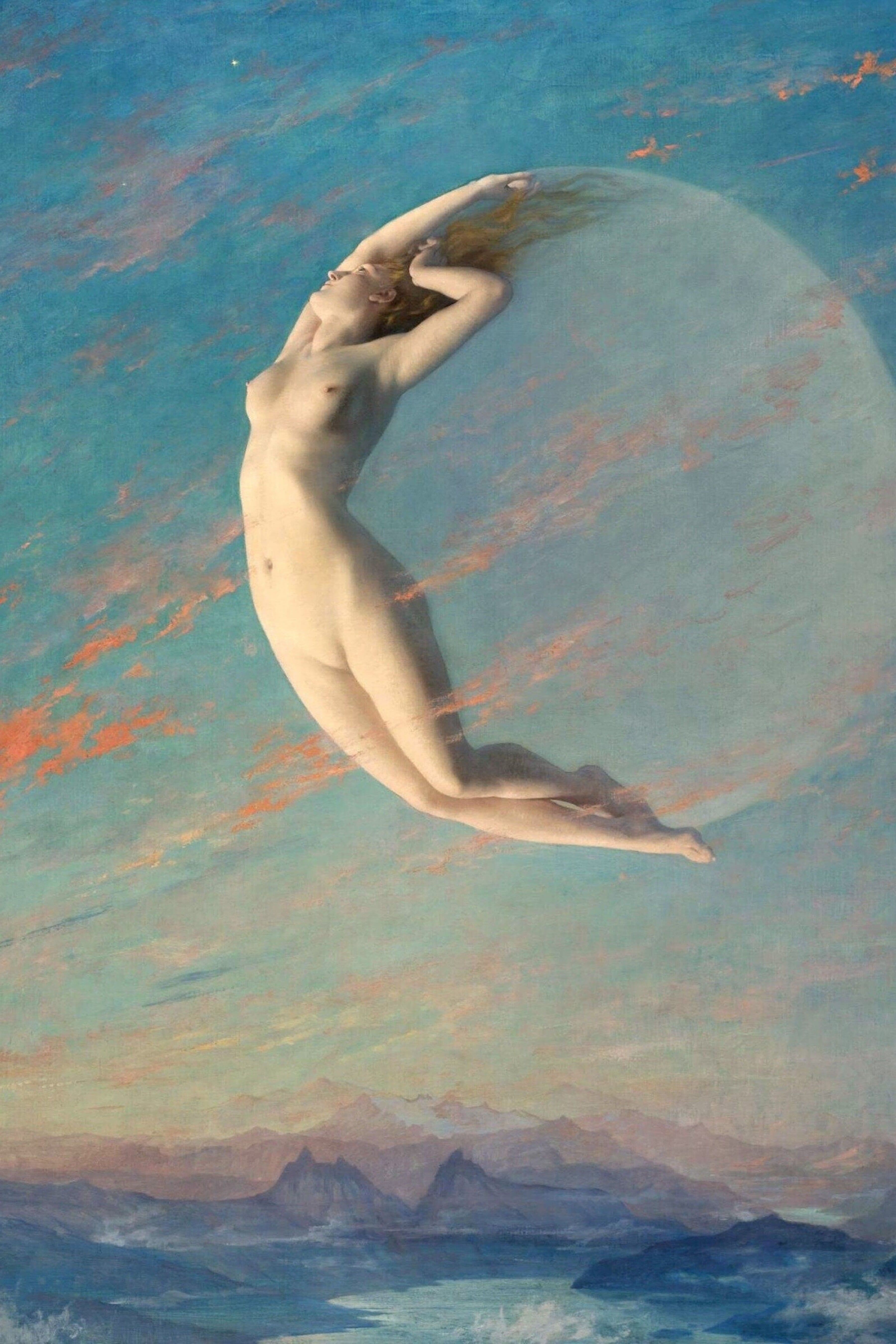
Albert Aublet
View all artwork by Albert Aublet
Albert Aublet was a distinguished French academic painter whose career flourished during the late 19th and early 20th centuries. A student of the prestigious École des Beaux-Arts in Paris, Aublet studied under renowned masters including Jean-Léon Gérôme, one of the leading academic painters of his generation. Aublet specialized in Orientalist subjects, mythological scenes, and allegorical compositions, executed with the technical precision and idealized beauty characteristic of French academic art. He exhibited regularly at the Paris Salon, earning recognition for his skillful draftsmanship, harmonious compositions, and refined use of color. His paintings often featured idealized female figures in exotic or classical settings, rendered with smooth brushwork and careful attention to detail. Aublet represents the continuation of French academic traditions into the modern era, maintaining classical standards of beauty and technique even as avant-garde movements were transforming the art world around him.

Albert Joseph Penot
View all artwork by Albert Joseph Penot
Albert Joseph Pénot was a French academic painter and poster artist celebrated for his sensual, dreamlike depictions of female beauty and allegorical subjects. Born in Bordeaux, Pénot studied at the École des Beaux-Arts, developing a distinctive style that combined academic precision with Art Nouveau sensibilities. His work is characterized by idealized feminine figures, often portrayed in mythological or fantastical settings, with flowing forms, delicate color palettes, and an ethereal quality that captured the romantic imagination of the Belle Époque. Pénot achieved commercial success not only through his paintings but also through his decorative arts and advertising posters, which showcased his ability to blend classical beauty with modern commercial appeal. His work reflects the transitional period in French art when academic traditions were being infused with new decorative and commercial possibilities, creating images that were simultaneously refined and accessible to popular audiences.
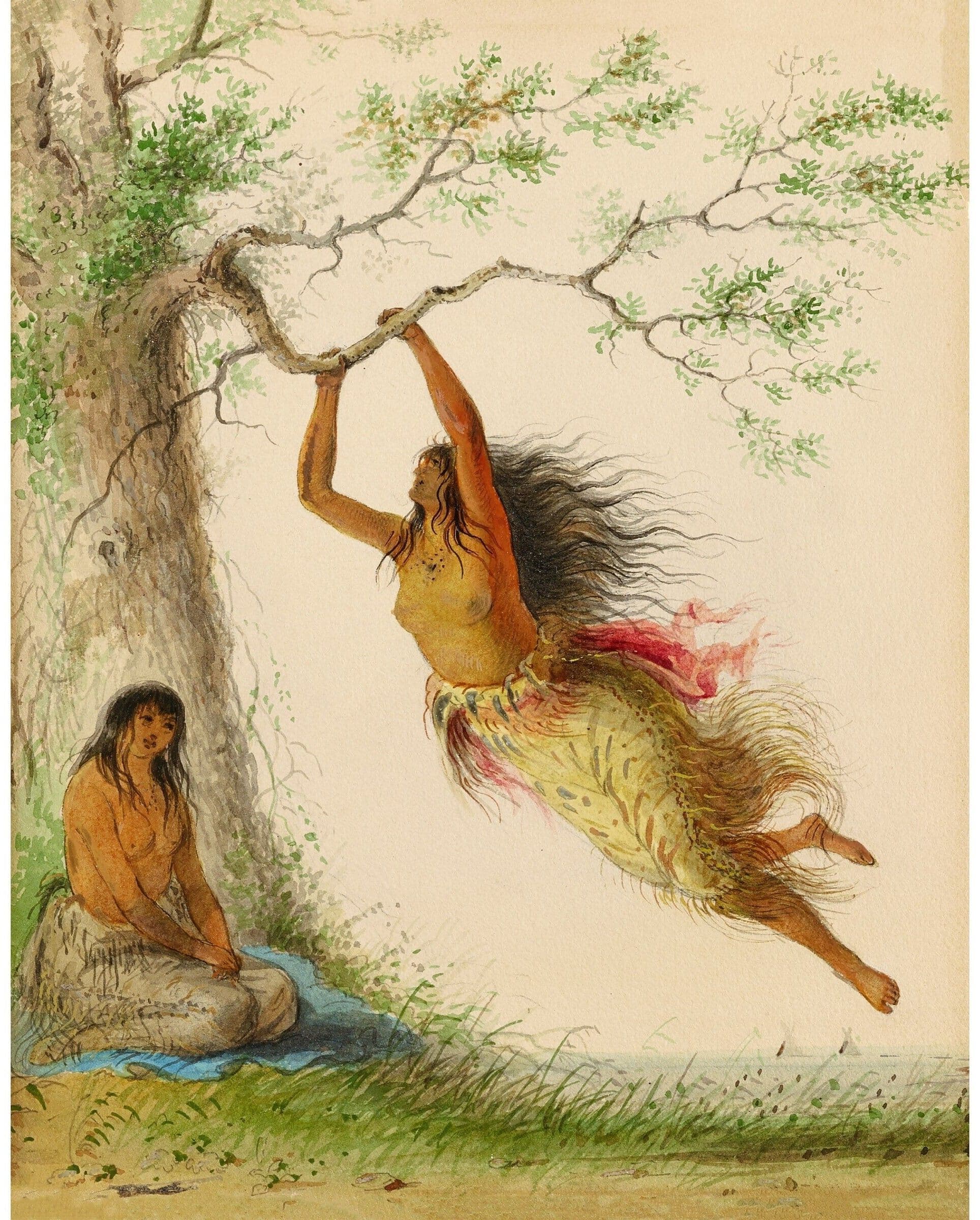
Alfred Jacob Miller
View all artwork by Alfred Jacob Miller
Alfred Jacob Miller was an American artist who created the first significant visual record of the Rocky Mountain fur trade and the culture of Native Americans in the American West. Born in Baltimore, Maryland, Miller studied art in Paris and Italy before returning to the United States. In 1837, he was commissioned by Scottish adventurer Sir William Drummond Stewart to accompany an expedition to the Rocky Mountains, where he created hundreds of sketches and watercolors documenting the landscape, wildlife, and indigenous peoples he encountered. These works are invaluable historical documents, capturing a way of life that was rapidly disappearing due to westward expansion. Miller's artistic style combined Romantic idealization with careful observation, creating images that were both aesthetically pleasing and ethnographically significant. Unlike many later Western artists, Miller's firsthand experience during the height of the fur trade era makes his work particularly important for understanding pre-settlement Western life.

Alfred Wierusz Kowalski
View all artwork by Alfred Wierusz Kowalski
Alfred Wierusz-Kowalski was a Polish painter renowned for his dramatic depictions of winter landscapes, wolves, and scenes of rural Polish life. Born in Suwałki in what was then Congress Poland, Wierusz-Kowalski studied at the Warsaw Drawing Class and later at the Academy of Fine Arts in Dresden and Munich. He became associated with the Munich School of painting, which emphasized realistic technique and dramatic subject matter. His signature works feature thrilling scenes of wolves attacking travelers in snowy landscapes, troika rides through winter storms, and other dynamic compositions that capture the harsh beauty and dangers of Eastern European winters. Wierusz-Kowalski's paintings are characterized by their masterful handling of snow and light, energetic composition, and ability to create tension and movement. His work gained international recognition during his lifetime, appealing to collectors who appreciated both his technical skill and his evocative portrayals of life in the Polish countryside.

Alfredo Ramos Martinez
View all artwork by Alfredo Ramos Martinez
Alfredo Ramos Martínez was a pioneering Mexican painter often called the "Father of Mexican Modernism" for his role in revolutionizing Mexican art education and establishing a distinctly Mexican artistic identity. Born in Monterrey, Ramos Martínez studied at the Academy of San Carlos in Mexico City before winning a scholarship to study in Paris, where he was influenced by Impressionism and Post-Impressionism. Upon returning to Mexico, he became director of the Academy of San Carlos, where he implemented radical reforms, establishing open-air painting schools that encouraged students to paint directly from nature and Mexican life rather than copying European academic models. His own artistic style evolved to celebrate indigenous Mexican culture, depicting Mexican people and traditions with dignity and beauty. His work is characterized by simplified forms, luminous color, and a modernist approach that honored Mexican subjects.

Aloys Zötl
View all artwork by Aloys Zötl
Aloys Zötl was an Austrian painter whose extraordinary collection of animal watercolors represents one of the most remarkable bodies of natural history art created in the 19th century. A bricklayer by trade who lived his entire life in the small Austrian town of Eferding, Zötl created an astonishing series of over 400 watercolors depicting animals from around the world, despite never traveling beyond Austria. Working from illustrations in books and prints, Zötl transformed scientific source material into vivid, imaginative compositions that combine scientific detail with fantastical elements. His "Bestiarium" features animals both real and mythical, rendered in brilliant colors and often placed in surreal settings that reveal more about imagination than zoological accuracy. Largely unknown during his lifetime and forgotten after his death, Zötl's work was rediscovered in the 20th century and has since been celebrated for its unique vision that bridges natural history illustration, outsider art, and surrealism.
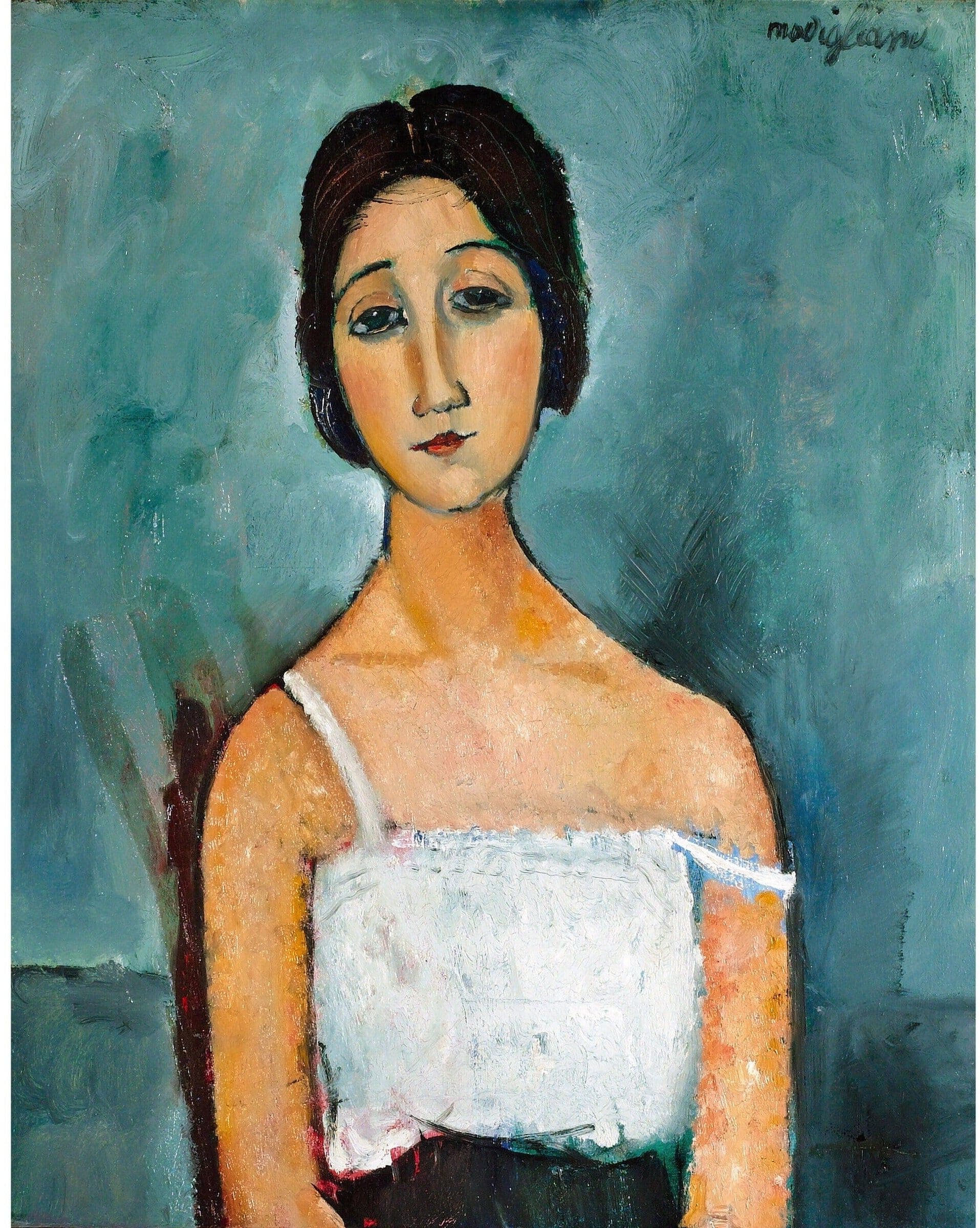
Amedeo Modigliani
View all artwork by Amedeo Modigliani
Amedeo Modigliani was an Italian painter and sculptor whose elegant, elongated figures and distinctive portraits define his unique contribution to early 20th-century modernism. Born in Livorno, Italy, to a Sephardic Jewish family, Modigliani studied art in Florence and Venice before moving to Paris in 1906, where he would spend the remainder of his short life. In the artistic ferment of Montparnasse, he developed his signature style: portraits and nudes characterized by elongated forms, simplified features, mask-like faces, and soulful eyes that often lack pupils. His work synthesized influences from African sculpture, Italian Renaissance painting, and contemporary Cubism into something entirely his own. Despite chronic poverty, poor health, and struggles with alcoholism, Modigliani created a remarkable body of work that includes some of the most recognizable portraits of his era.

Anton Mauve
View all artwork by Anton Mauve
Anton Mauve was a leading Dutch realist painter and a prominent member of the Hague School, celebrated for his atmospheric landscapes and sensitive depictions of rural life. Born in Zaandam, Mauve developed a style characterized by soft, tonal harmonies, subtle gradations of light, and an almost poetic quality in his treatment of the Dutch countryside. His preferred subjects included sheep in meadows, shepherdesses, fishing boats, and the flat, expansive landscapes of Holland, all rendered with a gentle, silvery palette that captured the misty, diffused light characteristic of the region. Mauve was an important influence on his cousin-in-law Vincent van Gogh, providing the young artist with crucial early instruction and encouragement, though their relationship eventually became strained.
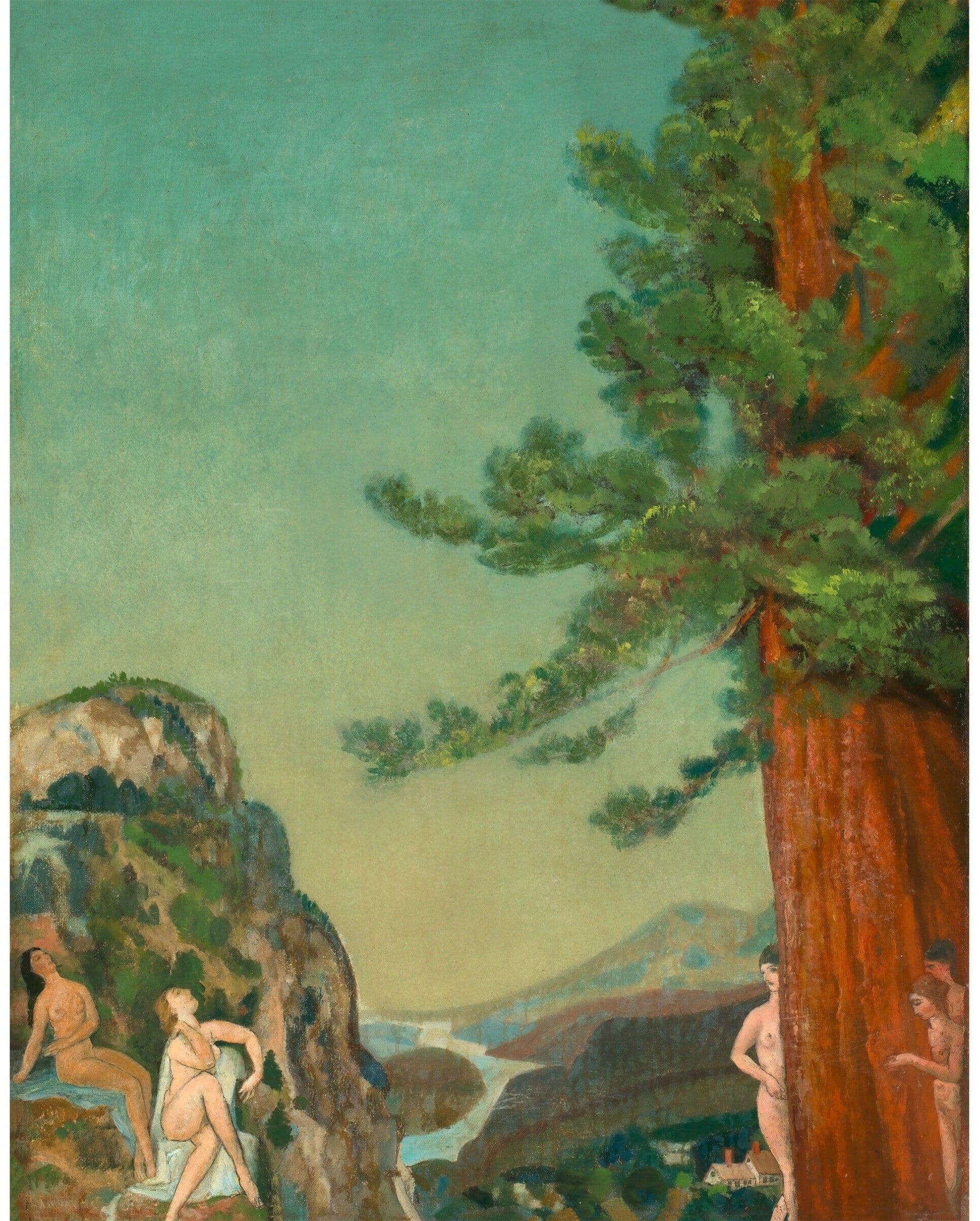
Arthur B. Davies
View all artwork by Arthur B. Davies
Arthur Bowen Davies was an American painter, printmaker, and art patron who played a pivotal role in introducing modern European art to America as the primary organizer of the landmark 1913 Armory Show. Born in Utica, New York, Davies developed a distinctive personal style that combined romantic imagery, classical themes, and modernist experimentation. His paintings often feature ethereal figures in dreamlike landscapes, rendered with a delicate, lyrical quality that set him apart from his contemporaries. While his own work remained relatively conservative aesthetically, Davies possessed remarkable vision regarding the broader art world, recognizing the importance of avant-garde European movements before most American collectors and critics.
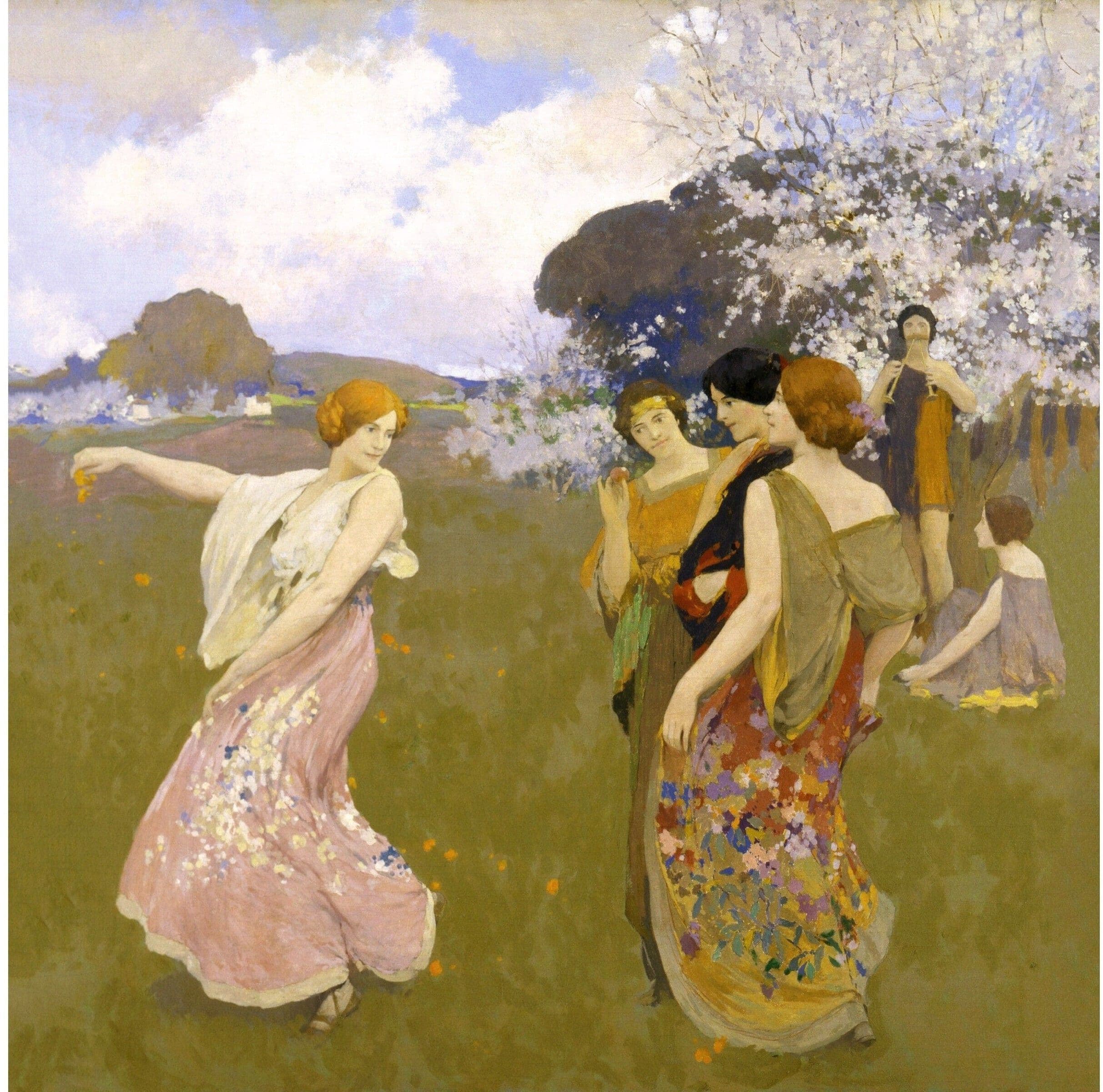
Arthur F. Matthews
View all artwork by Arthur F. Matthews
Arthur Frank Mathews was an American painter, architect, designer, and educator who became the leading figure of the Arts and Crafts movement in California. Born in Wisconsin and raised in California, Mathews studied at the Académie Julian in Paris before returning to San Francisco to teach at the California School of Design, where he served as director and influenced a generation of California artists. His artistic vision combined Symbolism, Arts and Crafts principles, and California themes, creating a distinctive regional style that celebrated the state's landscape, history, and mythology. Mathews and his wife Lucia established the Philopolis Press and Furniture Shop, producing decorative objects, furniture, and publications that embodied Arts and Crafts ideals adapted to California aesthetics.
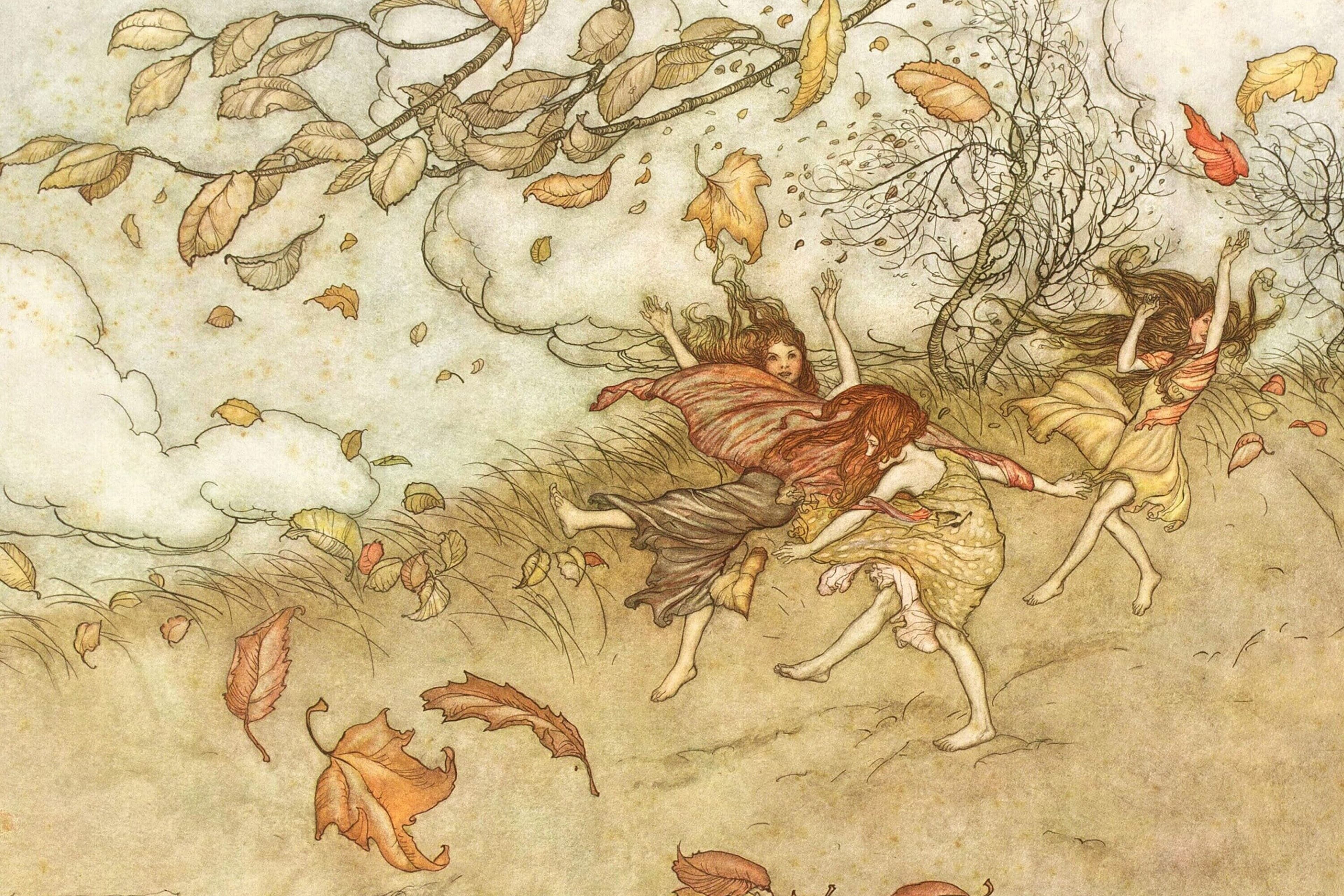
Arthur Rackham
View all artwork by Arthur Rackham
Arthur Rackham was one of the most celebrated illustrators of the early 20th century, whose imaginative interpretations of classic literature defined the Golden Age of British book illustration. Born in London, Rackham initially worked as an insurance clerk while studying art in the evenings, before transitioning to full-time illustration work. His breakthrough came with his illustrations for Washington Irving's "Rip Van Winkle" in 1905, establishing a distinctive style characterized by intricate line work, muted color palettes, and the ability to capture both whimsy and darkness. Rackham became renowned for his illustrations of fairy tales, folklore, and classic literature, including "Peter Pan in Kensington Gardens," "Alice's Adventures in Wonderland," and "The Wind in the Willows."

Asai Chû
View all artwork by Asai Chû
Asai Chū was a pioneering Japanese painter and educator who played a crucial role in introducing Western painting techniques to Japan during the Meiji period. Born in Edo (Tokyo), Asai initially studied traditional Japanese painting before turning to Western-style oil painting, becoming one of the leading yōga (Western-style painting) artists of his generation. He studied under Antonio Fontanesi, an Italian painter hired by the Meiji government to teach Western art techniques at the Technical Fine Arts School in Tokyo. Asai later traveled to France where he was influenced by Impressionism and the Barbizon school, particularly the plein-air painting approach. Upon returning to Japan, he became an influential teacher at the Tokyo School of Fine Arts and later at the Kyoto Municipal School of Arts and Crafts, where he trained the next generation of Japanese artists. His work bridges traditional Japanese sensibilities with Western techniques, particularly in landscape painting, creating a synthesis that became foundational for modern Japanese art. Asai's dedication to art education and his success in adapting Western methods to Japanese subjects made him a central figure in Japan's artistic modernization.
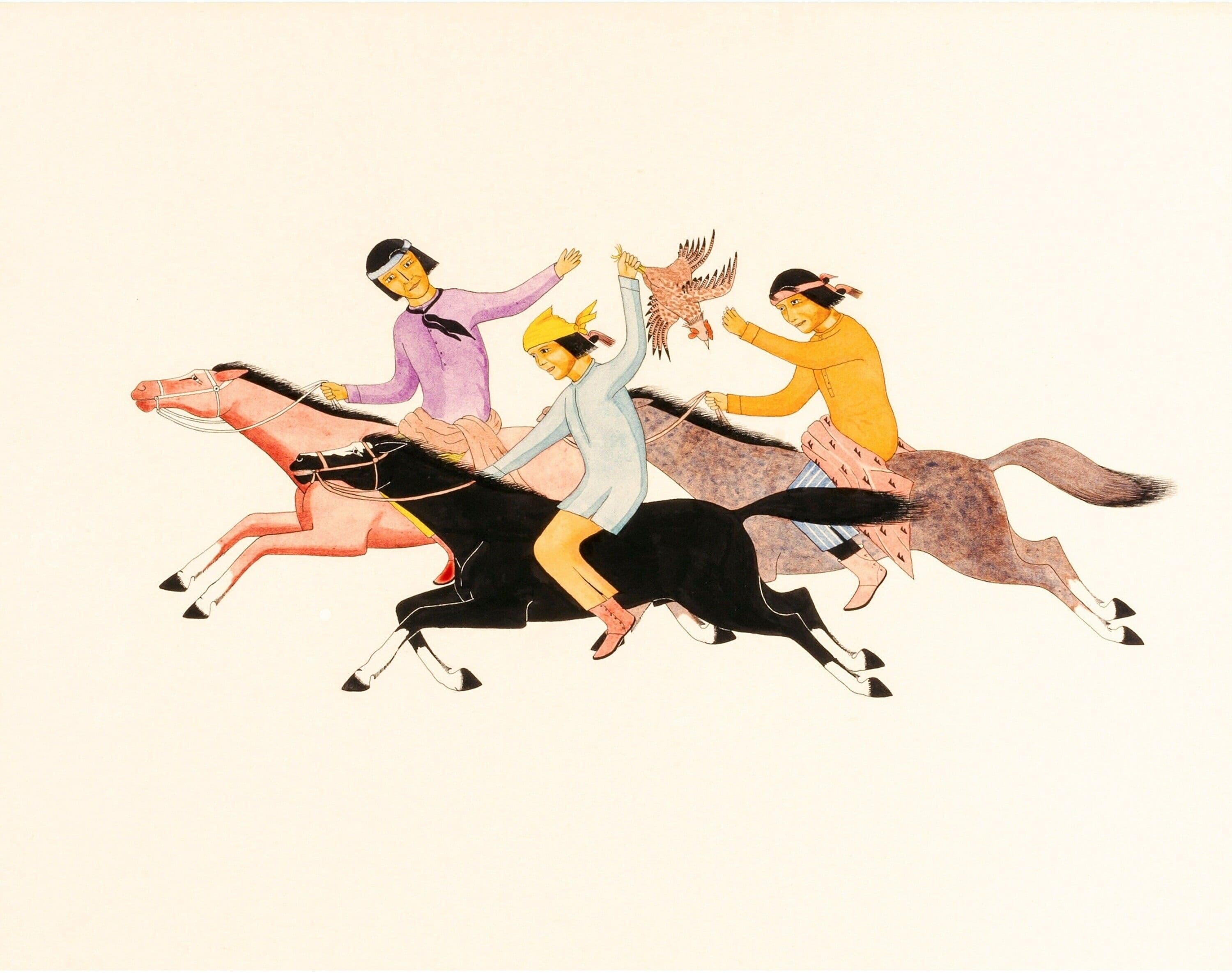
Awa Tsireh
View all artwork by Awa Tsireh
Awa Tsireh, also known as Alfonso Roybal or Cattail Bird, was a pioneering Native American painter from San Ildefonso Pueblo who helped establish a distinctive style of pueblo painting in the early 20th century. Born into a family of artists at San Ildefonso Pueblo in New Mexico, Awa Tsireh was influenced by both traditional pueblo aesthetics and the encouragement of anthropologists and educators who recognized the artistic talent emerging from pueblo communities. His work is characterized by flat, decorative compositions featuring pueblo ceremonial dancers, animals, and abstract designs rendered in earth-toned watercolors with clean, precise lines.
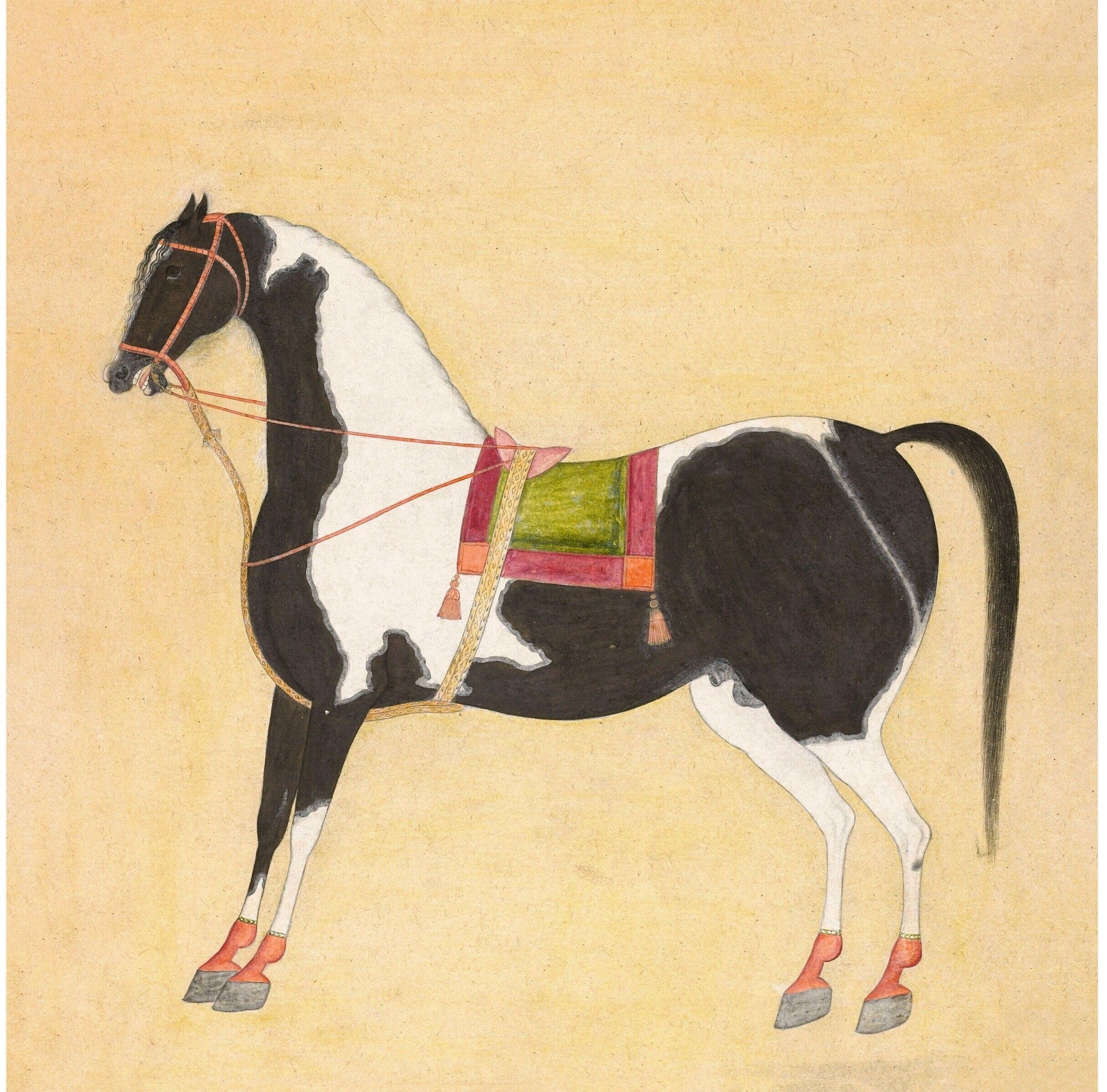
Bhavani Das
View all artwork by Bhavani Das
Bhavani Das was a distinguished painter in the Mughal imperial workshops during the 17th century, active during the reigns of emperors Shah Jahan and Aurangzeb. Working within the sophisticated artistic tradition of Mughal miniature painting, Bhavani Das contributed to some of the most important illustrated manuscripts of the period. Mughal painting under Shah Jahan reached perhaps its most refined expression, characterized by idealized naturalism, sumptuous coloring, and meticulous detail. Bhavani Das excelled in portraiture and court scenes, capturing the grandeur and elegance of the Mughal court with technical precision and artistic sensitivity.

Bill Traylor
View all artwork by Bill Traylor
Bill Traylor was an African American self-taught artist who, in his late 80s, began creating an extraordinary body of work that has become recognized as among the most significant examples of American folk art. Born into slavery on an Alabama plantation, Traylor lived through the Civil War, Reconstruction, and the Jim Crow era, working as a sharecropper until arthritis and old age forced him to move to Montgomery. Living homeless on the streets, Traylor began drawing on discarded cardboard, using pencil, crayon, and poster paint to create images drawn from memory and imagination. His simplified, geometric figures depicted scenes from rural African American life, animals both real and fantastical, and the social dynamics he observed in the urban environment around him.

Charles Edward Halle
View all artwork by Charles Edward Halle
Charles Edward Hallé was a British painter and portraitist who became particularly well-known for his depictions of Venetian life and Italian Renaissance-inspired subjects. Born in London to the famous conductor Sir Charles Hallé, he studied at the Royal Academy Schools and in Paris, developing a refined academic style. Hallé spent extended periods in Venice, where he created luminous paintings capturing the city's atmosphere, architecture, and inhabitants. His work is characterized by careful attention to light effects, particularly the way Mediterranean sunlight interacts with architecture and water.
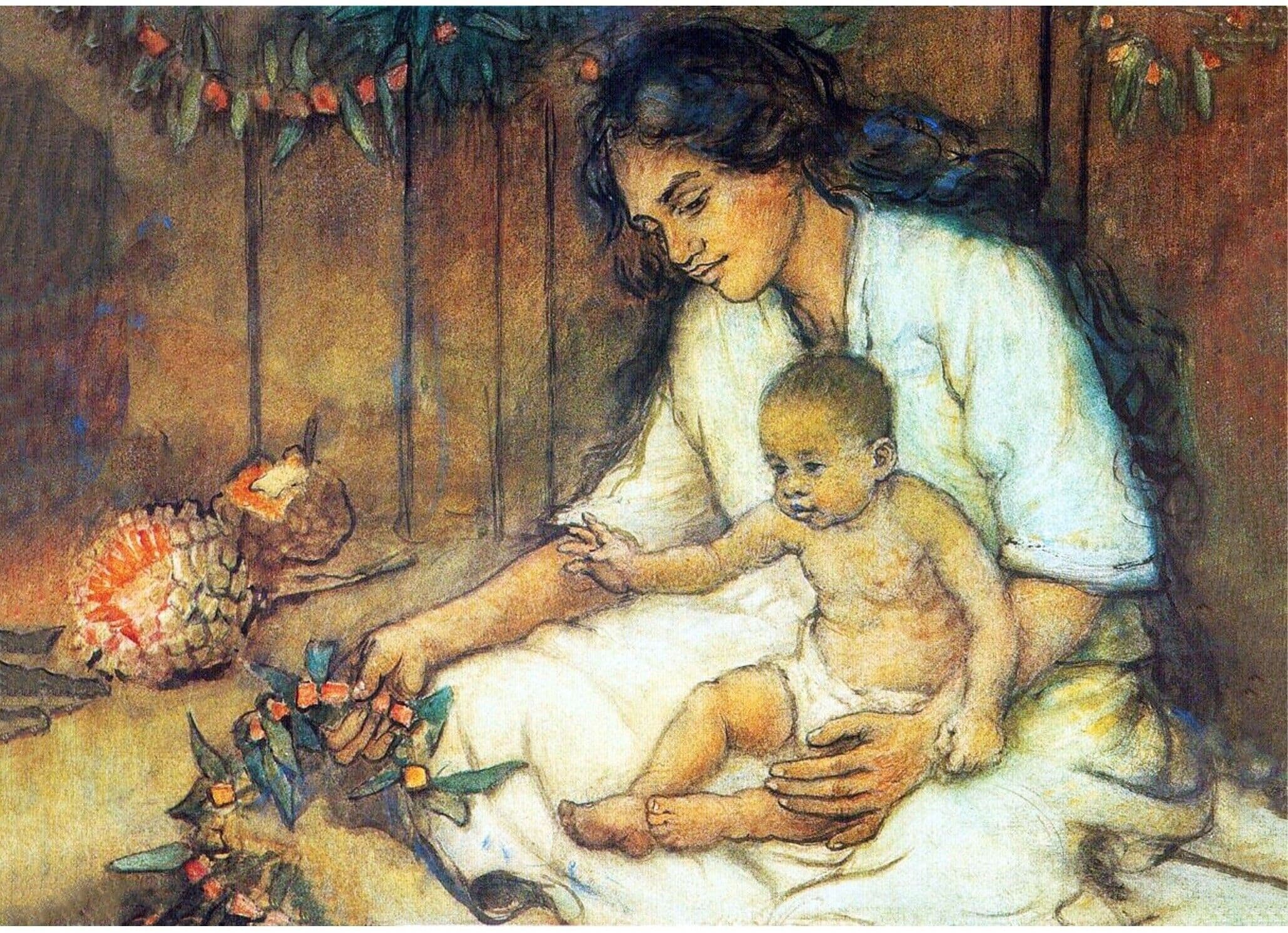
Charles W. Bartlett
View all artwork by Charles W. Bartlett
Charles William Bartlett was a British painter and printmaker who became a pioneering figure in introducing Japanese woodblock printing techniques to Western artists. Born in Dorset, England, Bartlett studied at the Royal Academy Schools before traveling extensively throughout Asia, including India, Ceylon (Sri Lanka), the Philippines, and most importantly, Japan. His arrival in Japan in the early 1910s coincided with and contributed to the shin-hanga (new prints) movement, which revived traditional woodblock printing while incorporating Western elements. His prints of Hawaiian subjects, created during extended stays in Honolulu, are particularly celebrated for their luminous color and atmospheric qualities.

Chéri Hérouard
View all artwork by Chéri Hérouard
Chéri Hérouard was a prolific French illustrator and poster artist whose elegant, sensual Art Deco imagery epitomized the sophisticated glamour of early 20th-century Parisian culture. Best known for his work in "La Vie Parisienne," a popular magazine showcasing Parisian fashions, society, and entertainment, Hérouard created hundreds of illustrations that captured the joie de vivre and liberated spirit of the 1920s and 1930s. His distinctive style featured elongated, graceful female figures rendered in bold colors and simplified forms that balanced sophistication with playfulness.
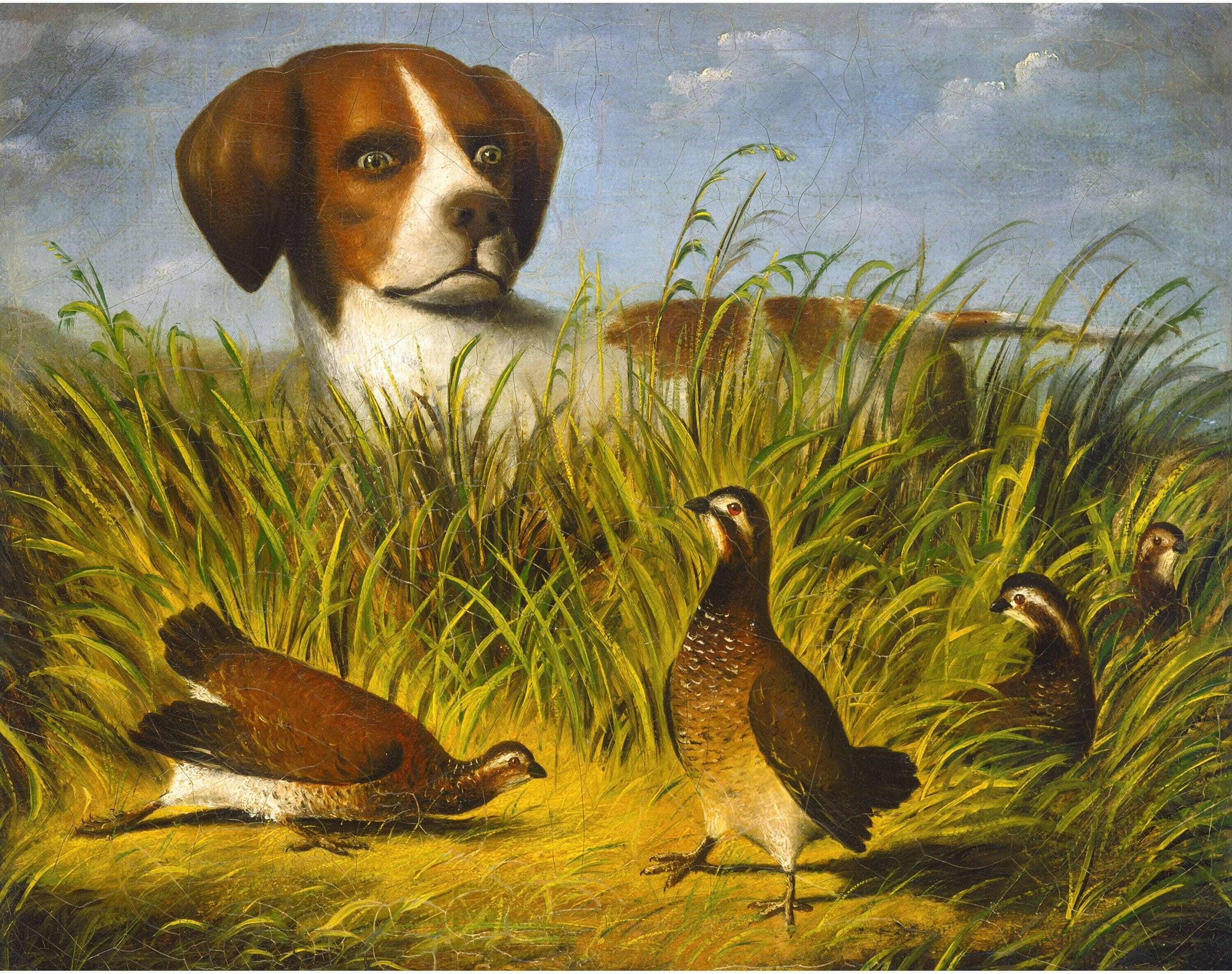
D.G. Stouter
View all artwork by D.G. Stouter
D.G. Stouter was an American folk artist active in the mid-19th century, known for his distinctive watercolor paintings of birds, flowers, and decorative compositions. Working in Pennsylvania, Stouter created works that exemplify the fraktur tradition and American folk art aesthetic, characterized by flat, decorative compositions, vibrant colors, and a charming directness of expression. His paintings often featured birds perched among stylized flowering branches, rendered with careful attention to pattern and color harmony rather than naturalistic accuracy.
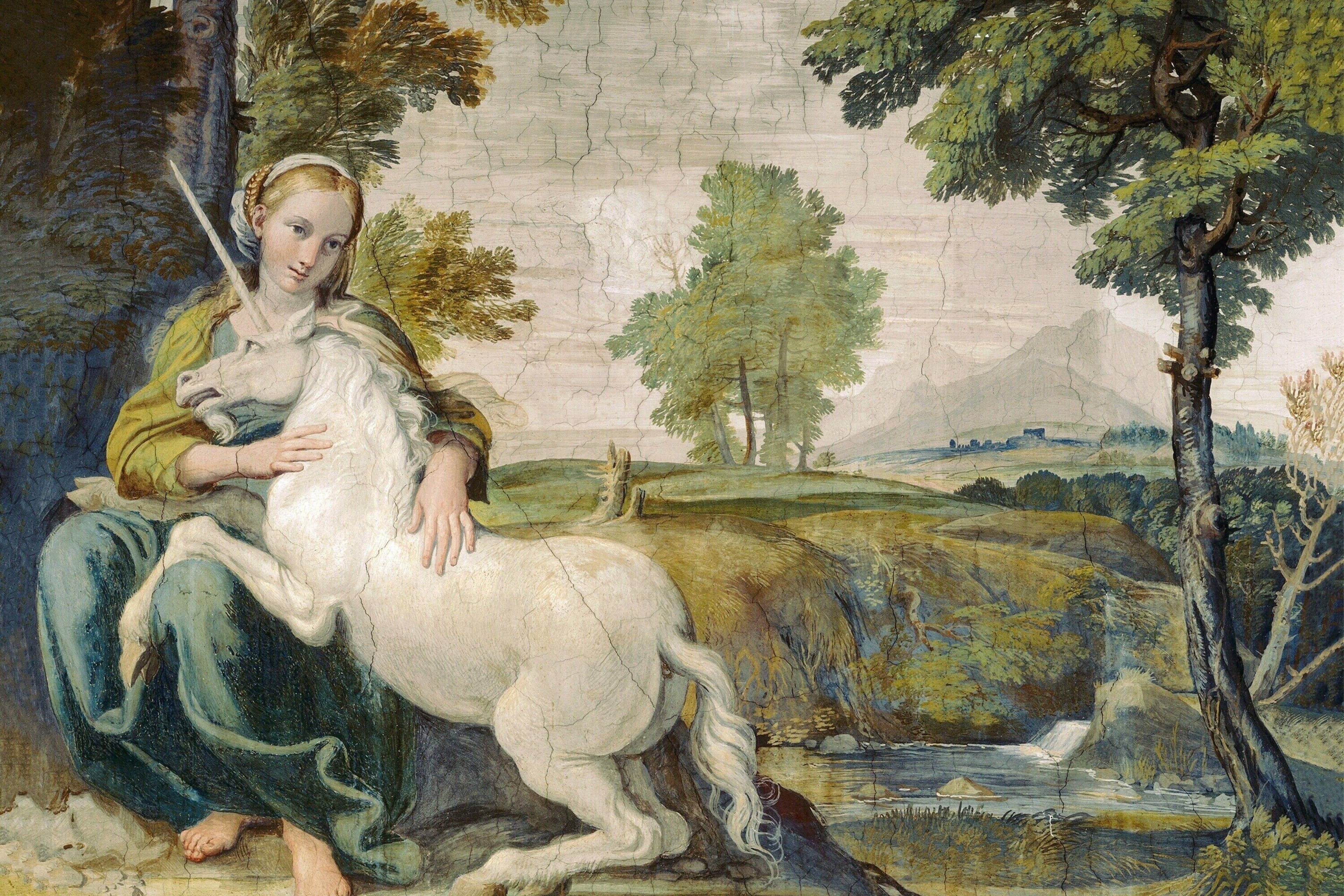
Domenichino
View all artwork by Domenichino
Domenichino, born Domenico Zampieri, was one of the leading Italian Baroque painters of the early 17th century, renowned for his frescoes, altarpieces, and landscapes that combined classical order with emotional expressiveness. Born in Bologna, he trained under the Carracci family, particularly Annibale Carracci, whose balanced, classicizing approach profoundly influenced his development. Domenichino worked primarily in Rome and Naples, creating religious and mythological compositions characterized by clear organization, elegant figures, and carefully constructed spatial arrangements.

E.A. Séguy
View all artwork by E.A. Séguy
E.A. Séguy was a French artist and designer celebrated for his stunning portfolios of decorative patterns inspired by nature, particularly insects, flowers, and geometric forms. Working in the early 20th century, Séguy created several influential pattern books including "Papillons" (butterflies), "Insectes" (insects), and "Prismes," which showcased his ability to transform natural forms into sophisticated Art Deco and Art Nouveau decorative designs. His work was characterized by vibrant, jewel-like colors achieved through the pochoir stenciling technique, which allowed for rich, saturated hues and precise patterns.
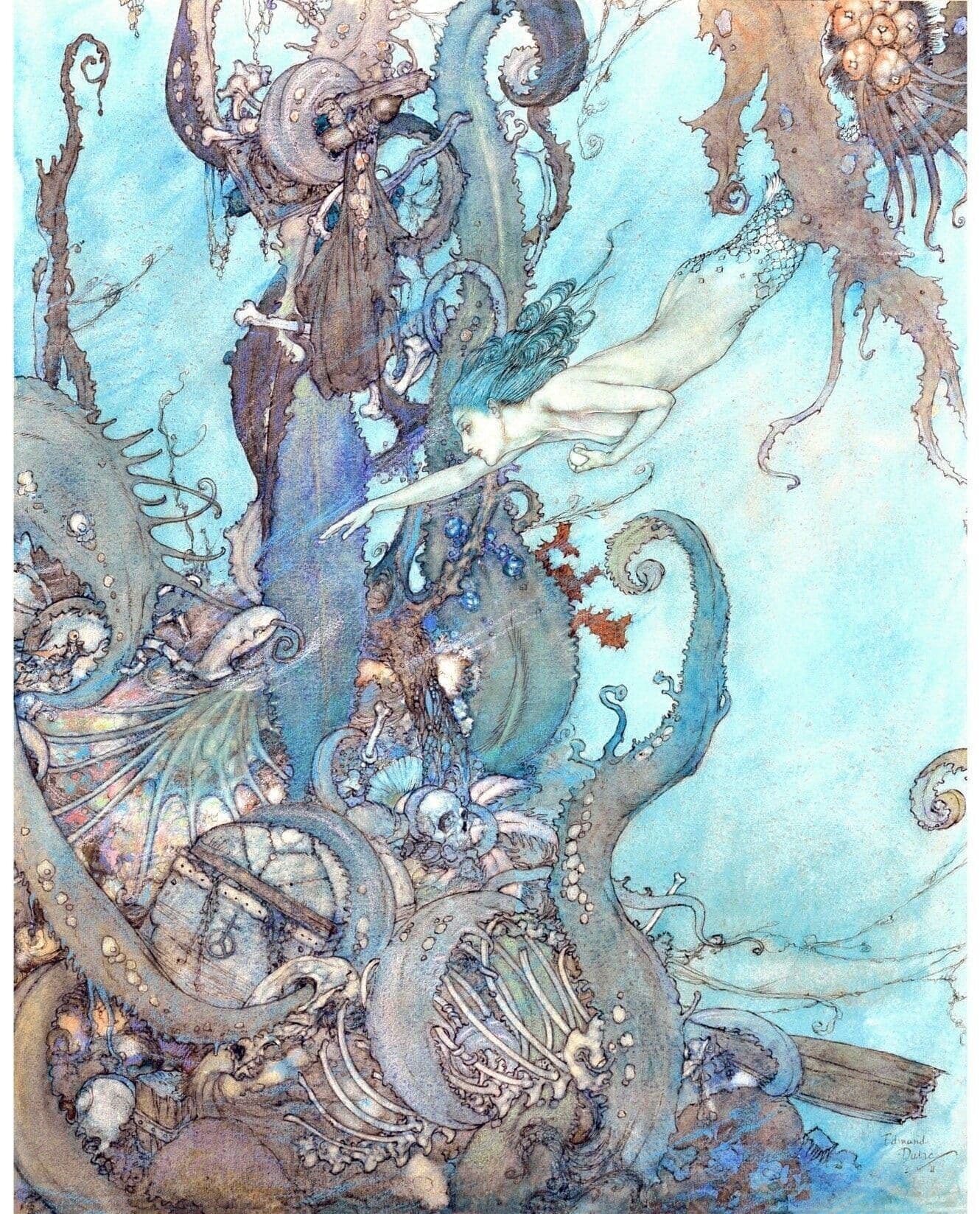
Edmund Dulac
View all artwork by Edmund Dulac
Edmund Dulac was a French-born, British-naturalized illustrator whose richly colored, exotic illustrations defined the Golden Age of illustration alongside contemporaries like Arthur Rackham and Kay Nielsen. Born in Toulouse, France, Dulac studied law before pursuing art, eventually moving to London where he established himself as a leading book illustrator. His breakthrough came with his illustrations for "The Arabian Nights," which showcased his distinctive style: sumptuous colors, intricate decorative patterns, Persian and Indian artistic influences, and a sophisticated sense of design.
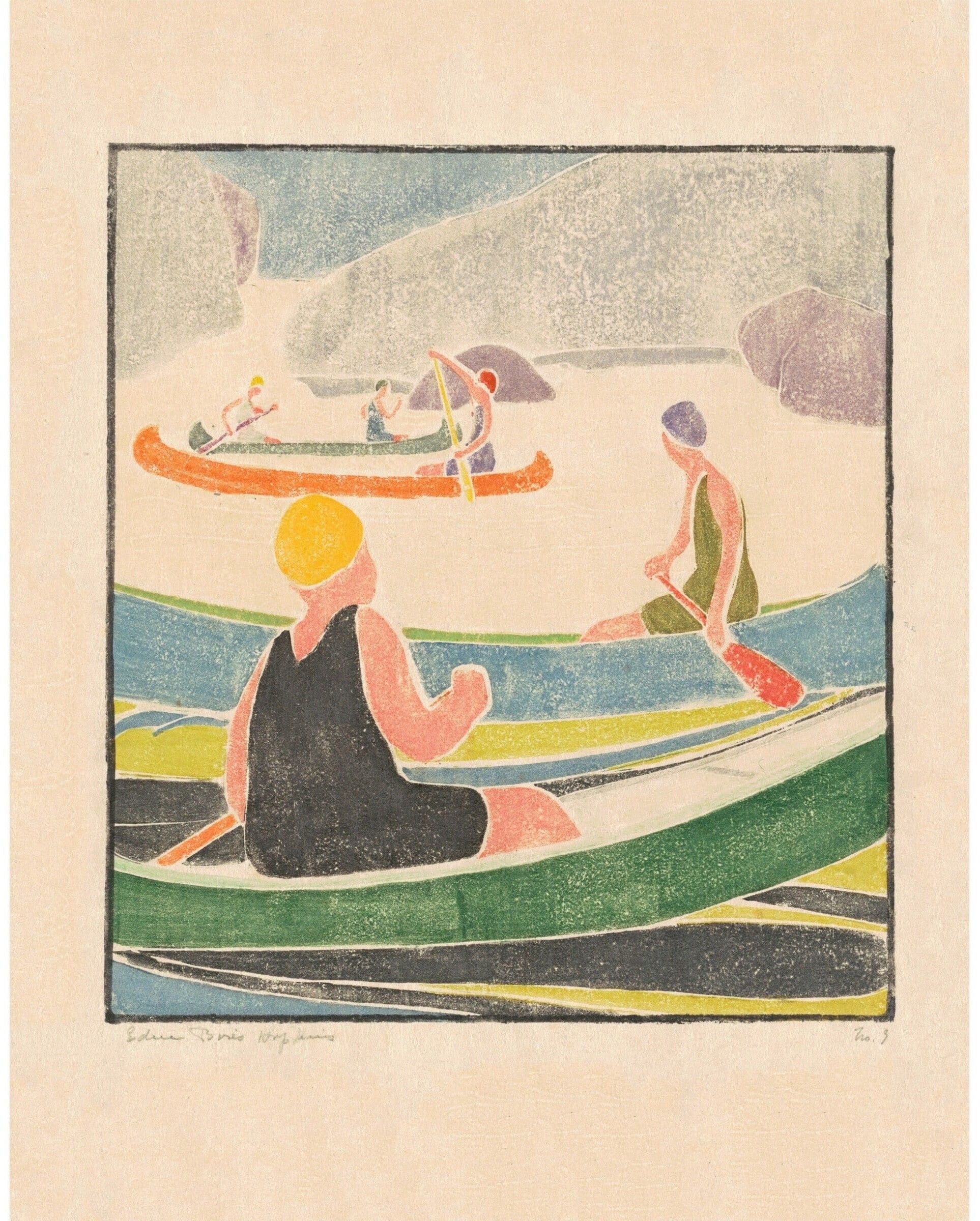
Edna Boies Hopkins
View all artwork by Edna Boies Hopkins
Edna Boies Hopkins was an American printmaker and painter who became particularly known for her innovative woodblock prints depicting Native American subjects and southwestern landscapes. Born in Hudson, Michigan, Hopkins studied at the Cincinnati Art Academy and in Paris before settling in New York. She became fascinated with Native American culture through visits to the Southwest, creating sensitive portrayals of Hopi and other Pueblo peoples that combined respect for her subjects with modernist aesthetic approaches.
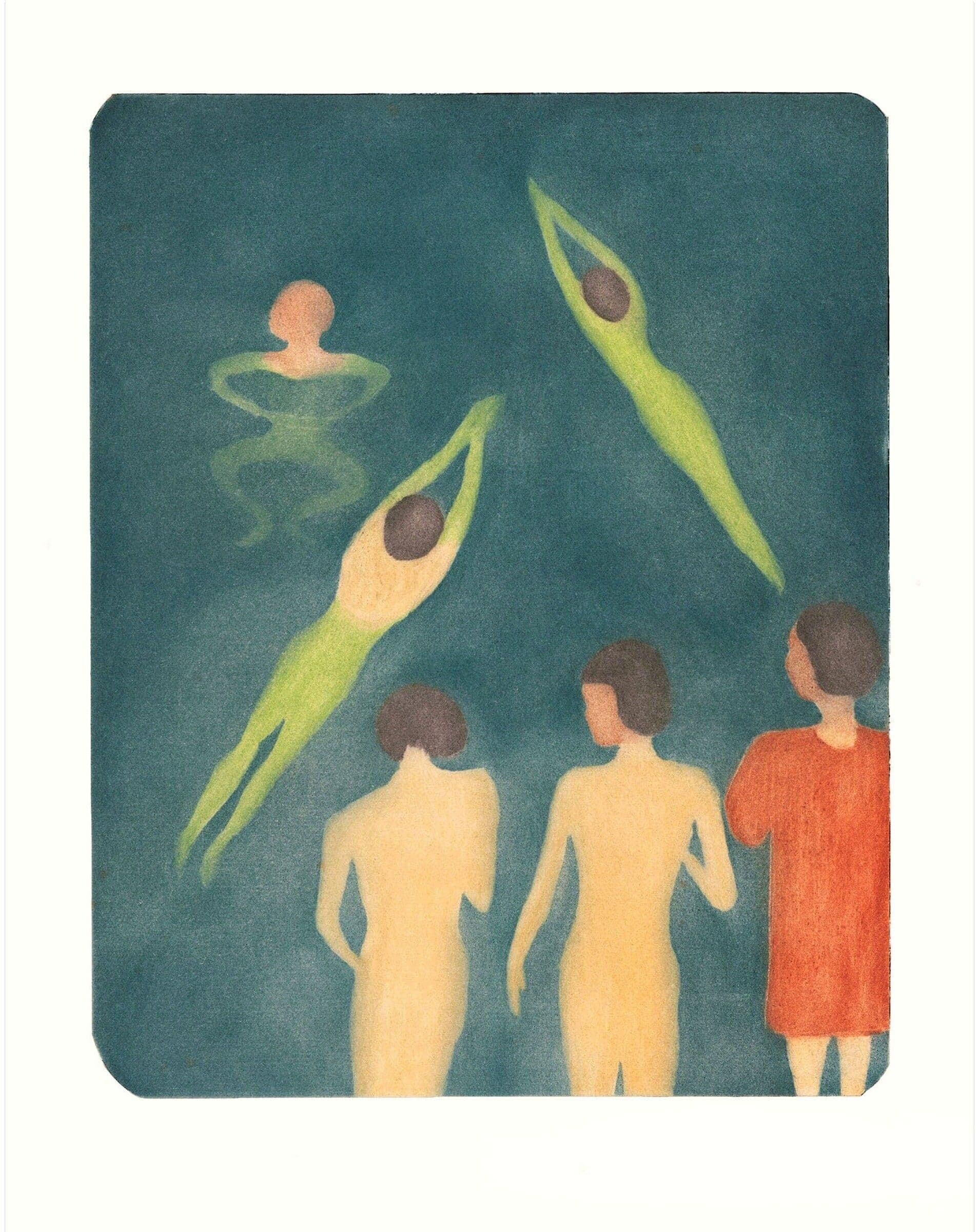
Edvard Munch
View all artwork by Edvard Munch
Edvard Munch was a Norwegian painter and printmaker whose intensely emotional, psychologically charged works made him a pioneer of Expressionism and one of the most influential artists of modern art. Born in rural Norway, Munch experienced profound personal tragedies in his youth, including the deaths of his mother and sister from tuberculosis, which profoundly shaped his artistic vision. His most famous painting, "The Scream," has become an icon of modern anxiety and existential dread. Munch's work is characterized by its exploration of universal human experiences—love, anxiety, death, jealousy, and despair—rendered through expressive color, simplified forms, and psychological intensity.
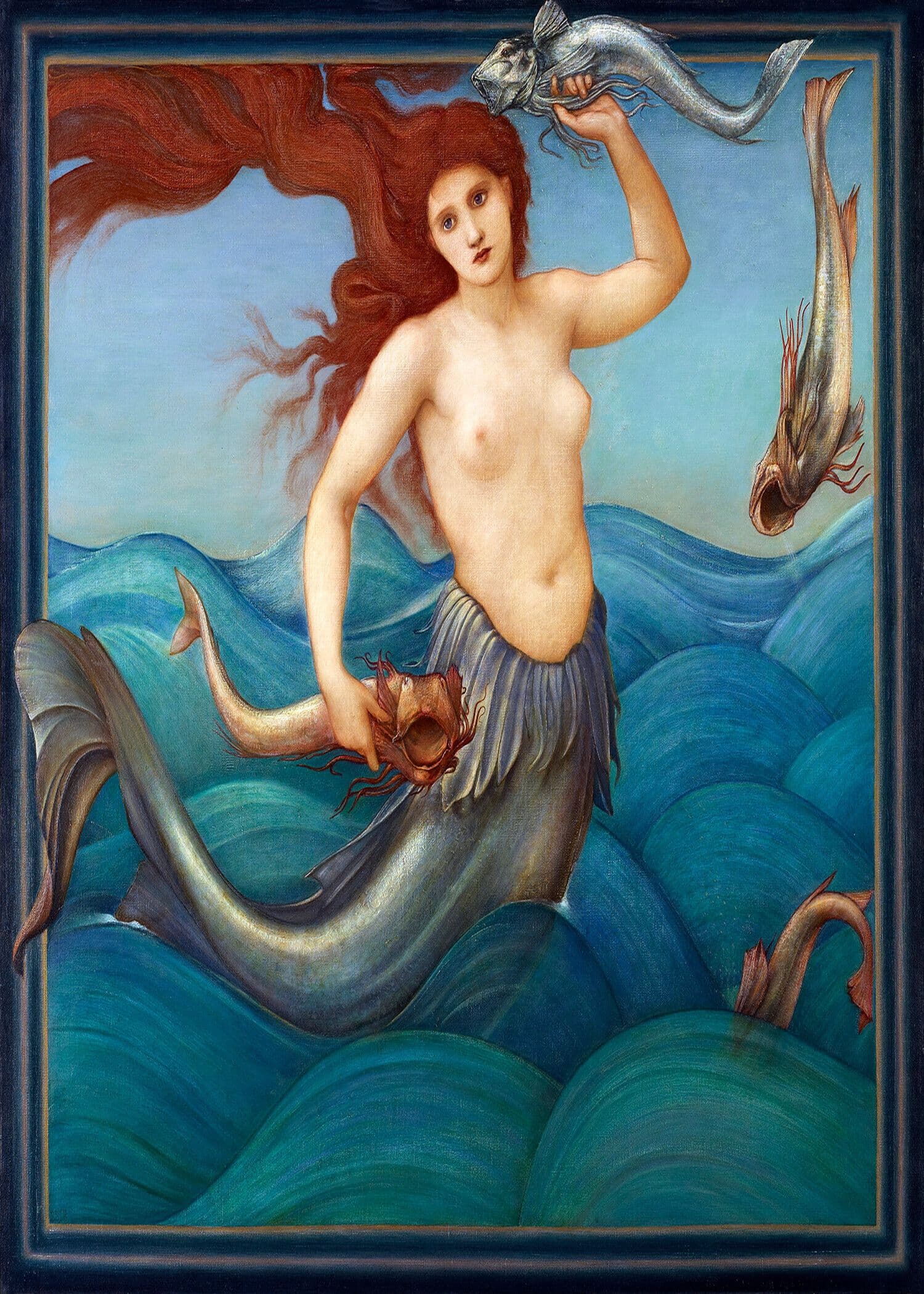
Edward Burne-Jones
View all artwork by Edward Burne-Jones
Edward Burne-Jones was a British painter and designer who became the leading figure of the later Pre-Raphaelite movement and a major influence on the Aesthetic and Symbolist movements. Born in Birmingham, Burne-Jones initially studied theology at Oxford, where he met William Morris, beginning a lifelong friendship and collaboration. His paintings often depicted scenes from Arthurian legend, classical mythology, and fairy tales, rendered in a highly refined, decorative manner with pale, ethereal color schemes. His major works include the "Briar Rose" series and illustrations for the Kelmscott Chaucer.
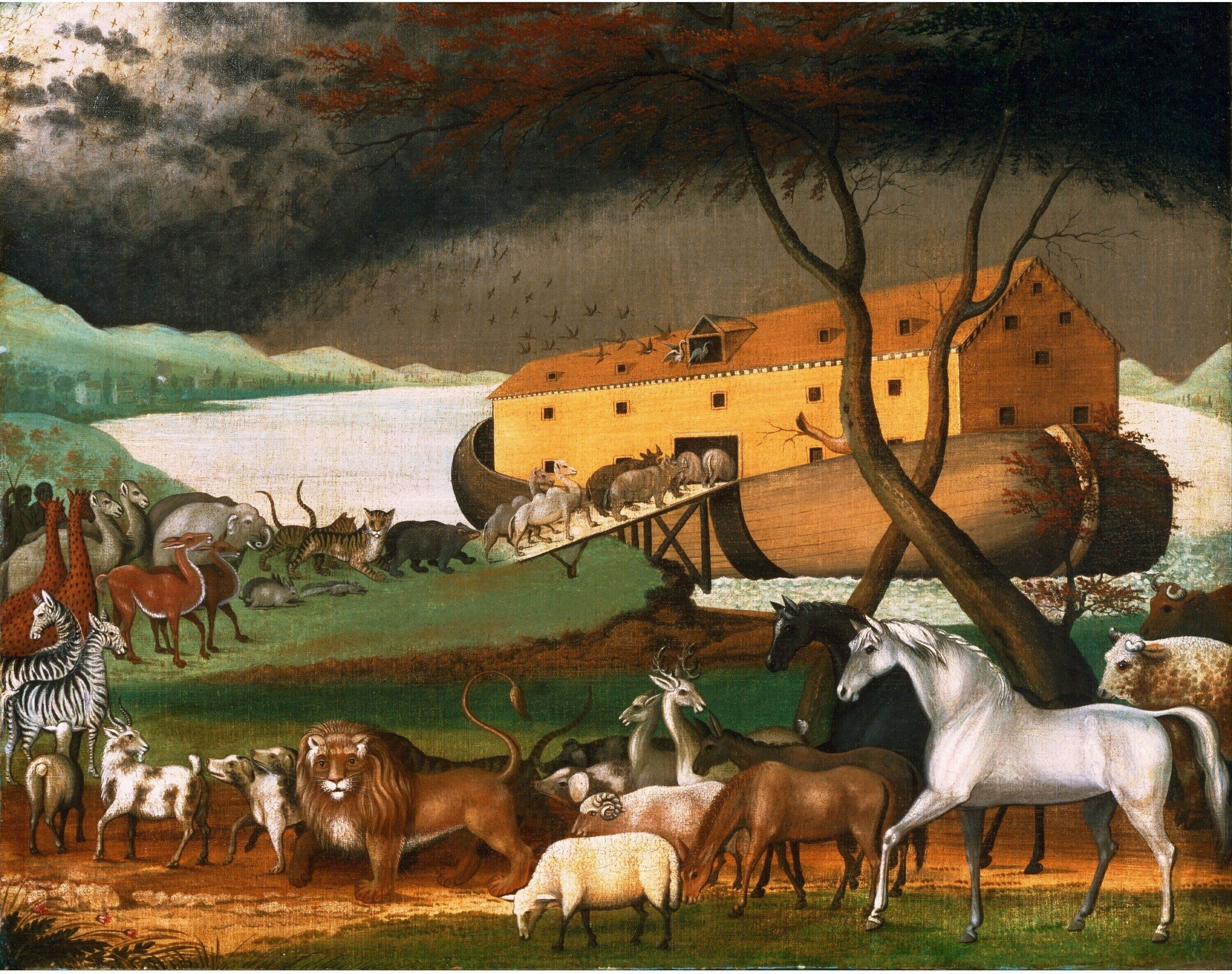
Edward Hicks
View all artwork by Edward Hicks
Edward Hicks was an American folk painter and Quaker minister best known for his multiple versions of "The Peaceable Kingdom," paintings that combined religious symbolism with American landscape. Born in Bucks County, Pennsylvania, Hicks worked as a sign and coach painter before devoting himself to fine art and religious ministry. His "Peaceable Kingdom" paintings, of which he created over sixty versions, depicted the biblical prophecy of Isaiah, where predator and prey coexist peacefully, often combined with scenes of William Penn's treaty with Native Americans.

Edwin Blashfield
View all artwork by Edwin Blashfield
Edwin Howland Blashfield was an American painter renowned for his monumental murals that adorn some of the most important public buildings in the United States. Born in New York City, Blashfield studied in Paris under Léon Bonnat, becoming thoroughly grounded in French academic painting traditions. His most celebrated works include murals in the Library of Congress, the dome of the Minnesota State Capitol, and numerous other civic buildings and churches. As a leading figure in the American Renaissance movement, he believed that art should serve public, didactic purposes, beautifying civic spaces and inspiring viewers with noble themes.
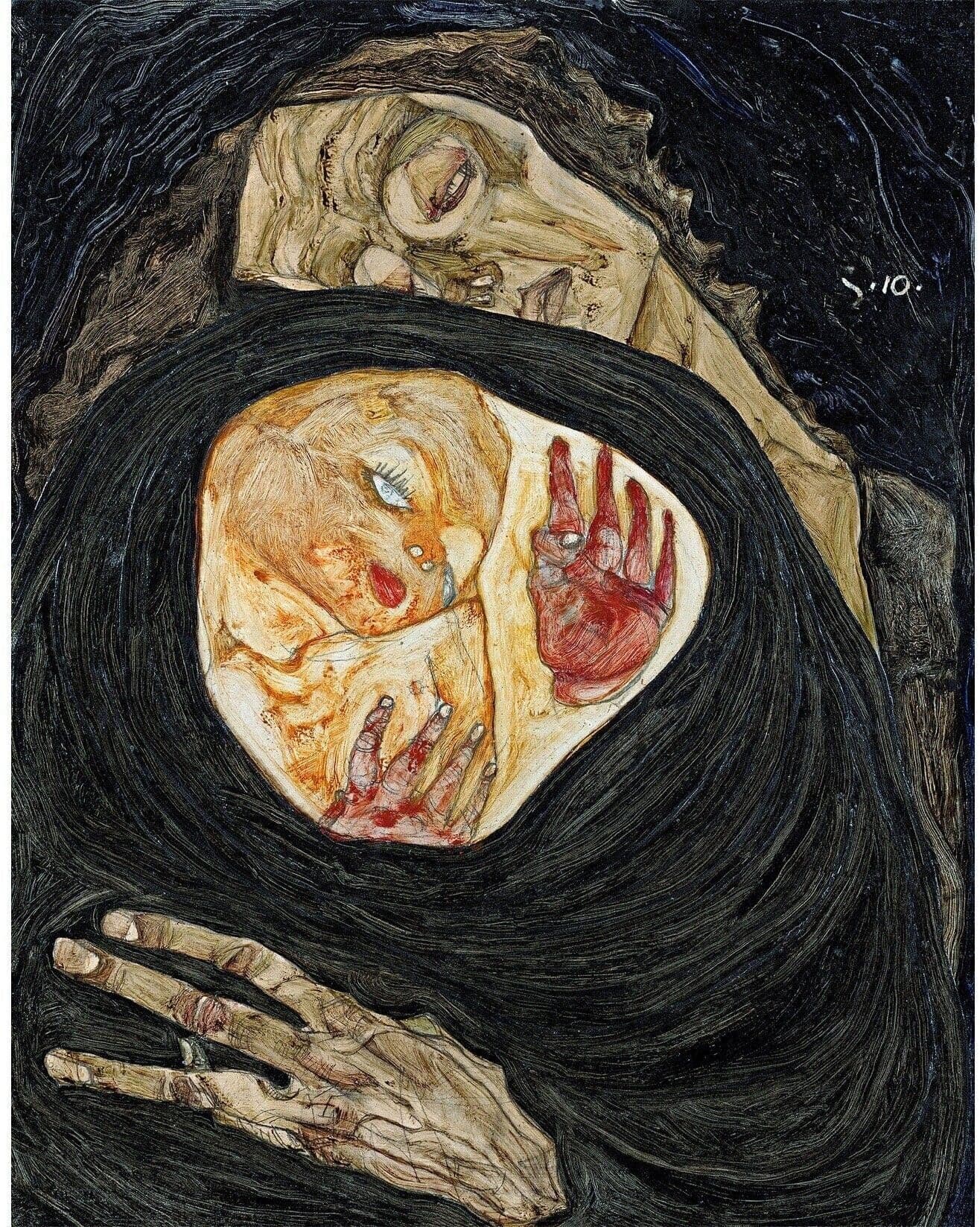
Egon Schiele
View all artwork by Egon Schiele
Egon Schiele was an Austrian painter whose raw, psychologically intense portraits and nudes represent some of the most distinctive and controversial works of early 20th-century Expressionism. Born in Tulln, Austria, Schiele demonstrated exceptional artistic talent from childhood. Initially influenced by Gustav Klimt, who became his mentor, Schiele quickly developed his own radical style characterized by contorted bodies, angular lines, and psychologically charged poses. Despite his short life—he died in the 1918 flu pandemic at age 28—Schiele created an astonishing body of work including hundreds of paintings and thousands of drawings.
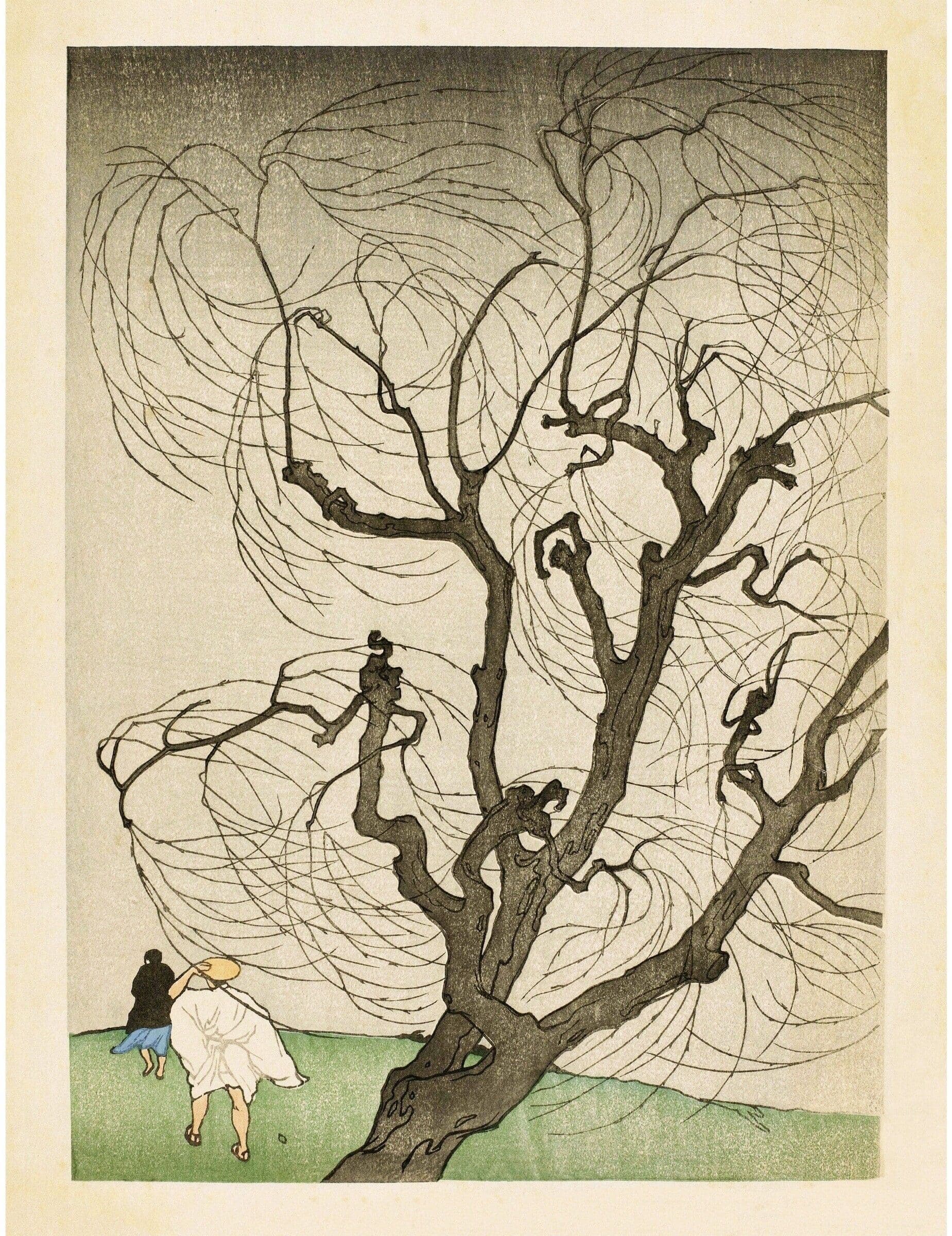
Emil Orlik
View all artwork by Emil Orlik
Emil Orlik was a Czech-Austrian painter, printmaker, and photographer who played a significant role in introducing Japanese artistic techniques to Central European art. Born in Prague, Orlik studied at the Munich Academy before traveling extensively, including an influential journey to Japan in 1900-1901. In Japan, he studied traditional woodblock printing techniques, becoming one of the few Western artists to receive formal training in this art form. His portraits, including those of prominent cultural figures like Gustav Mahler and Albert Einstein, are characterized by psychological insight and technical refinement.
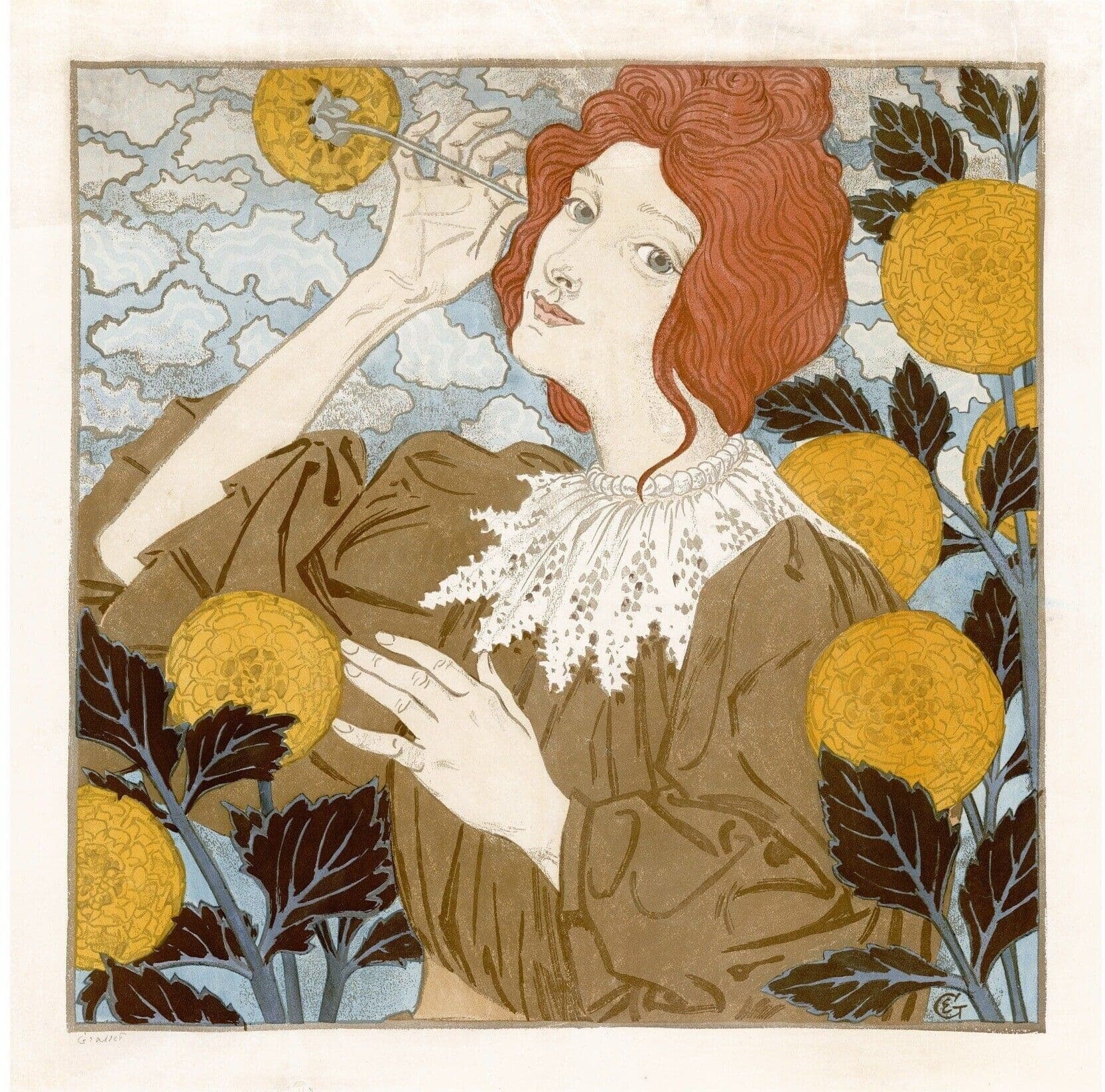
Eugene Grasset
View all artwork by Eugene Grasset
Eugène Grasset was a Swiss-French decorative artist and designer who became one of the pioneers of Art Nouveau and a leading figure in French poster art. Born in Lausanne, Switzerland, Grasset trained as an architect before moving to Paris, where he worked as an illustrator, designer, and educator. His distinctive style combined medieval and Japanese influences with modern sensibilities, featuring flowing organic lines, flat areas of color, and intricate decorative details. Grasset created influential posters for theaters, exhibitions, and commercial products, helping to establish poster design as a respected art form.

Fidelia Bridges
View all artwork by Fidelia Bridges
Fidelia Bridges was an American painter celebrated for her delicate watercolors of birds, flowers, and New England landscapes. Born in Salem, Massachusetts, Bridges overcame considerable adversity, including the early loss of her parents, to pursue an artistic career at a time when few professional opportunities existed for women artists. She studied with William Trost Richards and at the Pennsylvania Academy of the Fine Arts, developing a meticulous technique particularly suited to watercolor painting. Bridges specialized in precise, scientifically accurate depictions of wildflowers, grasses, birds, and insects, often showing them in their natural habitats with remarkable attention to botanical and ornithological detail. Her work appealed to Victorian tastes for nature study and the beauty of common native plants and creatures. Unlike many male contemporaries who painted dramatic Western or European landscapes, Bridges focused on intimate views of the American countryside, particularly Connecticut meadows and marshlands. She achieved considerable success during her lifetime, exhibiting at major venues and selling her work through prominent galleries. Bridges represents an important example of a woman artist who achieved professional recognition in the 19th century through technical excellence and a distinctive artistic voice.
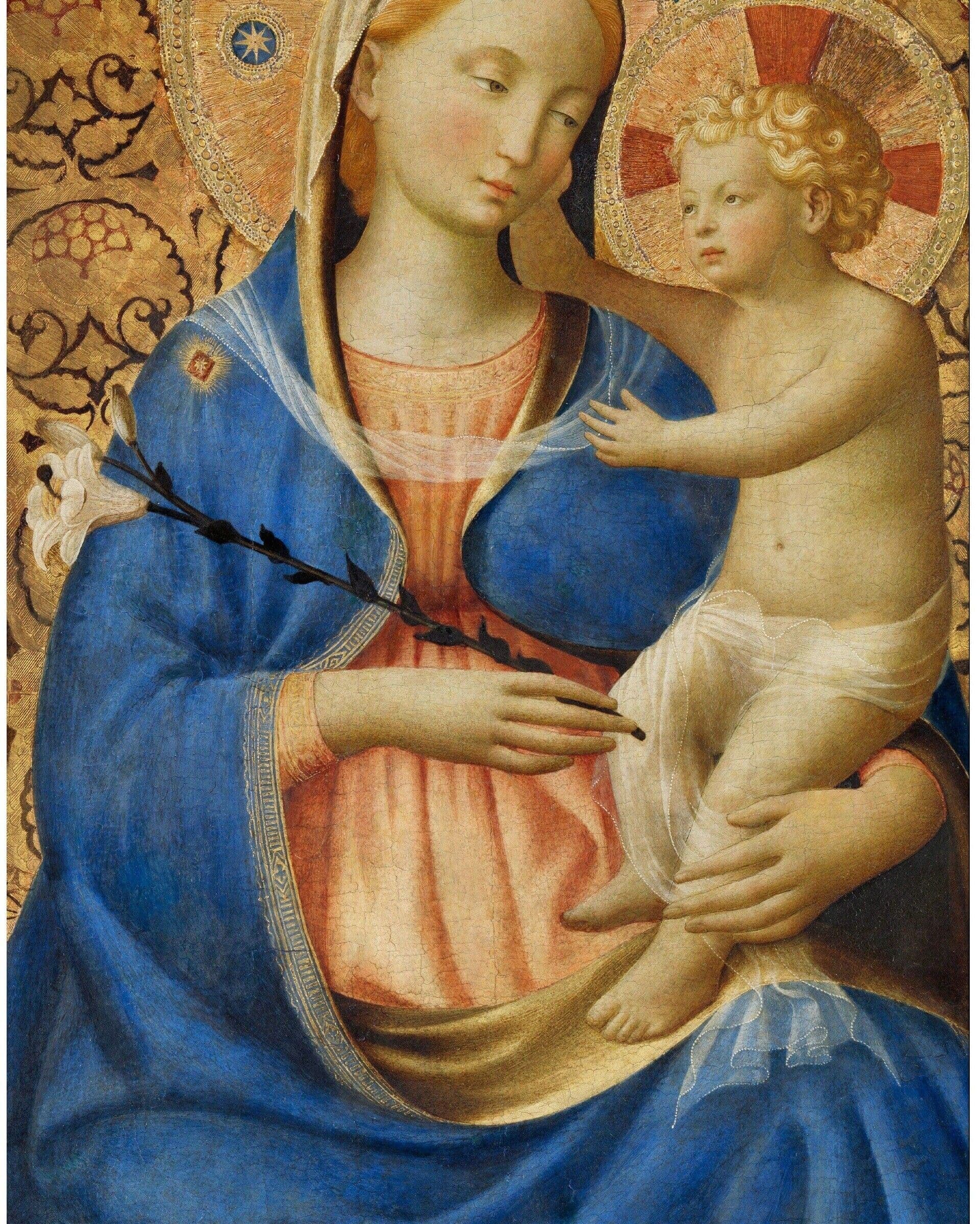
Fra Angelico
View all artwork by Fra Angelico
Fra Angelico, born Guido di Pietro, was an Early Renaissance painter whose profound spiritual devotion infused his religious works with a unique combination of technical innovation and mystical beauty. A Dominican friar working primarily in Florence and Rome during the early 15th century, Fra Angelico helped pioneer Renaissance painting techniques while maintaining the spiritual intensity of medieval art. His frescoes in the Convent of San Marco in Florence represent a high point of Early Renaissance art, combining mastery of perspective, atmospheric effects, and naturalistic detail with deeply felt religious expression. Fra Angelico was among the first to adopt linear perspective and to create convincing three-dimensional space, while his use of color remained brilliant and jewel-like. His altarpieces and panel paintings depict sacred subjects with a combination of theological sophistication and aesthetic refinement that influenced generations of later artists. Vasari praised him for never painting a crucifix without weeping, and this emotional authenticity pervades his work. Fra Angelico represents the ideal of the artist-monk, whose technical mastery served spiritual purposes and whose innovations advanced both artistic technique and devotional expression.
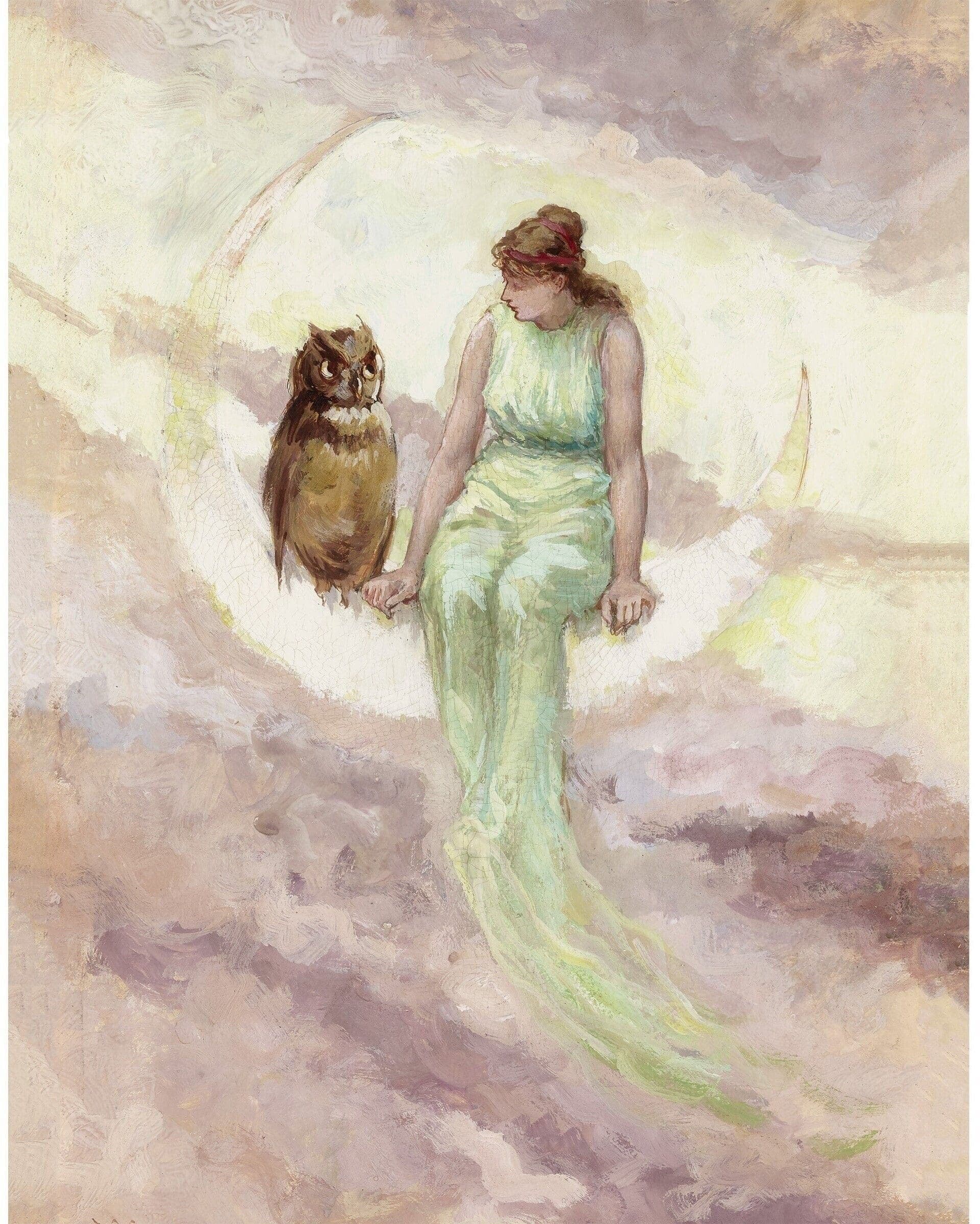
Frederick Church
View all artwork by Frederick Church
Frederic Edwin Church was one of the leading figures of the Hudson River School and perhaps the most celebrated American landscape painter of the 19th century. Born in Hartford, Connecticut, Church was the only student accepted for formal training by Thomas Cole, founder of the Hudson River School. Church developed an approach to landscape painting that combined meticulous observation, scientific interest, and theatrical drama, creating vast panoramic views that captured both geographic specificity and sublime grandeur. He traveled extensively, seeking dramatic landscapes in South America, the Arctic, the Mediterranean, and the American West, which he transformed into monumental paintings that were exhibited as single-picture shows and drew huge crowds. Works like "The Heart of the Andes" and "Niagara" exemplify his ability to create compositions of extraordinary detail and atmospheric effect. Church's paintings reflected contemporary interests in natural theology, manifest destiny, and scientific exploration, presenting nature as both a subject for careful study and a source of spiritual awe. His combination of romantic sensibility with quasi-scientific observation made him one of the most successful and influential American artists of his era.
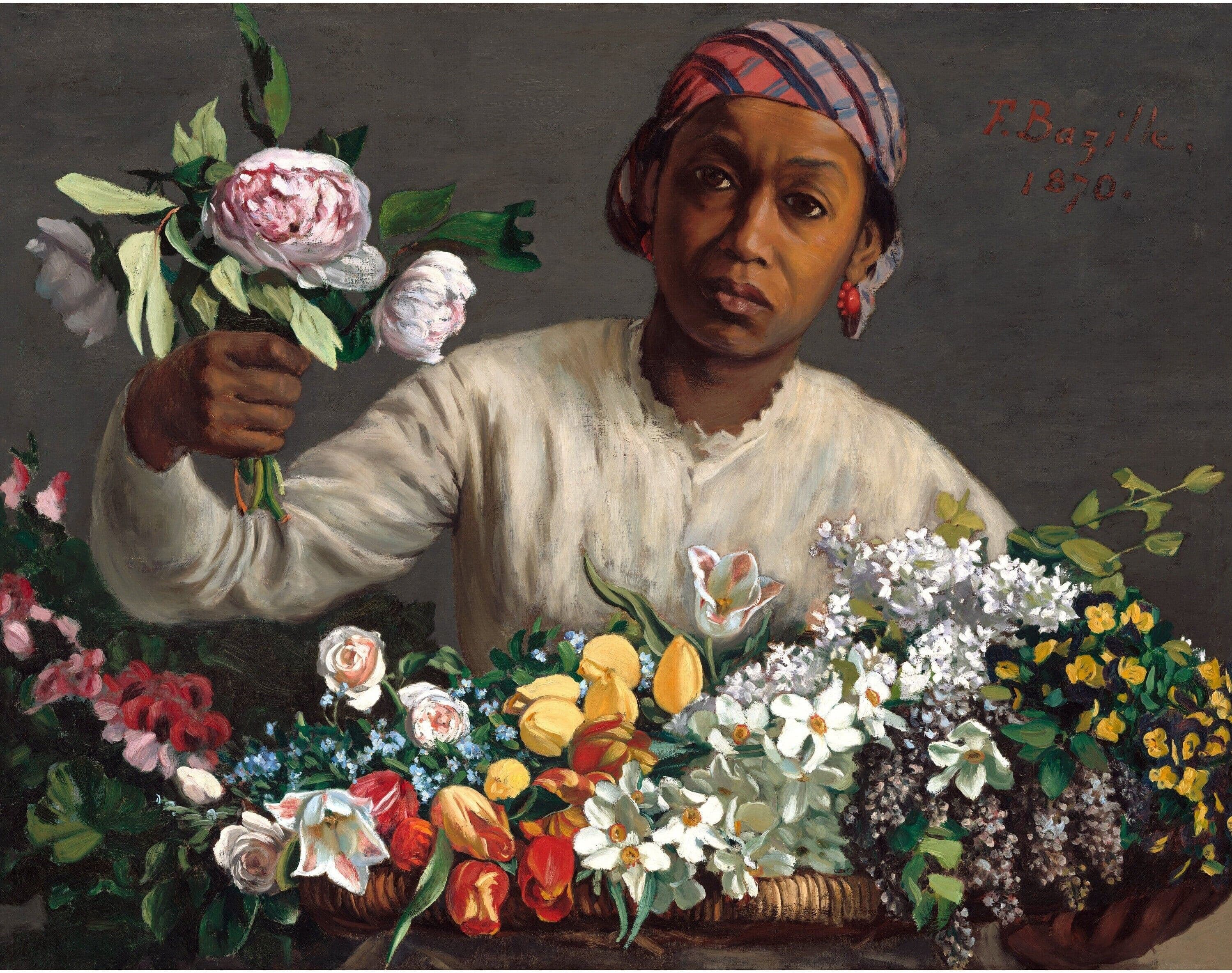
Frédéric Bazille
View all artwork by Frédéric Bazille
Frédéric Bazille was a French Impressionist painter whose promising career was tragically cut short when he was killed in action during the Franco-Prussian War at age 28. Born to a wealthy Protestant family in Montpellier, Bazille moved to Paris ostensibly to study medicine but devoted himself increasingly to painting. He became part of the early Impressionist circle, sharing a studio at various times with Claude Monet, Pierre-Auguste Renoir, and Alfred Sisley. Bazille's work bridges academic training and Impressionist innovation, combining careful drawing and structured composition with bright, natural light and outdoor settings. His paintings often depicted family members and friends in sun-drenched gardens or interiors, rendered with a combination of formal organization and fresh, direct observation. Bazille was particularly innovative in his treatment of figures in outdoor settings, solving compositional problems that would occupy Impressionists throughout the 1870s. Unlike his more impoverished colleagues, Bazille's financial security allowed him to support fellow artists and to experiment without commercial pressure. His early death deprived French art of a major talent, though his surviving works demonstrate his significance to the development of Impressionism.

Furuya Korin
View all artwork by Furuya Korin
Furuya Korin was a Japanese artist active during the Meiji period who worked in traditional decorative painting styles while adapting them to modern contexts. Working in the tradition established by Ogata Kōrin and the Rinpa school, Furuya created elegant compositions featuring natural subjects rendered with simplified forms, bold outlines, and decorative patterns. His work represents the continuation of traditional Japanese aesthetic principles during a period of rapid modernization and Western influence. Like many Meiji-era artists, Furuya navigated between preserving traditional artistic values and adapting to new artistic and commercial demands. His paintings often featured seasonal flowers, birds, and landscapes executed with the refined technique and aesthetic sensibility characteristic of the Rinpa tradition. The decorative quality of his work made it particularly suitable for screens, scrolls, and other traditional formats that continued to be valued even as Western-style art gained prominence in Japan.

George Barbier
View all artwork by George Barbier
George Barbier was one of the most important French illustrators and designers of the Art Deco era, whose elegant pochoir prints captured the sophistication and stylish excess of 1920s Paris. Born in Nantes, Barbier studied at the École des Beaux-Arts and became a leading fashion illustrator, theatrical costume designer, and decorative artist. His distinctive style combined influences from Persian miniatures, ancient Greek vase painting, and Japanese prints with contemporary Art Deco aesthetics, creating images of remarkable refinement and exotic beauty. Barbier illustrated numerous deluxe editions of classic and contemporary literature, designed costumes for the Ballets Russes and other theatrical productions, and contributed fashion plates to prestigious journals like "Gazette du Bon Ton" and "Journal des Dames et des Modes." His work exemplified the Art Deco fascination with luxury, exoticism, and geometric stylization, depicting fashionable figures in elaborate costumes within highly decorative settings. Barbier's technical mastery of the pochoir process allowed him to achieve rich, luminous colors and precise detail in his prints. He represents the ideal of the complete artist-designer of the Art Deco period, working across multiple disciplines to create a unified aesthetic vision.
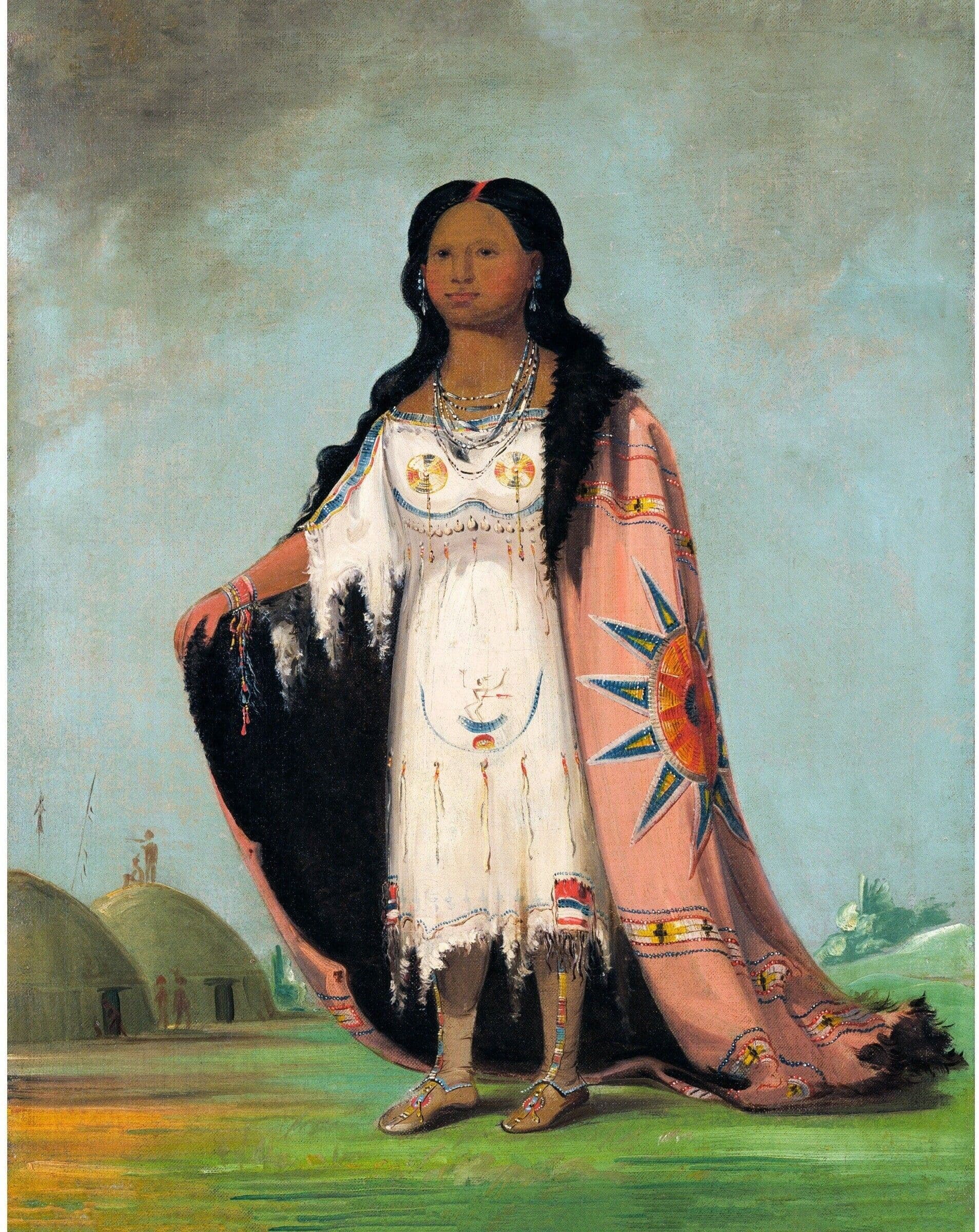
George Catlin
View all artwork by George Catlin
George Catlin was an American painter, author, and traveler who dedicated his career to documenting Native American peoples and cultures before they were transformed or destroyed by westward expansion. Largely self-taught as an artist, Catlin abandoned a law career to pursue painting, becoming convinced that Native American cultures should be recorded for posterity. Between 1830 and 1836, he traveled extensively throughout the Great Plains and beyond, visiting numerous tribes and creating hundreds of portraits and scenes of daily life, ceremonies, and landscapes. His ambitious "Indian Gallery" contained over 500 paintings and thousands of artifacts, which he exhibited throughout the United States and Europe. Catlin's work, while sometimes romanticized and reflecting the biases of his era, provides invaluable visual documentation of indigenous peoples, many of whom were depicted before sustained contact with Euro-American culture significantly altered their traditional ways of life. His ethnographic approach, combining artistic representation with written descriptions and collection of material culture, anticipated later anthropological methods. Despite financial difficulties and professional disappointments, Catlin's commitment to his self-appointed mission produced an irreplaceable record of 19th-century Native American life.
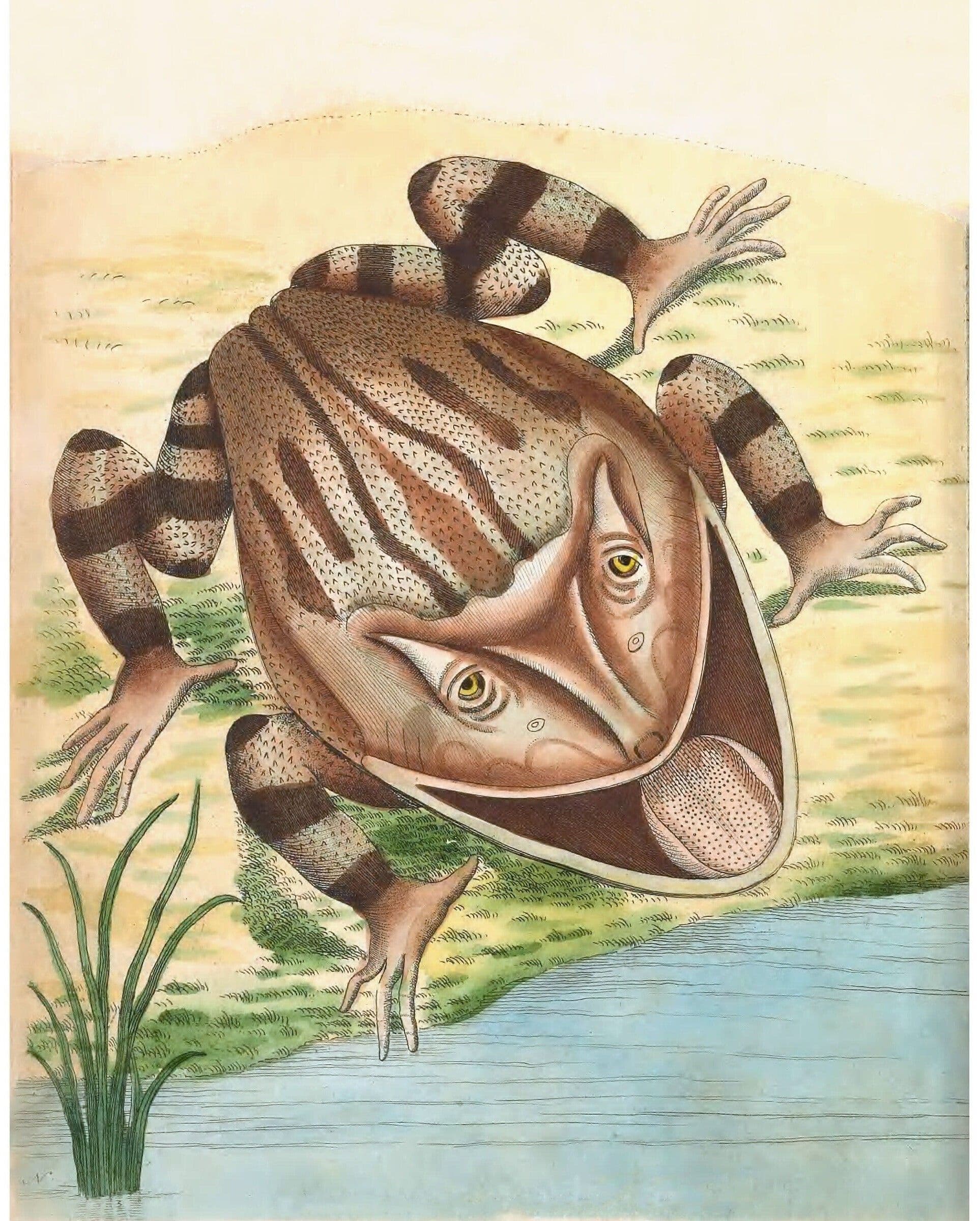
George Shaw
View all artwork by George Shaw
George Shaw was a British botanist and zoologist whose illustrated natural history works made significant contributions to scientific understanding and classification of exotic species during the age of global exploration. As keeper of the natural history collections at the British Museum, Shaw had access to specimens brought back from Captain Cook's voyages and other expeditions, which he described and illustrated in numerous publications. His most important work, "The Naturalist's Miscellany," published between 1789 and 1813, contained hundreds of hand-colored engravings depicting previously undescribed or little-known species from around the world. Shaw's illustrations combined scientific accuracy with aesthetic appeal, making natural history accessible to educated lay audiences while serving scholarly purposes. He was among the first to describe and illustrate many Australian animals, including the platypus, which Europeans initially believed to be a hoax. Shaw represents the Enlightenment tradition of natural history in which careful observation, systematic classification, and visual documentation combined to expand human understanding of the natural world.
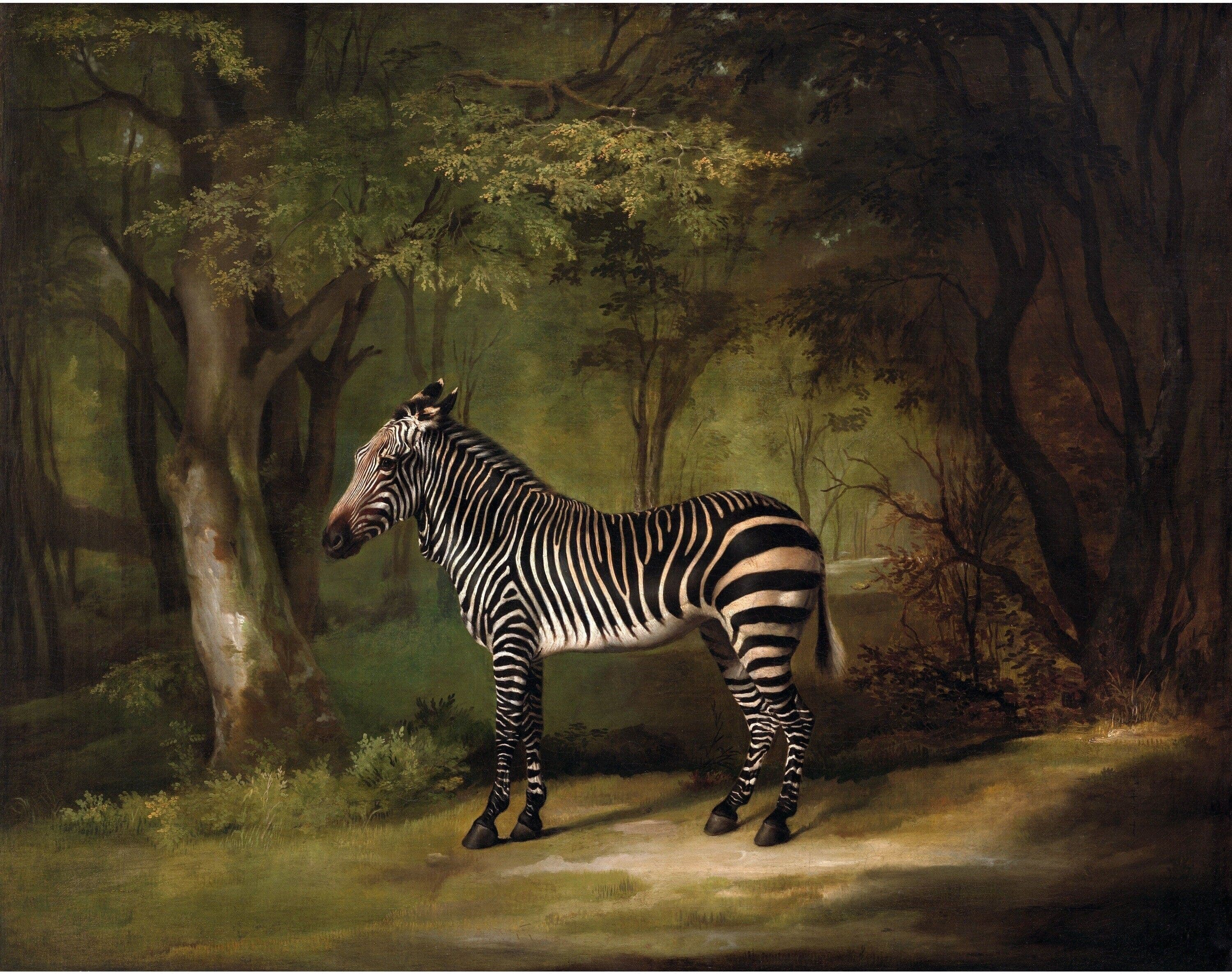
George Stubbs
View all artwork by George Stubbs
George Stubbs was an English painter renowned for his exceptional paintings of horses, which combined scientific accuracy with artistic beauty to create some of the most celebrated animal paintings in Western art. Born in Liverpool, Stubbs was largely self-taught, developing his skills through anatomical study and direct observation. His groundbreaking work "The Anatomy of the Horse," published in 1766 after years of dissection and study, demonstrated his commitment to understanding animal structure at the most fundamental level. This knowledge informed his paintings, which depict horses with unprecedented anatomical accuracy while also capturing their individual character and spirit. Stubbs worked for aristocratic patrons, painting their prized horses, sporting scenes, and exotic animals from private menageries. His major works, including the "Whistlejacket" portrait and paintings of horses attacked by lions, combine naturalistic detail with dramatic composition and subtle psychological dimensions. Beyond horses, Stubbs painted portraits, conversation pieces, and pioneering paintings on enamel. His scientific approach to art and his elevation of animal painting to the status of history painting make him one of the most original and influential British artists of the 18th century.

Gertrude Norrie
View all artwork by Gertrude Norrie
Gertrude Norrie was a British painter and illustrator active in the late 19th and early 20th centuries, known for her watercolor landscapes and illustrations of rural life. Working during a period when increasing numbers of women were establishing professional artistic careers, Norrie created works characterized by their delicate technique, sensitive observation of nature, and quiet charm. She exhibited at the Royal Academy and other major venues, building a reputation for her refined watercolors depicting English countryside scenes, gardens, and coastal views. Her work reflects the influence of both the English watercolor tradition and contemporary movements toward plein-air painting and naturalistic observation. Like many women artists of her generation, Norrie navigated limited opportunities and institutional barriers while creating a significant body of work that demonstrated technical proficiency and artistic sensibility.
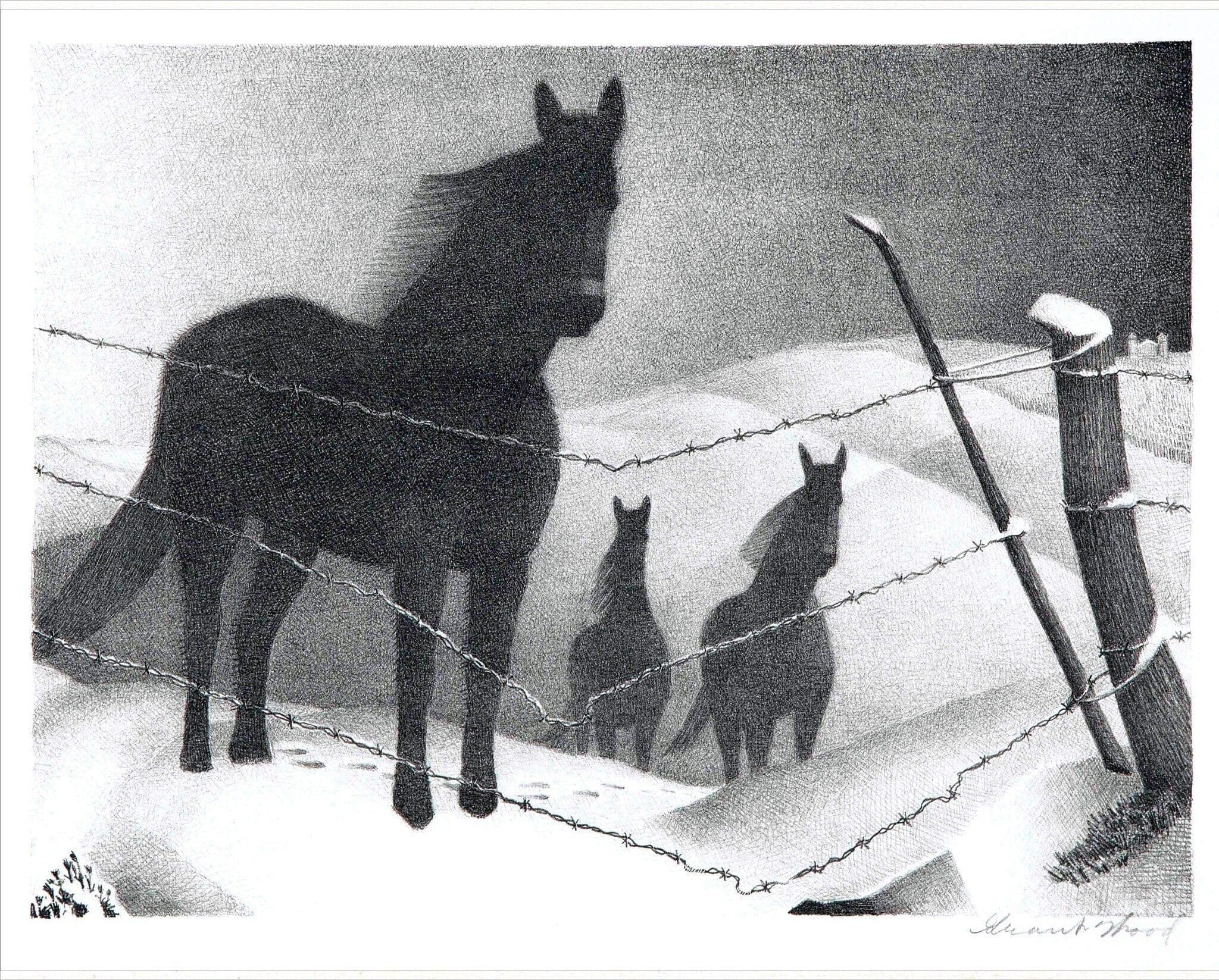
Grant Wood
View all artwork by Grant Wood
Grant Wood was an American painter who became one of the leading figures of American Regionalism, creating iconic images of rural Midwestern life that remain among the most recognizable works of American art. Born and raised in Iowa, Wood studied art in Minneapolis, Chicago, and Europe, where he was particularly influenced by early Netherlandish painting. Returning to Iowa, he developed a distinctive style that combined the precision and clarity of Northern Renaissance painting with contemporary American subject matter. His most famous work, "American Gothic," painted in 1930, has become an iconic image of American culture, depicting a farmer and his daughter in front of a Gothic Revival house with an expression of stern dignity. Wood's paintings of rolling Iowa farmland, rendered with smooth surfaces and simplified forms, present an idealized vision of American rural life during the Depression era. As a regional artist consciously working against the dominance of European modernism and New York sophistication, Wood argued for the validity and importance of distinctly American subjects and styles. His work, while often interpreted as satirical, represents a genuine attempt to celebrate Midwestern values and landscapes.

H. Call
View all artwork by H. Call
H. Call was an American artist active in the 19th century whose works exemplify the folk art tradition of decorative painting. Little biographical information survives about Call, which is common for many folk artists who worked outside academic or professional artistic circles. The surviving works attributed to H. Call demonstrate the characteristic features of American folk art: bold compositions, flat perspectives, vibrant colors, and decorative sensibility that prioritized pattern and design over naturalistic representation. Folk artists like Call created works for local communities, producing portraits, landscapes, still lifes, and decorative pieces that served both aesthetic and practical purposes. These artists developed personal visual languages that, while untutored in academic conventions, often achieved remarkable sophistication and expressive power.
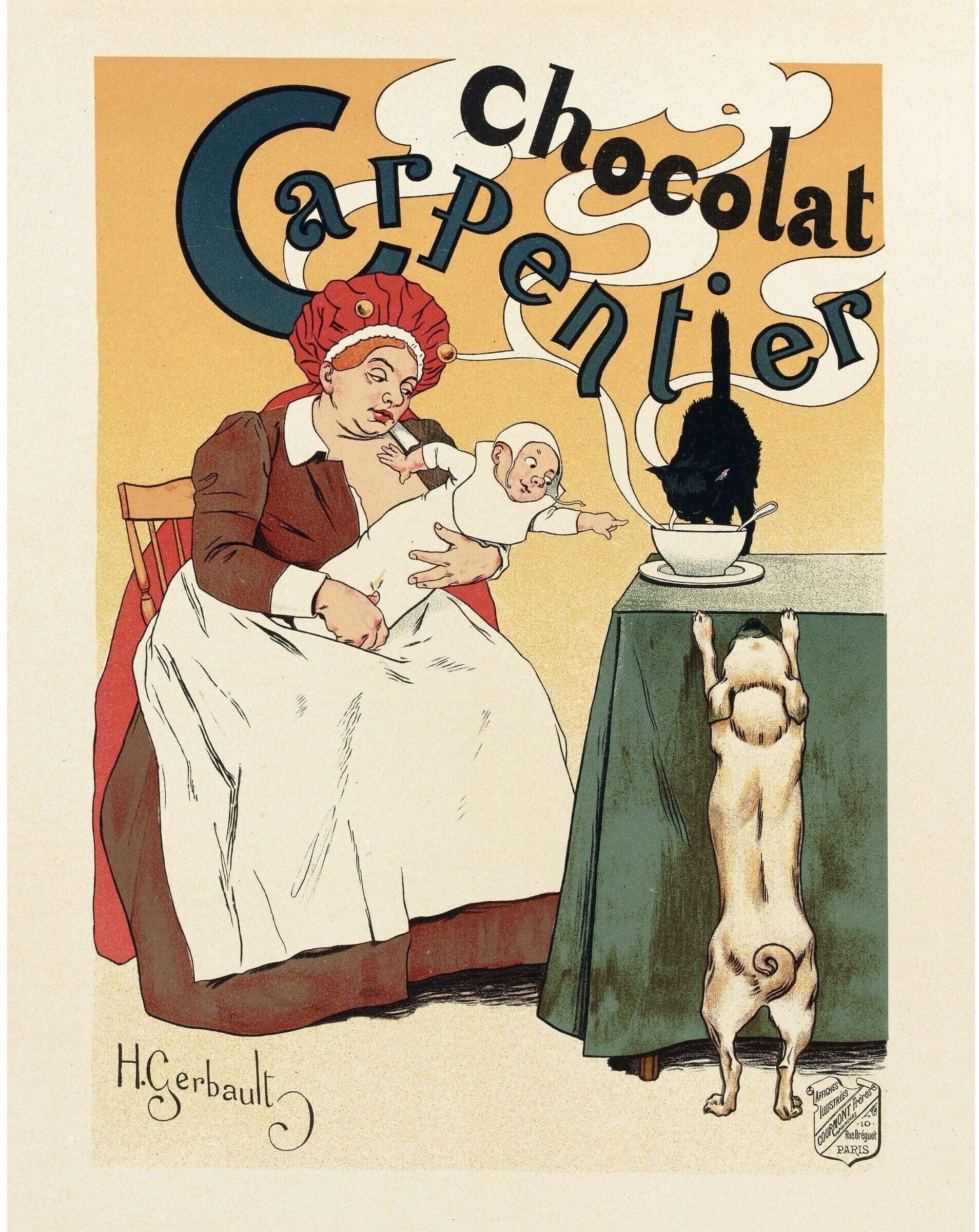
H. Gerbault
View all artwork by H. Gerbault
Henri Gerbault was a French illustrator and caricaturist active during the Belle Époque, known for his humorous and satirical drawings that captured Parisian social life and contemporary fashions. Working for popular illustrated journals and magazines, Gerbault created images that combined social commentary with decorative appeal, depicting the manners, fashions, and follies of bourgeois society with wit and artistic skill. His style reflected the influence of Art Nouveau in its flowing lines and decorative quality, while his subjects addressed contemporary social types, romantic intrigues, and the comedy of modern urban life. Illustrators like Gerbault played an important role in Belle Époque visual culture, creating images that were simultaneously commercial products, social documents, and works of graphic art.
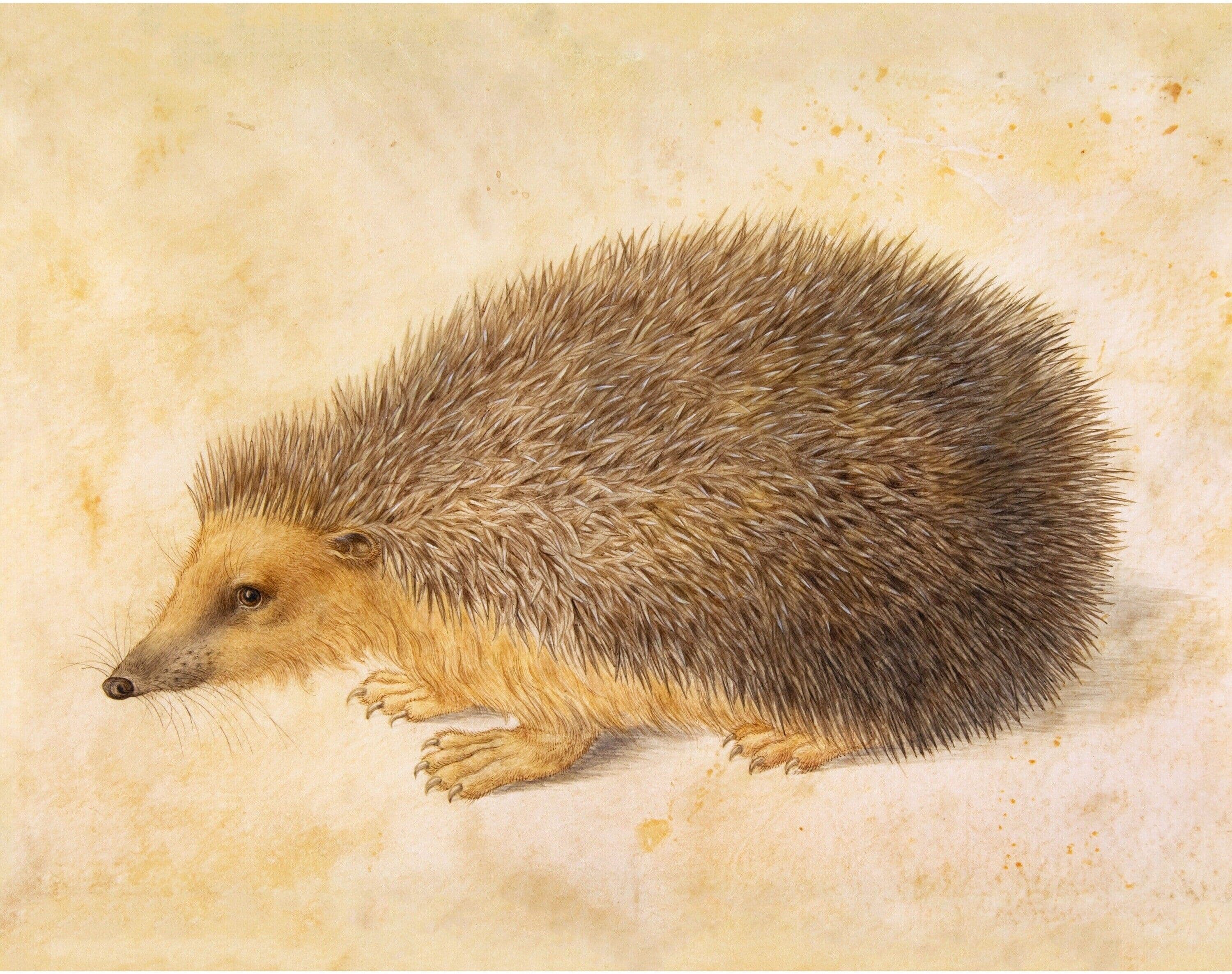
Hans Hoffman
View all artwork by Hans Hoffman
Hans Hoffmann was a German painter and draftsman of the late Renaissance, celebrated for his remarkably detailed and lifelike studies of animals, plants, and natural specimens. Working in Nuremberg, Hoffmann had access to works by Albrecht Dürer and became an expert copyist and interpreter of Dürer's nature studies, while also creating original works of exceptional quality. His watercolors and drawings of animals, particularly hares, squirrels, and various birds, demonstrate extraordinary observational skills and technical mastery. Hoffmann served as court painter to Rudolf II in Prague, where the emperor's Kunstkammer (cabinet of curiosities) provided access to exotic specimens and encouraged the detailed study of natural wonders. His work represents the Renaissance fascination with the accurate depiction of nature as a form of understanding divine creation, combining scientific observation with artistic virtuosity. Hoffmann's nature studies were treasured by collectors and influenced subsequent generations of natural history artists.
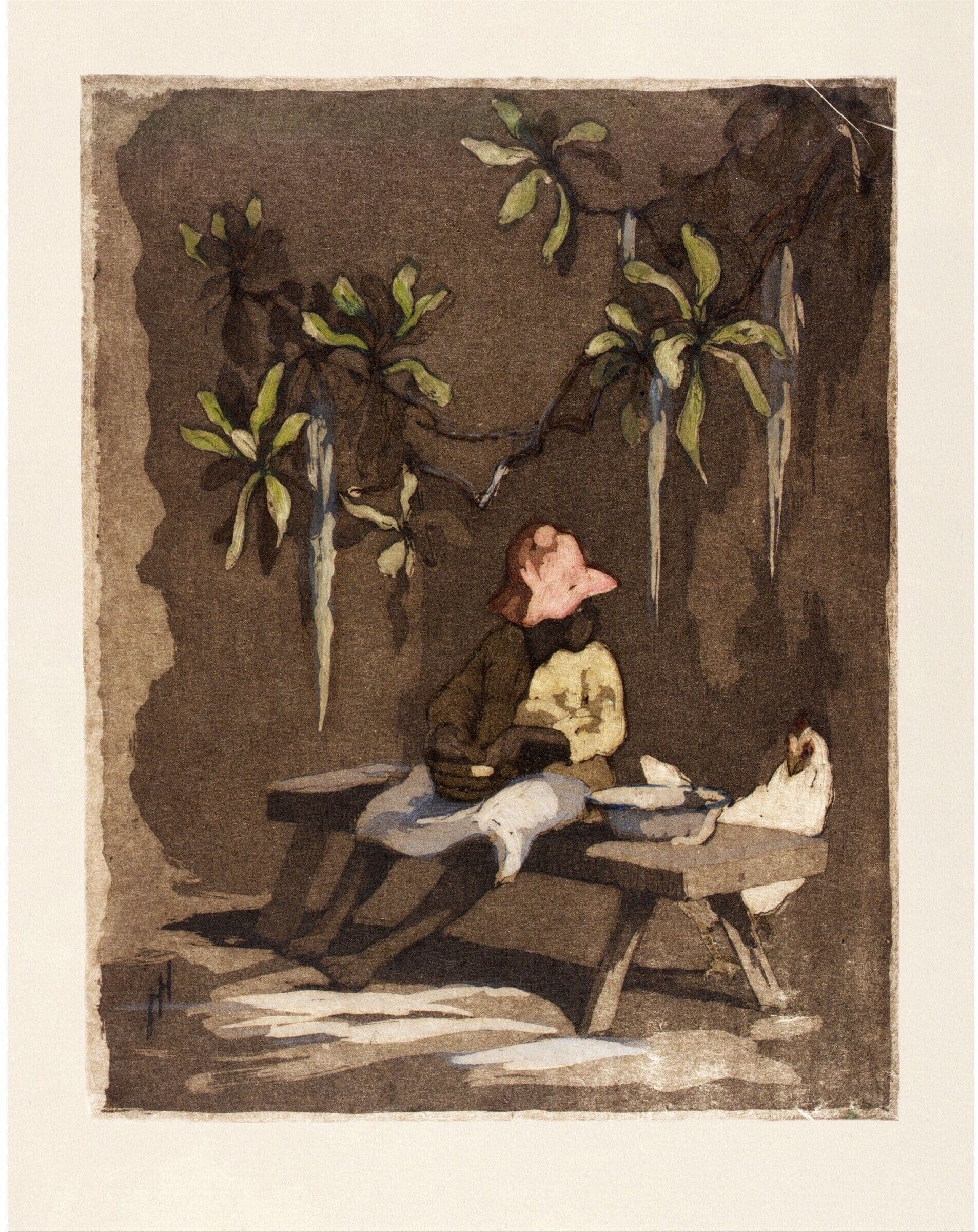
Helen Hyde
View all artwork by Helen Hyde
Helen Hyde was an American printmaker who became one of the most accomplished Western practitioners of Japanese woodblock printing techniques. Born in Lima, New York, and raised in California, Hyde studied art in San Francisco, New York, and Berlin before traveling to Japan in 1899. There she learned traditional woodblock printing methods, working with Japanese craftsmen and immersing herself in Japanese culture and aesthetics. Her prints typically depicted Japanese women and children in everyday activities, rendered with a combination of Western compositional approaches and Japanese technical and aesthetic sensibilities. Hyde's work demonstrated genuine respect for and understanding of Japanese culture while maintaining her identity as an American artist. She achieved significant commercial and critical success, exhibiting internationally and helping to introduce Western audiences to the possibilities of woodblock printing as a fine art medium. Her prints are characterized by delicate color harmonies, refined composition, and sensitive treatment of her subjects, bridging Eastern and Western artistic traditions with skill and sensitivity.
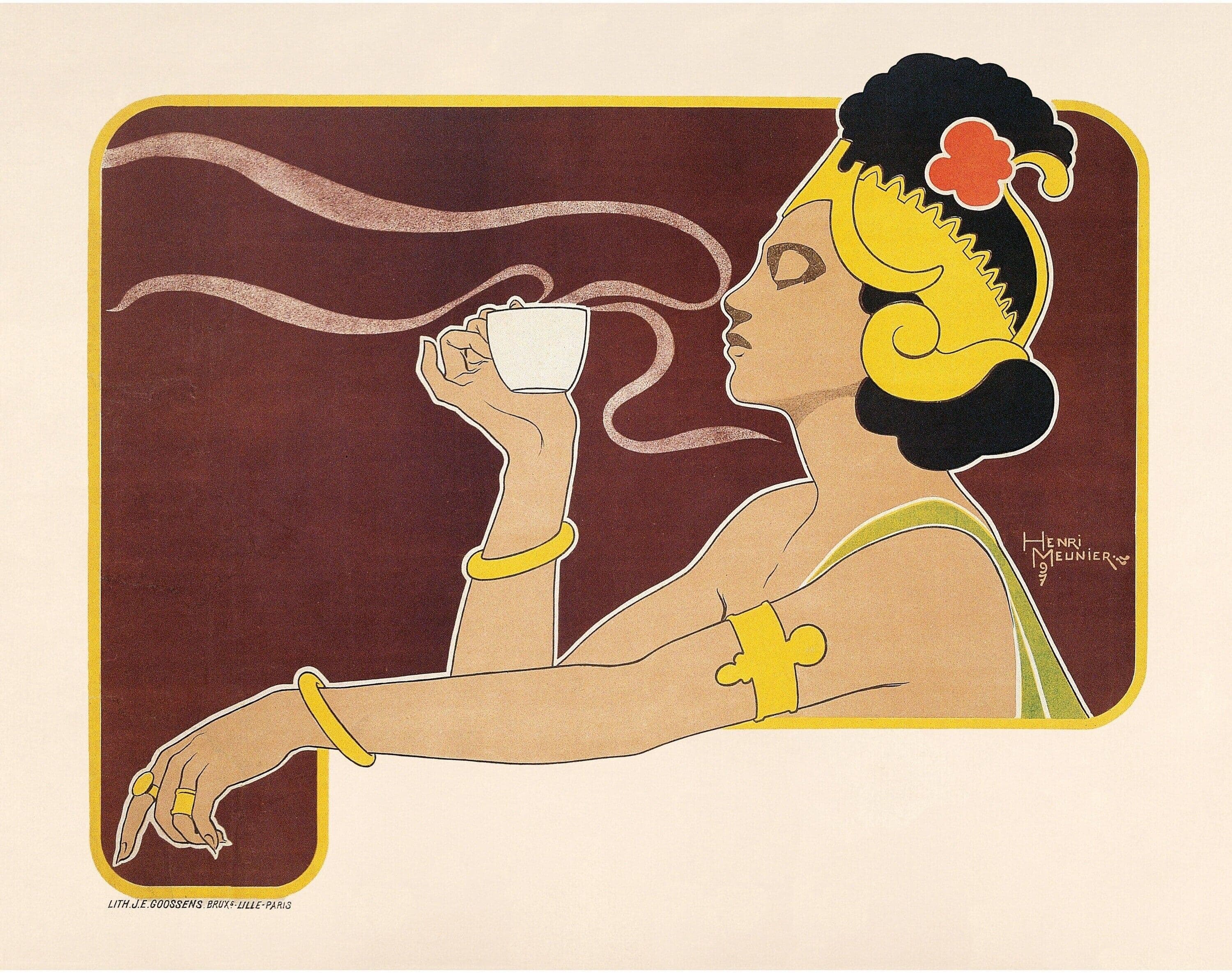
Henri Meunier
View all artwork by Henri Meunier
Henri Meunier was a Belgian painter, illustrator, and poster artist who became one of the leading figures in the Art Nouveau movement. Born in Ixelles, Belgium, Meunier created works that perfectly embodied Art Nouveau principles: flowing organic lines, stylized natural forms, decorative integration of text and image, and a modern sensibility applied to commercial purposes. He designed numerous posters for exhibitions, products, and events, helping to establish poster art as a significant art form in Belgium and beyond. His style combined influences from Japanese prints, medieval manuscripts, and contemporary symbolism, creating images that were simultaneously modern and rooted in historical decorative traditions. Meunier also worked in illustration, decorative painting, and graphic design, representing the Art Nouveau ideal of the artist working across multiple media to create a unified aesthetic environment.
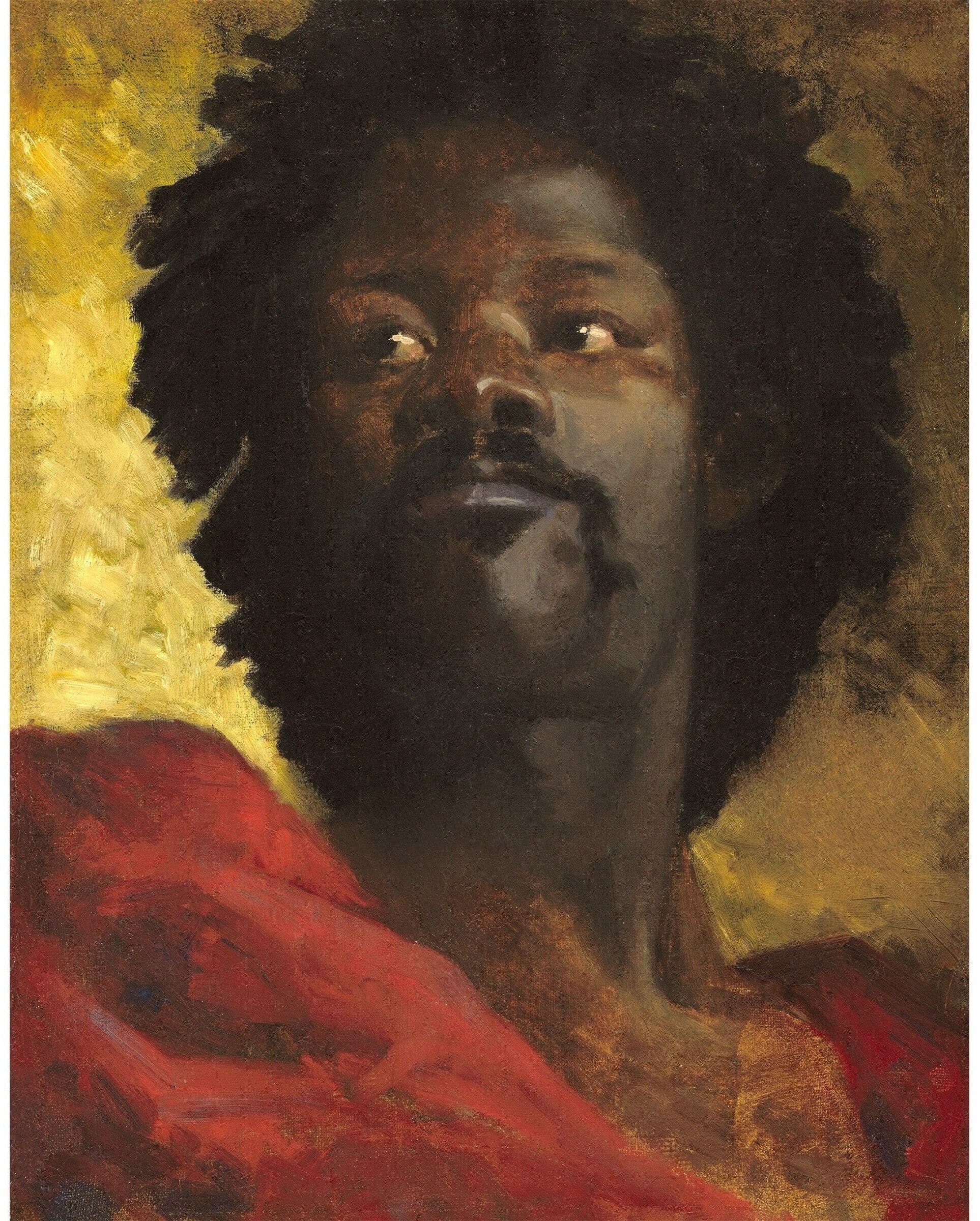
Henri Regnault
View all artwork by Henri Regnault
Henri Regnault was a French academic painter whose brilliant career was tragically cut short when he was killed in action during the Franco-Prussian War at age 27. Winner of the prestigious Prix de Rome, Regnault traveled extensively in Italy and Spain, where he was particularly influenced by Spanish art and North African subjects encountered during travels in Morocco. His paintings combined academic technique with bold coloration and exotic subjects, creating works of dramatic intensity and sensual beauty. Regnault's "Salomé" and "Summary Execution under the Moorish Kings of Granada" demonstrate his ability to create psychologically charged scenes rendered with technical brilliance. His approach to color, influenced by Delacroix and Spanish masters, was more vibrant and daring than typical academic work, pointing toward developments that would flourish in later decades. Regnault's early death deprived French art of a major talent and made him a romantic martyr-figure, though his surviving works demonstrate genuine artistic achievement beyond posthumous mythology.
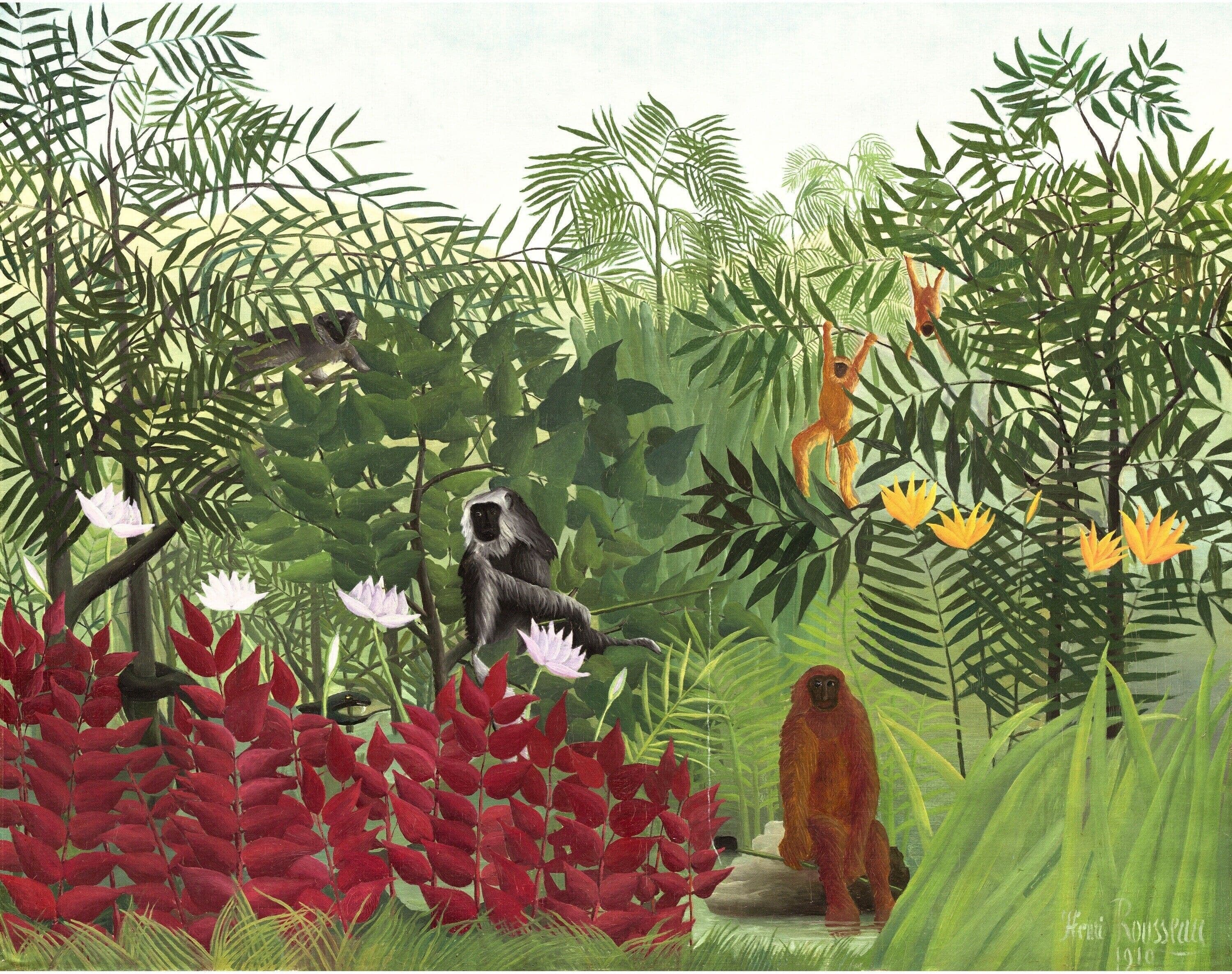
Henri Rousseau
View all artwork by Henri Rousseau
Henri Rousseau, known as "Le Douanier" (the customs officer) due to his career as a toll collector, was a French Post-Impressionist painter whose naive style and imaginative jungle scenes made him one of the most distinctive and influential artists of modern art. Self-taught and working outside academic traditions, Rousseau developed a unique visual language characterized by flat perspectives, precise detail, simplified forms, and dreamlike imagery. His jungle paintings, despite being created by someone who never left France, captured an exotic, primordial world populated by lions, tigers, and mysterious human figures amid lush vegetation. Rousseau was initially mocked by critics and the public, but avant-garde artists including Picasso, Delaunay, and Apollinaire recognized his genius. His work influenced numerous modern movements, including Surrealism and naive art, demonstrating that artistic power could come from imagination and personal vision rather than academic training. Rousseau's combination of childlike directness with sophisticated composition and symbolic content created works of haunting beauty and enduring fascination.

Hermenegildo Bustos
View all artwork by Hermenegildo Bustos
Hermenegildo Bustos was a Mexican painter working in a provincial folk art tradition who created remarkably sophisticated portraits and still lifes. Self-taught and working in the small town of Purísima del Rincón in Guanajuato, Bustos made his living as a jack-of-all-trades while painting on commission for local patrons. His portraits are characterized by direct, unflinching observation, meticulous detail, and psychological presence that transcends folk art conventions. Bustos painted local residents with remarkable honesty and dignity, creating a vivid record of 19th-century Mexican provincial life. His still lifes of fruit demonstrate an equally rigorous observation and an almost modernist sensibility in their simplification of form and emphasis on essential qualities. Largely unknown during his lifetime beyond his immediate region, Bustos was rediscovered in the 20th century and is now recognized as one of Mexico's most important 19th-century artists, whose work demonstrates that artistic excellence can emerge from any circumstance.
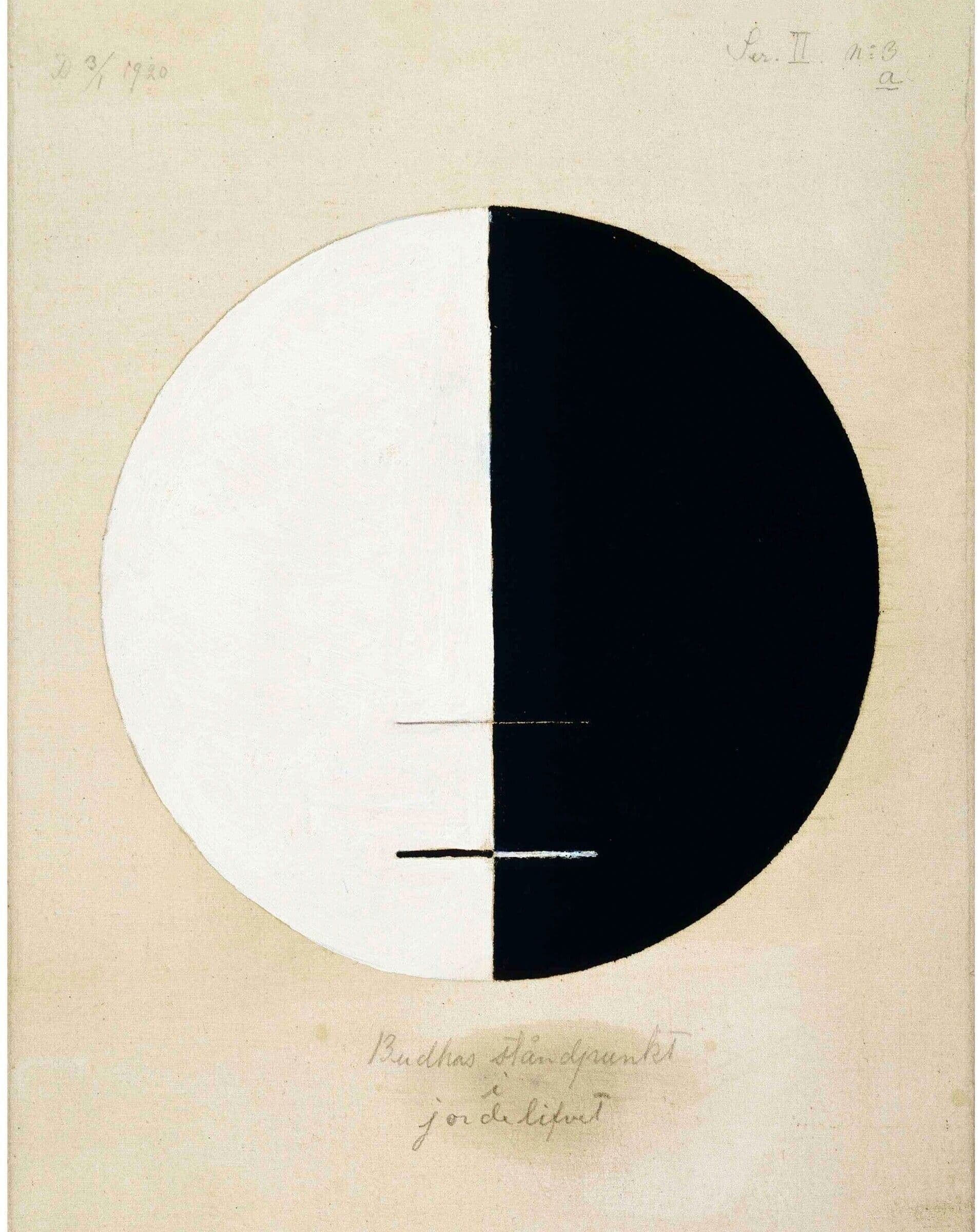
Hilma af Klint
View all artwork by Hilma af Klint
Hilma af Klint was a Swedish artist and mystic who created abstract paintings years before Kandinsky, Mondrian, and other artists typically credited with inventing abstraction. Trained at the Royal Swedish Academy of Fine Arts, af Klint initially worked as a conventional landscape and portrait painter. However, her involvement with spiritualism and theosophy led her to create a radical series of abstract works beginning in 1906, which she believed were created through her as a medium for spiritual forces. Her major series "Paintings for the Temple" consists of 193 works featuring geometric forms, botanical motifs, and symbolic imagery organized according to spiritual and mystical principles. Af Klint's abstractions preceded those of better-known male modernists, yet she exhibited little during her lifetime and stipulated that her abstract works not be shown until twenty years after her death. Since their public revelation, af Klint's paintings have been recognized as pioneering achievements in abstract art and have prompted reconsideration of modernism's origins and the role of women and spirituality in early abstraction.
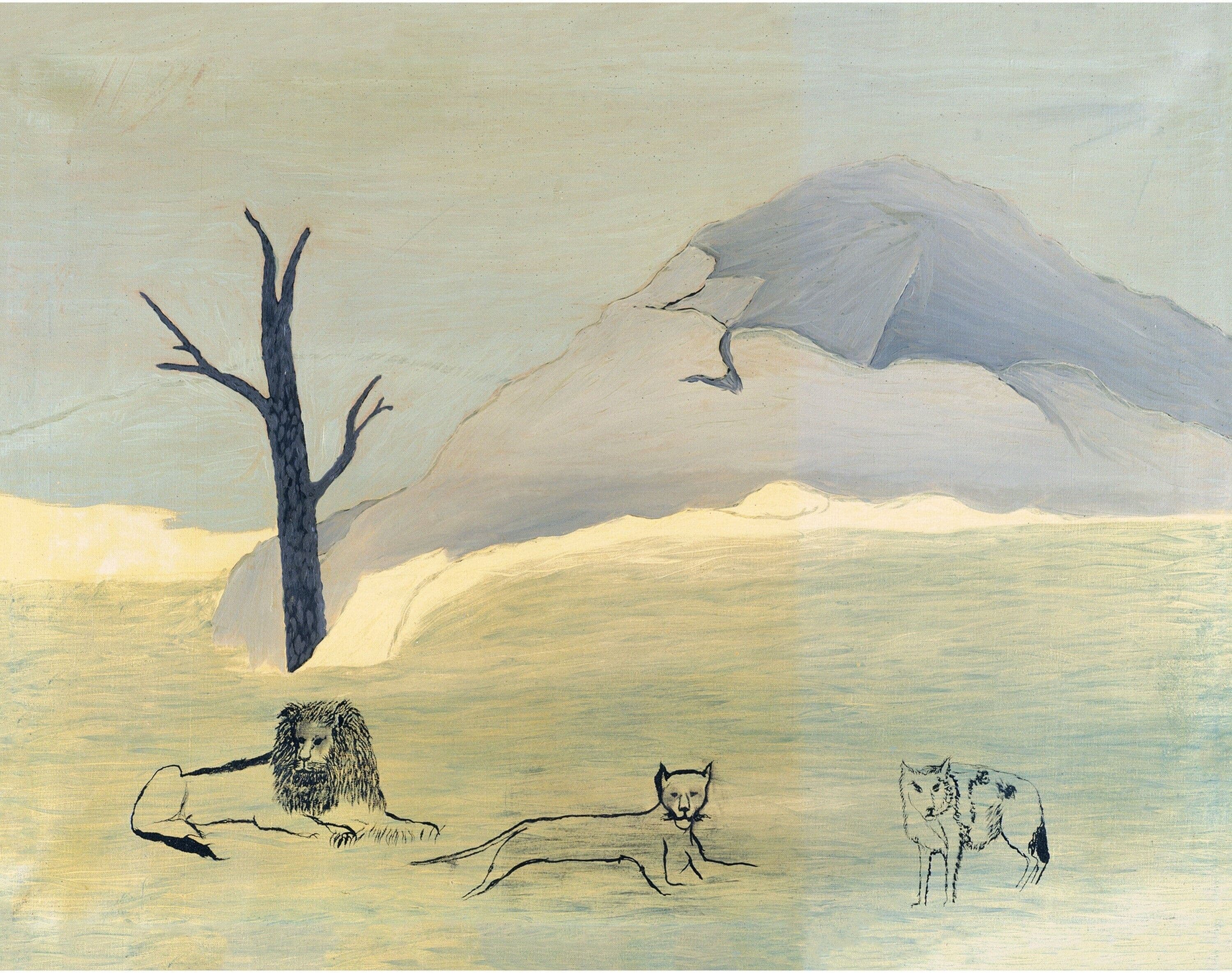
Horace Pippin
View all artwork by Horace Pippin
Horace Pippin was an African American self-taught artist whose powerful paintings addressed themes of war, memory, domestic life, and racial injustice. Born in Pennsylvania, Pippin worked various jobs before serving in World War I, where he was severely wounded, leaving his right arm partially disabled. Despite this injury, Pippin taught himself to paint, supporting his right hand with his left to create works of remarkable emotional intensity and formal strength. His paintings drew from personal experience, African American history, and social observation, depicting subjects ranging from biblical scenes to domestic interiors to his traumatic war experiences. Pippin's work is characterized by bold compositions, rich colors, and a directness of expression that gives his paintings exceptional impact. Discovered by the art establishment in the late 1930s, Pippin achieved significant recognition during his lifetime, with major museums acquiring his work. He represents an important example of an African American artist whose personal vision and lived experience produced work of universal power and enduring relevance.
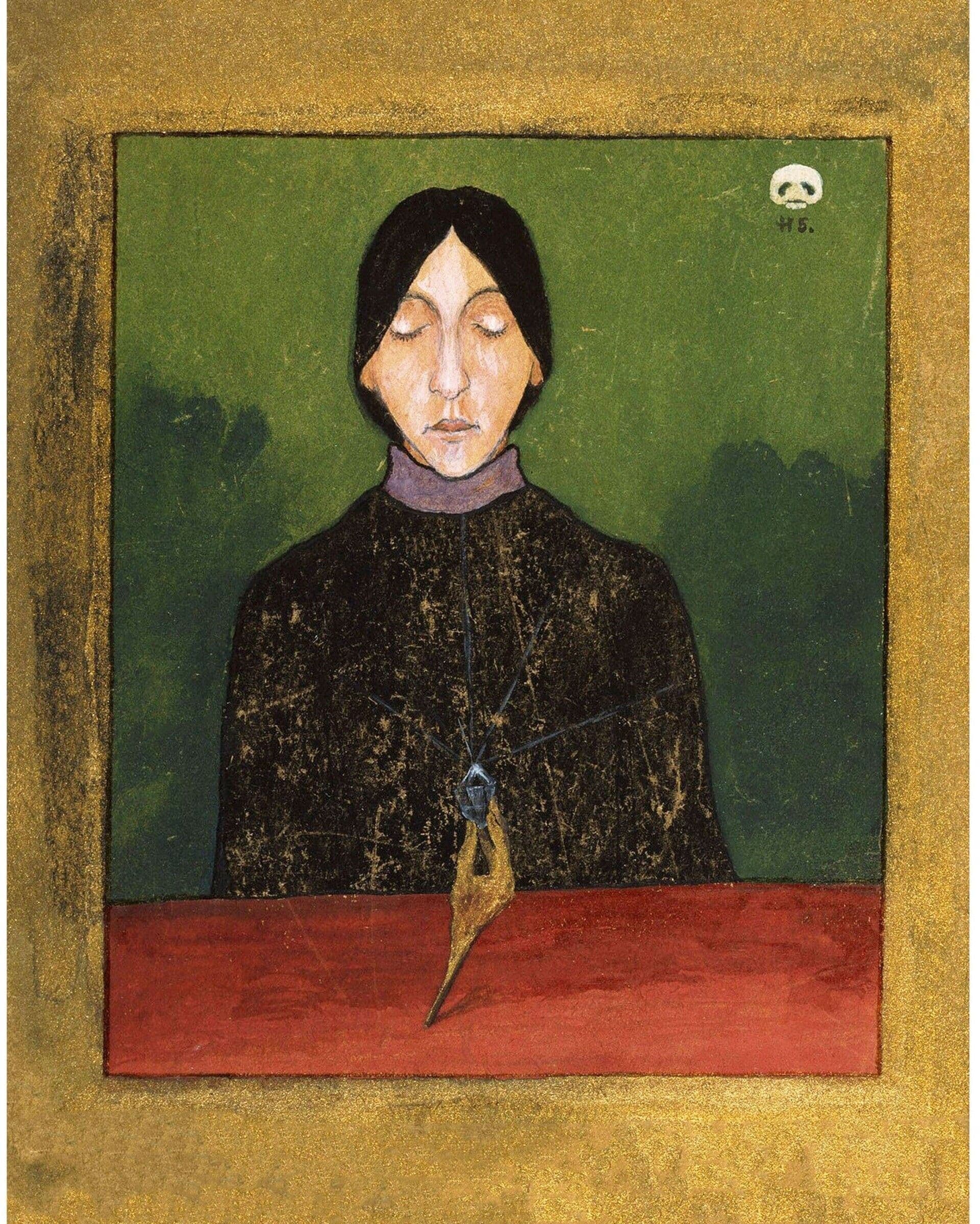
Hugo Simberg
View all artwork by Hugo Simberg
Hugo Simberg was a Finnish Symbolist painter and graphic artist whose enigmatic, often darkly humorous works occupy a unique position in Nordic art. Born in Hamina, Finland, Simberg studied under Akseli Gallen-Kallela and developed a highly personal artistic vision that combined folk traditions, symbolism, and an almost surreal sensibility. His most famous works, including "The Wounded Angel" and "The Garden of Death," present mysterious scenes that invite multiple interpretations while maintaining an emotional directness. Simberg's imagery often featured supernatural or fantastical elements treated with matter-of-fact naturalism, creating works that are simultaneously strange and familiar, dark and tender. He worked in painting, watercolor, and graphics, and created significant frescoes for Tampere Cathedral, though these were initially controversial. Simberg's work reflects a distinctly Finnish sensibility while participating in broader European Symbolist currents, and his influence on subsequent Finnish art has been profound.

Itō Jakuchū
View all artwork by Itō Jakuchū
Itō Jakuchū was a Japanese painter of the mid-Edo period who created extraordinarily detailed and imaginative paintings of birds, flowers, and other natural subjects. Born into a Kyoto family of greengrocers, Jakuchū pursued painting with obsessive dedication, creating works of astonishing technical virtuosity and creative originality. His major achievement, a set of thirty scroll paintings called "Colorful Realm of Living Beings," demonstrates his unparalleled ability to render chickens, peacocks, and other birds with both scientific precision and decorative brilliance. Jakuchū combined direct observation—he kept chickens to study their behavior—with traditional Japanese decorative techniques and his own innovations. His work encompasses several styles, from meticulous polychrome paintings to bold monochrome ink works and pioneering experiments with woodblock printing. Long overshadowed by more conventional Japanese artists, Jakuchū has been rediscovered in recent decades and is now recognized as one of Japan's greatest painters, whose work demonstrates remarkable originality and technical mastery.
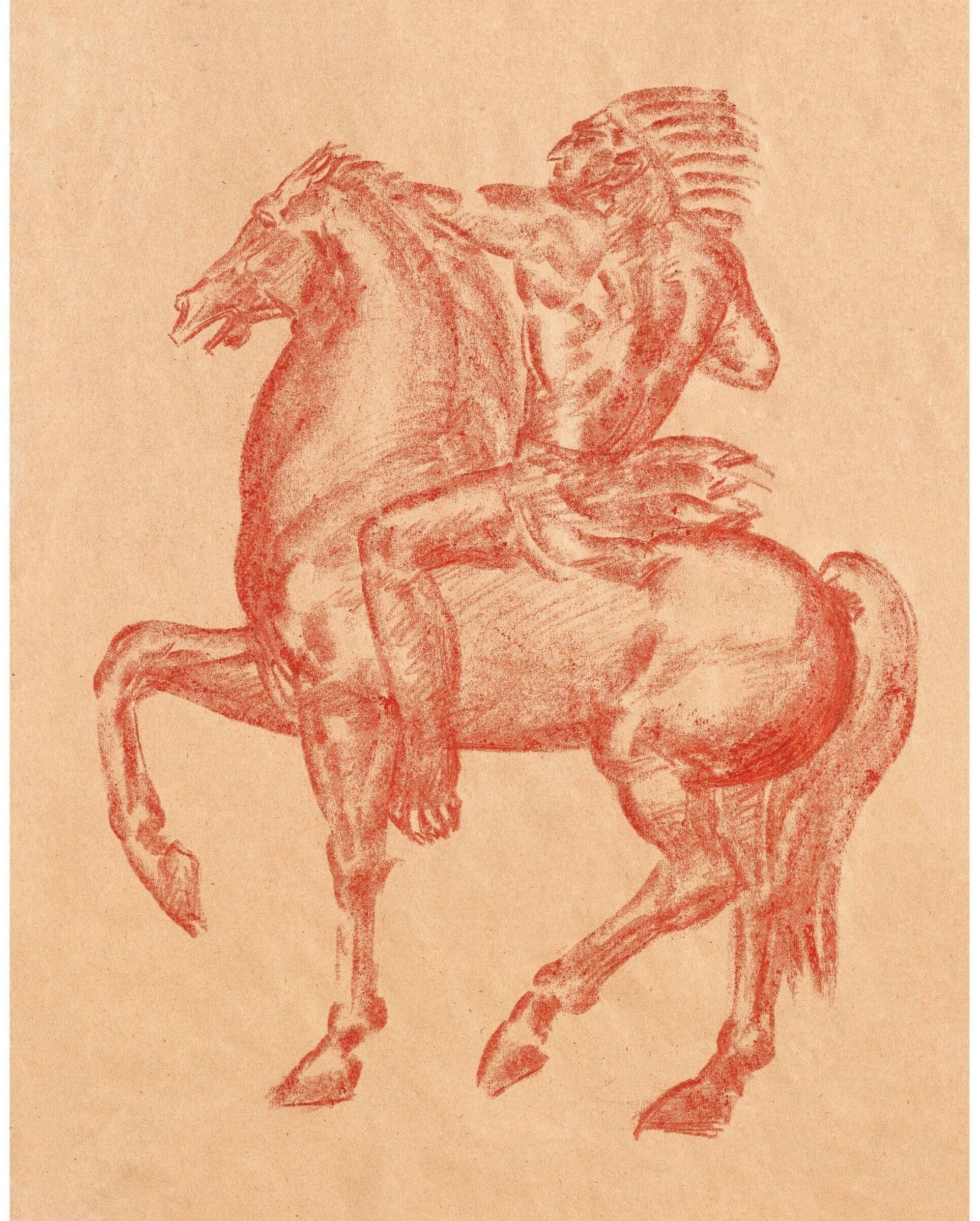
Ivan Meštrović
View all artwork by Ivan Meštrović
Ivan Meštrović was a Croatian sculptor, architect, and writer who became one of the most important sculptors of the 20th century and a symbol of South Slavic cultural identity. Born in rural Dalmatia to a poor family, Meštrović demonstrated exceptional artistic talent and studied in Split, Vienna, and Paris, where he was influenced by Rodin. His monumental sculptures combined classical and Byzantine influences with modernist simplification and emotional expressiveness, often addressing themes of nationalism, religion, and human struggle. Meštrović created numerous public monuments throughout Yugoslavia and designed the Kosovo Temple, combining architecture and sculpture. He achieved international fame, exhibiting worldwide and receiving major commissions. After World War II, Meštrović emigrated to the United States, where he taught at Syracuse University and the University of Notre Dame. His work represents a successful synthesis of traditional sculptural values with modernist aesthetics, maintaining figurative representation while achieving powerful expressive and symbolic effects.

Iwao
View all artwork by Iwao
Iwao was a Japanese artist active during the Meiji and Taisho periods, working in decorative painting and illustration. Little biographical information survives about many artists who worked in commercial and decorative contexts during this period of rapid modernization in Japan. Artists like Iwao navigated between traditional Japanese artistic techniques and aesthetic principles and the new commercial opportunities and Western influences that characterized the era. They created works for various purposes including book illustration, advertising, and decorative arts, helping to shape Japanese visual culture during a time of profound change. These artists maintained traditional skills and sensibilities while adapting to modern contexts and audiences.
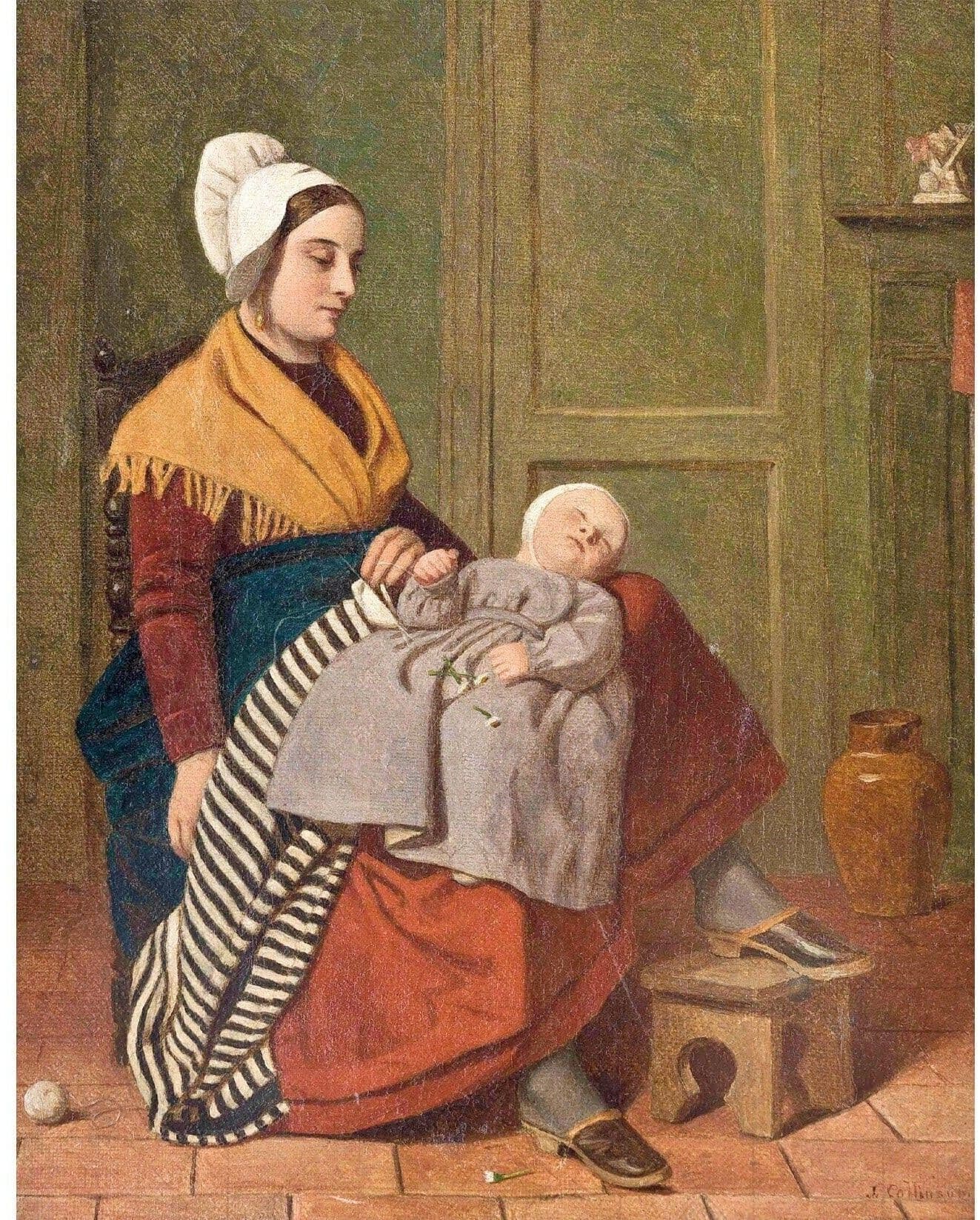
James Collinson
View all artwork by James Collinson
James Collinson was a British painter and an original member of the Pre-Raphaelite Brotherhood, though his association with the group was relatively brief. Born in Mansfield, Nottinghamshire, Collinson studied at the Royal Academy Schools and developed an interest in religious subjects and scenes of domestic life. He joined the Pre-Raphaelite Brotherhood at its founding in 1848 but resigned in 1850, partly due to religious scruples related to his conversion to Roman Catholicism. Collinson's Pre-Raphaelite works, including "The Renunciation of Queen Elizabeth of Hungary," demonstrate the movement's characteristic attention to detail, bright color, and moral seriousness. After leaving the Brotherhood, he continued to paint genre scenes and religious subjects in a more conventional Victorian manner. While less innovative than core Pre-Raphaelite members like Millais and Rossetti, Collinson's work represents the movement's early phase and its concern with religious themes and meticulous naturalism.
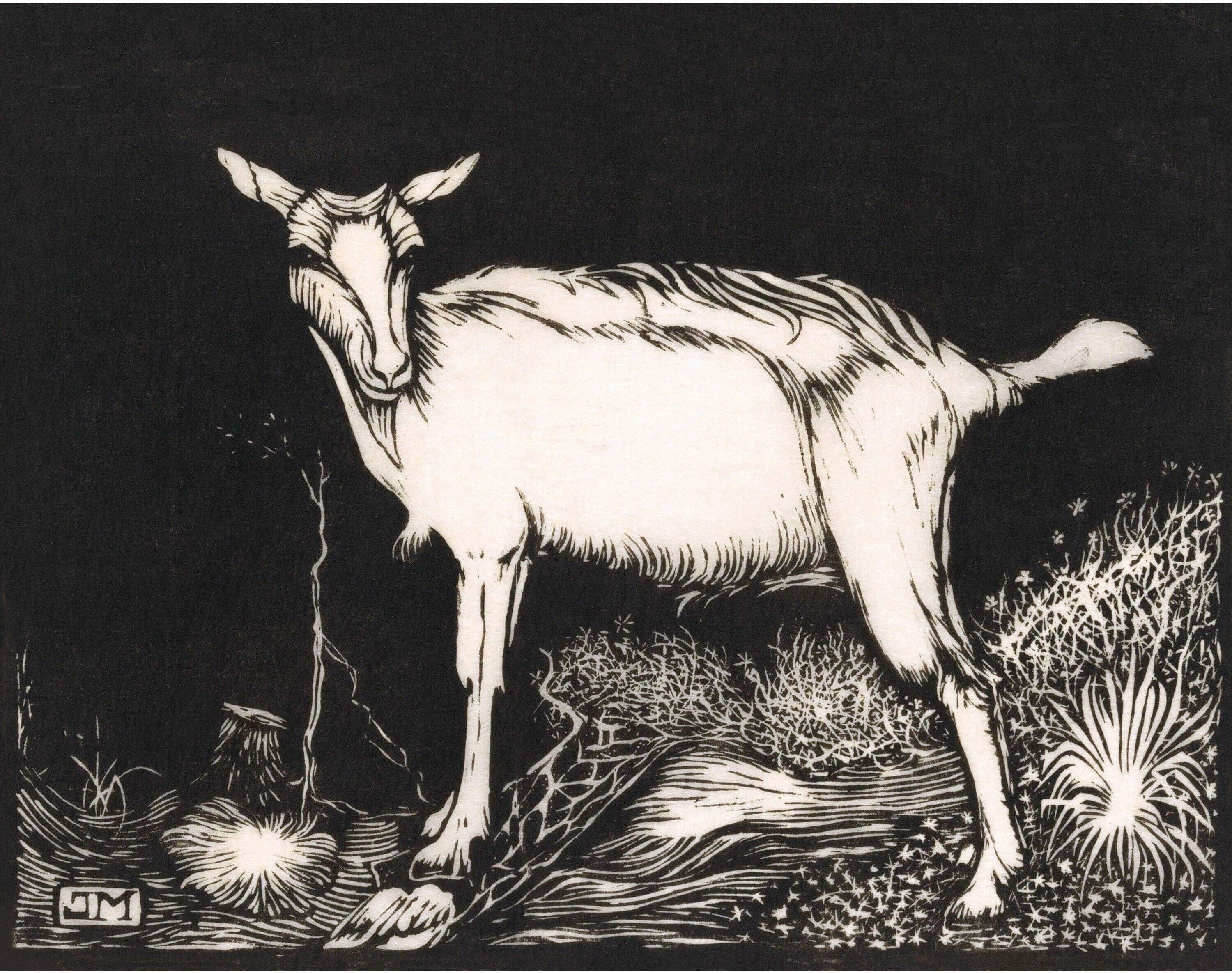
Jan Mankes
View all artwork by Jan Mankes
Jan Mankes was a Dutch painter and graphic artist whose sensitive, contemplative works created a personal vision of nature despite his tragically short life. Diagnosed with tuberculosis as a teenager, Mankes spent much of his brief career in rural areas, creating intimate studies of birds, animals, landscapes, and still lifes. His work is characterized by careful observation, restrained color, and an almost mystical quality of attention that transforms simple subjects into meditative images. Mankes worked in painting, drawing, and various printmaking techniques, achieving remarkable mastery despite his youth and illness. His bird studies and landscapes demonstrate profound sympathy with his subjects and an ability to convey essential character through simplified forms and subtle tonal relationships. Though his career lasted less than a decade, Mankes created a significant body of work that influenced subsequent Dutch artists and remains treasured for its quiet beauty and spiritual depth.

Jan Toorop
View all artwork by Jan Toorop
Jan Toorop was a Dutch-Indonesian painter and graphic artist whose eclectic work spanned Realism, Impressionism, Symbolism, and Art Nouveau, making him one of the most versatile and influential artists in the Netherlands. Born in Java (present-day Indonesia) to a Javanese mother and Dutch father, Toorop moved to the Netherlands for education and training. His early work showed Impressionist influences, but he became increasingly interested in Symbolism and developed a highly distinctive linear style influenced by Javanese batik patterns and shadow puppets. Toorop's Symbolist works feature intricate networks of curving lines creating dreamlike, mystical imagery that influenced the development of Art Nouveau. He was also a significant poster designer, creating works that helped establish the artistic poster in the Netherlands. After converting to Catholicism in 1905, Toorop created numerous religious works while continuing to explore mystical and symbolic themes. His synthesis of Indonesian, European, and personal elements created a unique artistic voice that connected diverse cultural traditions.

Jean-Baptiste Oudry
View all artwork by Jean-Baptiste Oudry
Jean-Baptiste Oudry was one of the greatest French painters of animals and still lifes of the 18th century, combining rococo elegance with remarkable naturalistic observation. Born in Paris, Oudry studied under the history painter Nicolas de Largillière before specializing in animal subjects, hunt scenes, and still lifes. He served as painter to Louis XV and director of the Beauvais tapestry manufactory, where he revolutionized tapestry design with his naturalistic compositions. Oudry's paintings of dogs, game, and hunting scenes demonstrate extraordinary technical skill in rendering fur, feathers, and textures, while his compositions balance decorative appeal with careful observation from life. His work for the royal menageries allowed him to study exotic animals, and his illustrations for La Fontaine's Fables remain among the finest examples of rococo book illustration. Oudry represents the high point of French animal painting, elevating what had been considered a minor genre to a level of sophistication and prestige that rivaled history painting.
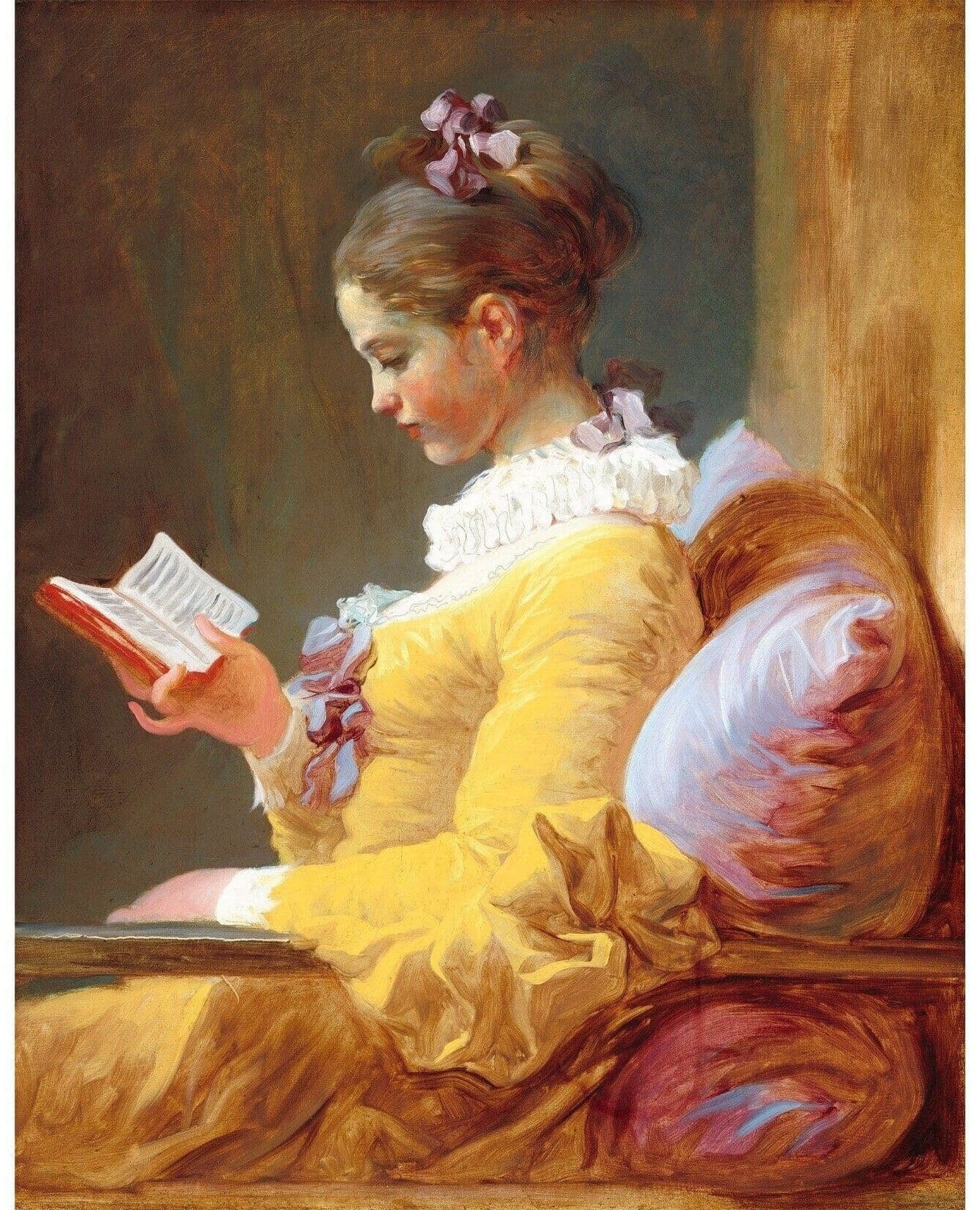
Jean-Honore Fragonard
View all artwork by Jean-Honore Fragonard
Jean-Honoré Fragonard was a leading French Rococo painter whose exuberant, sensual paintings epitomize the pleasure-seeking spirit of pre-Revolutionary French aristocratic society. Born in Grasse and trained in Paris under François Boucher, Fragonard won the Prix de Rome and studied in Italy, where he was influenced by Tiepolo and Baroque masters. His mature work demonstrates extraordinary technical facility, with loose, energetic brushwork creating images of remarkable vivacity. Fragonard excelled in gallant scenes, landscapes, and portraits, painting with equal success in oil and drawings. His most famous work, "The Swing," perfectly captures Rococo frivolity and eroticism. Beyond his fashionable genre scenes, Fragonard created remarkably free landscape sketches and fantasy portraits executed with astonishing speed and freedom. The French Revolution ended demand for his aristocratic subjects, and Fragonard's career declined, though he continued working. His technical brilliance, particularly his virtuoso handling of paint, influenced later artists including the Impressionists.
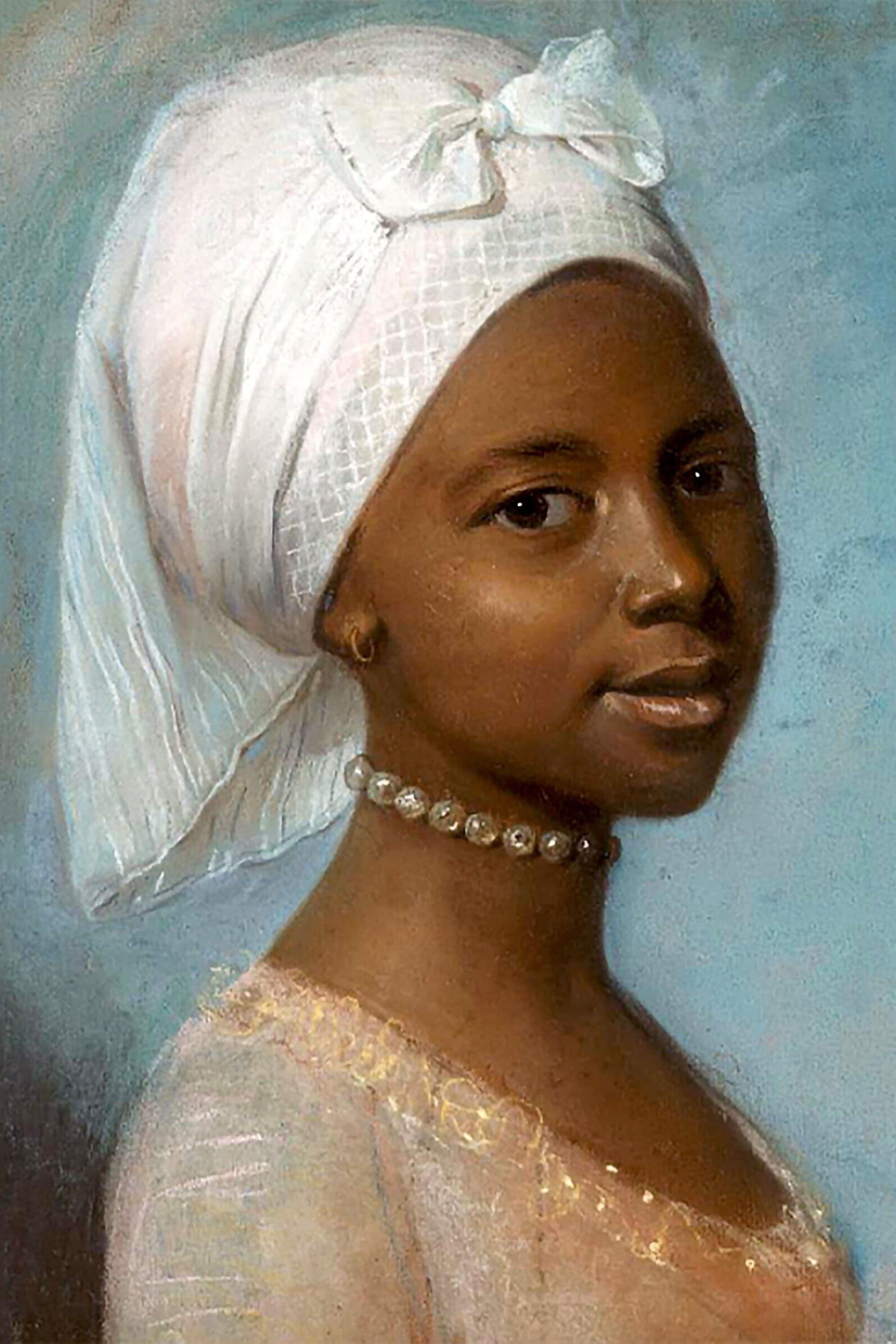
Jean-Étienne Liotard
View all artwork by Jean-Étienne Liotard
Jean-Étienne Liotard was a Swiss painter renowned for his meticulously detailed pastel portraits and his adoption of Turkish dress, which earned him the nickname "the Turkish painter." Born in Geneva, Liotard traveled extensively throughout Europe and the Ottoman Empire, developing an international clientele among aristocracy and royalty. His specialty was pastel portraiture, executed with exceptional precision and an almost enamel-like finish that set him apart from contemporaries. Liotard's portraits are characterized by clear, even light, meticulous detail, and psychological directness that eschewed flattery for truthful representation. His most famous work, "The Chocolate Girl," demonstrates his ability to elevate genre subjects to the refinement of portraiture. Liotard's travels to Constantinople profoundly influenced him, leading him to adopt Turkish clothing for much of his life and to introduce oriental subjects and sensibilities into European art. His technical writings advocated for truth to nature and influenced artistic theory.
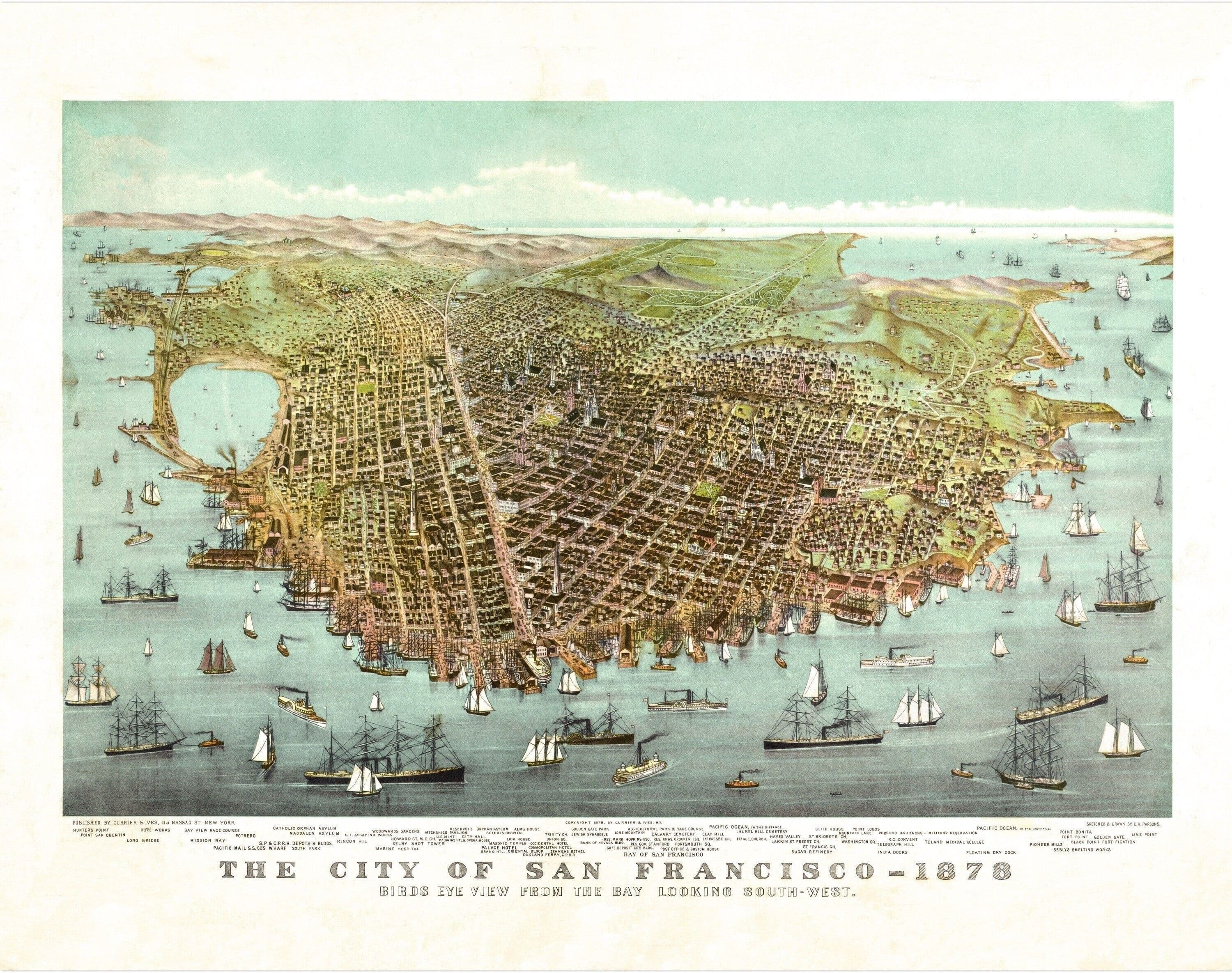
Joannis Janssonii
View all artwork by Joannis Janssonii
Johannes Janssonius was a Dutch cartographer and publisher who, along with his competitor Joan Blaeu, dominated Dutch mapmaking during the Dutch Golden Age of cartography. Born in Arnhem, Janssonius established himself in Amsterdam, where he published maps, atlases, and geographical works that combined scientific accuracy with decorative beauty. His maps featured elaborate cartouches, sea monsters, sailing ships, and other decorative elements that made them both functional navigational tools and objects of artistic beauty. Janssonius's rivalry with the Blaeu firm drove both publishers to create increasingly elaborate and comprehensive atlases. His "Atlas Novus" and later multi-volume atlases represented the state of geographical knowledge in the 17th century while exemplifying Dutch Golden Age printing and engraving. The maps produced by Janssonius and his contemporaries served commercial, political, and decorative purposes, reflecting Dutch maritime power and global reach.

John Bauer
View all artwork by John Bauer
John Bauer was a Swedish painter and illustrator who created definitive visual interpretations of Scandinavian folklore, particularly trolls, princesses, and enchanted forests. Born in Jönköping, Bauer studied at the Royal Swedish Academy of Arts in Stockholm, developing a distinctive style that combined Art Nouveau influences with Nordic Romantic nationalism. His illustrations for the annual anthology "Among Gnomes and Trolls" became iconic, shaping how subsequent generations would visualize Nordic fairy tales and folklore. Bauer's paintings feature mysterious, moss-covered forests populated by trolls, beautiful princesses, and magical creatures, rendered in a style that balances naturalistic detail with dreamlike atmosphere. His work drew inspiration from Swedish landscape, medieval art, and folklore traditions, creating images that feel both ancient and modern. Bauer and his family tragically drowned when their steamship sank, cutting short his career at age 36. His legacy endures in Swedish visual culture, where his images remain the primary visual reference for Nordic fairy tales.
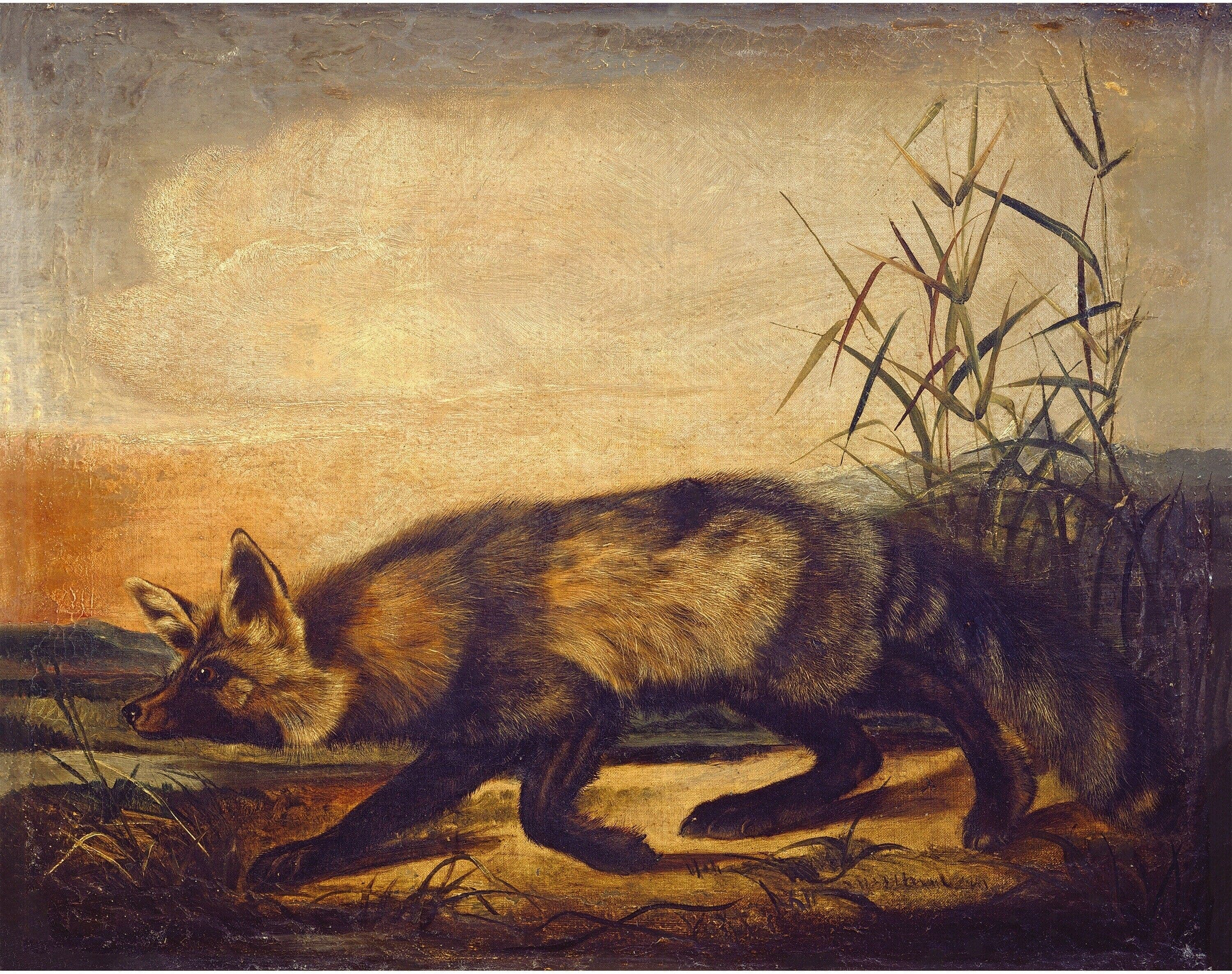
John Woodhouse Audubon
View all artwork by John Woodhouse Audubon
John Woodhouse Audubon was an American artist and naturalist, the younger son of the famous ornithologist and painter John James Audubon. Born in Henderson, Kentucky, John Woodhouse was trained by his father and assisted him in creating "The Birds of America" and later natural history projects. He developed considerable skill as an animal and bird painter in his own right, contributing significantly to "The Viviparous Quadrupeds of North America," a major work documenting American mammals. John Woodhouse's painting style closely followed his father's approach, emphasizing naturalistic detail and dramatic composition, though he gradually developed his own characteristics. He also painted portraits and landscapes, and undertook expeditions to collect specimens and make field studies. His career was disrupted by involvement in business ventures and by failing health, but his contributions to American natural history illustration remain significant, helping to document American wildlife in a period of rapid change.

Joshua Johnson
View all artwork by Joshua Johnson
Joshua Johnson was the first known African American professional portrait painter, working in Baltimore during the Federal period. Details of his life remain uncertain, but evidence suggests he was a self-taught artist, possibly a former slave or free person of color, who established a successful portrait practice among Baltimore's merchant class. Johnson's portraits are characterized by careful attention to detail, particularly in rendering fabrics and accessories, combined with a somewhat flattened, pattern-oriented approach that gives his work a distinctive folk art quality. His subjects are typically shown against plain backgrounds, wearing their finest clothing, with children often holding toys or fruit. Johnson's work provides valuable documentation of early American society and demonstrates that African Americans participated in American professional art from its earliest periods. His paintings represent an important link between folk art traditions and academic portraiture, while his career demonstrates the possibility, however constrained, of professional achievement for African Americans in the early Republic.
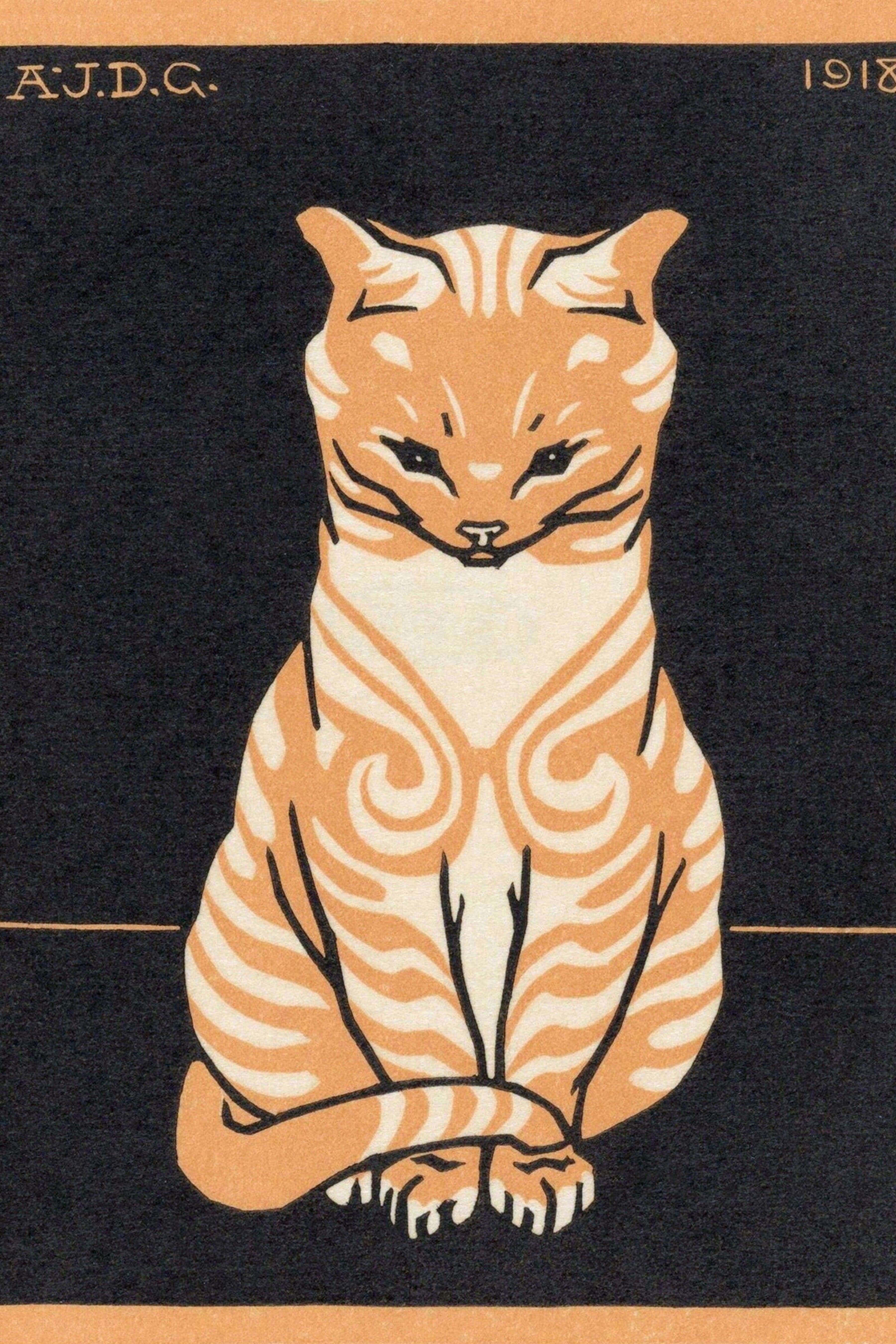
Julie de Graag
View all artwork by Julie de Graag
Julie de Graag was a Dutch graphic artist and printmaker who became one of the most accomplished woodcut artists of the early 20th century. Largely self-taught, de Graag developed a distinctive style characterized by bold black-and-white contrasts, simplified forms, and decorative patterning influenced by both Japanese prints and Art Nouveau. Her preferred subjects included birds, animals, landscapes, and symbolic compositions, all rendered with remarkable technical mastery and aesthetic refinement. De Graag's woodcuts demonstrate sophisticated understanding of the medium's possibilities, using the wood grain and cutting techniques to create rich textural effects. Her work gained recognition during her lifetime, with exhibitions in the Netherlands and abroad. De Graag represents the early 20th-century printmaking revival, when artists elevated woodcut from a commercial reproduction method to a fine art medium capable of expressive and aesthetic achievement. Her prints combine decorative beauty with emotional depth, creating images that are simultaneously modern and timeless.

József Rippl-Rónai
View all artwork by József Rippl-Rónai
József Rippl-Rónai was a Hungarian painter who played a crucial role in introducing Post-Impressionism and Art Nouveau to Hungarian art. Born in Kaposvár, Rippl-Rónai studied in Munich and Paris, where he associated with the Nabis group and was influenced by Vuillard, Bonnard, and Symbolist aesthetics. His mature style is characterized by flat, decorative compositions, rich, often somber colors, and simplified forms that balance pattern and representation. Rippl-Rónai painted portraits, interiors, and landscapes with a distinctive approach that synthesized French modernist influences with Hungarian subject matter. His work played an important role in Hungarian cultural life, bringing international modern art movements to Hungarian audiences while maintaining national character. After years in Paris, Rippl-Rónai returned to Hungary, where he continued to paint and influenced younger Hungarian artists, helping to establish Hungarian modernism and connect it with broader European developments.
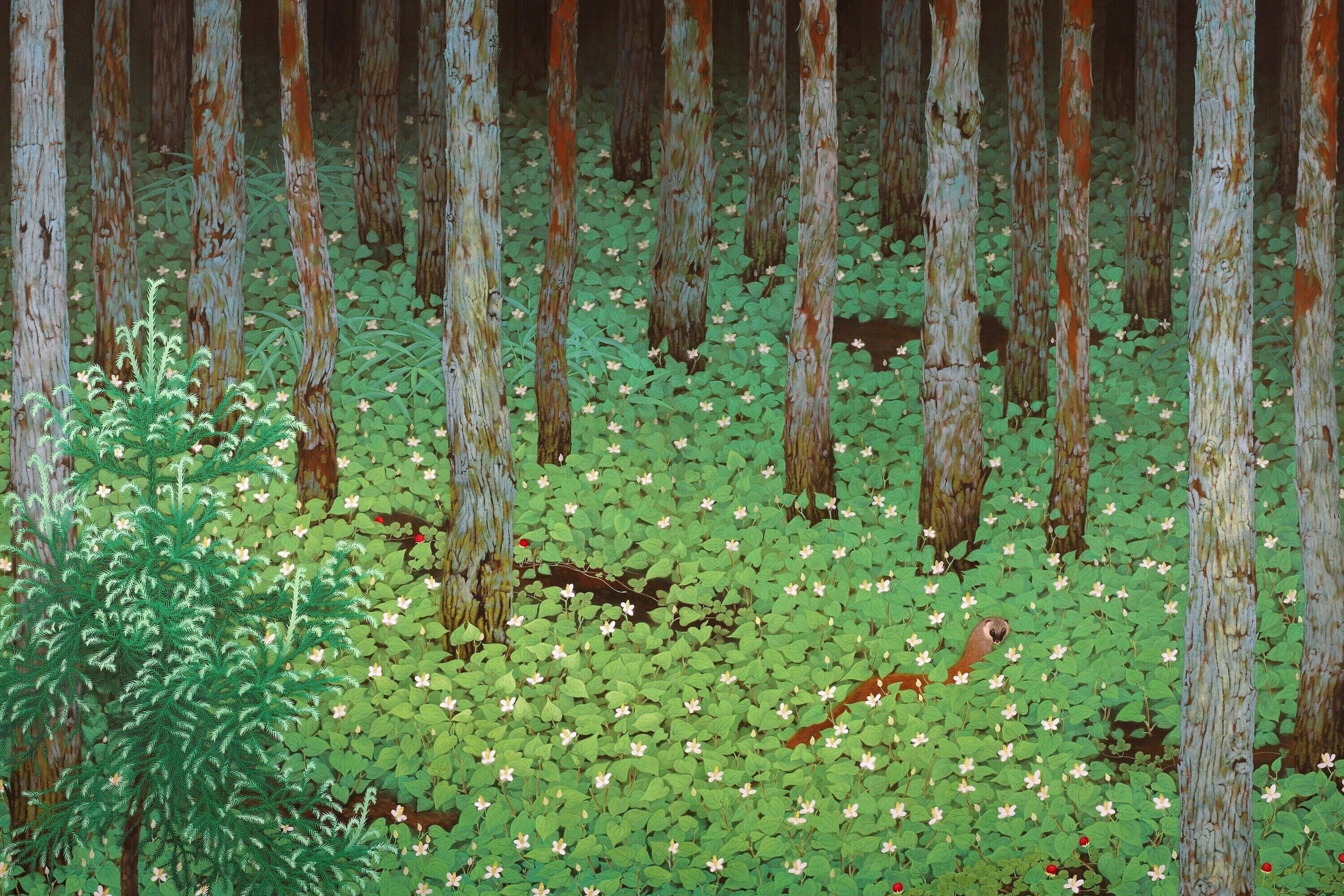
Katayama Bokuyo
View all artwork by Katayama Bokuyo
Katayama Bokuyo was a Japanese painter and printmaker active in the early-to-mid 20th century, working in traditional Japanese painting styles while engaging with modern aesthetics. Like many Japanese artists of his generation, Bokuyo navigated between traditional nihonga painting techniques and the innovations of modern art, creating works that honored historical Japanese aesthetics while responding to contemporary developments. His work often featured traditional subjects such as birds, flowers, and landscapes, rendered with refined technique and sensitivity to seasonal and natural themes that have long been central to Japanese art. Artists like Bokuyo maintained the vitality of traditional Japanese painting during a period when Western-style art was gaining prominence, demonstrating that traditional forms could remain relevant and expressive in the modern era.
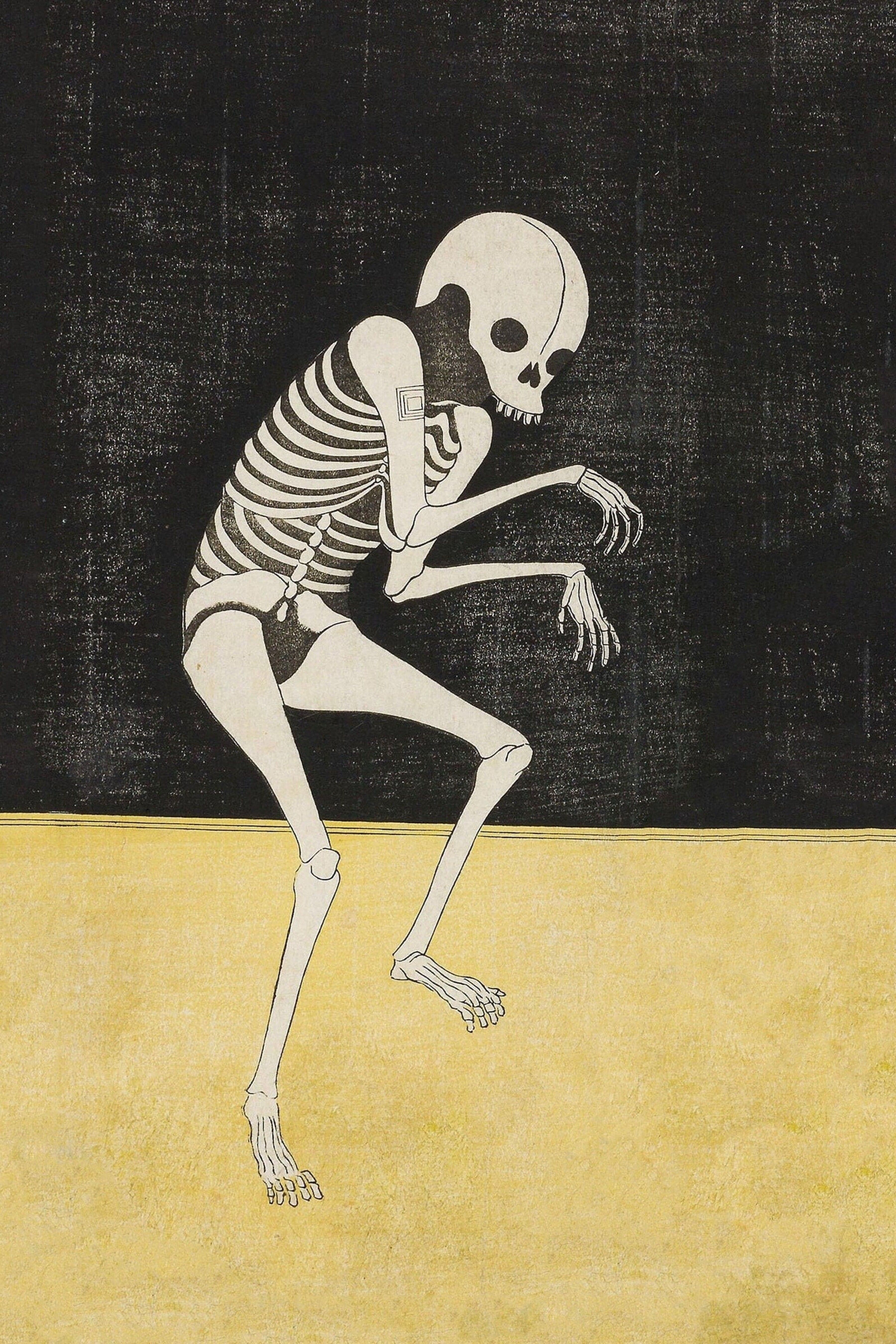
Katsukawa Shunsho
View all artwork by Katsukawa Shunsho
Katsukawa Shunshō was a Japanese ukiyo-e artist who revolutionized actor prints by introducing realistic individual likenesses and dramatically improving the artistic quality of theatrical prints. Born in Edo, Shunshō founded the Katsukawa school, which specialized in actor prints (yakusha-e) and established new standards for depicting kabuki performers. Before Shunshō, actor prints were relatively generic; he introduced the practice of creating recognizable portraits of specific actors in particular roles, capturing not just their appearance but their performance style and personality. His prints demonstrate sophisticated composition, careful attention to costume and pose, and technical excellence in woodblock printing. Shunshō also created beautiful bijin-ga (pictures of beautiful women) and illustrated books. As a teacher, he influenced numerous students including Hokusai (who trained in his studio before developing his own style). Shunshō's innovations made actor prints one of the most important ukiyo-e genres and elevated the artistic standards of popular printmaking.
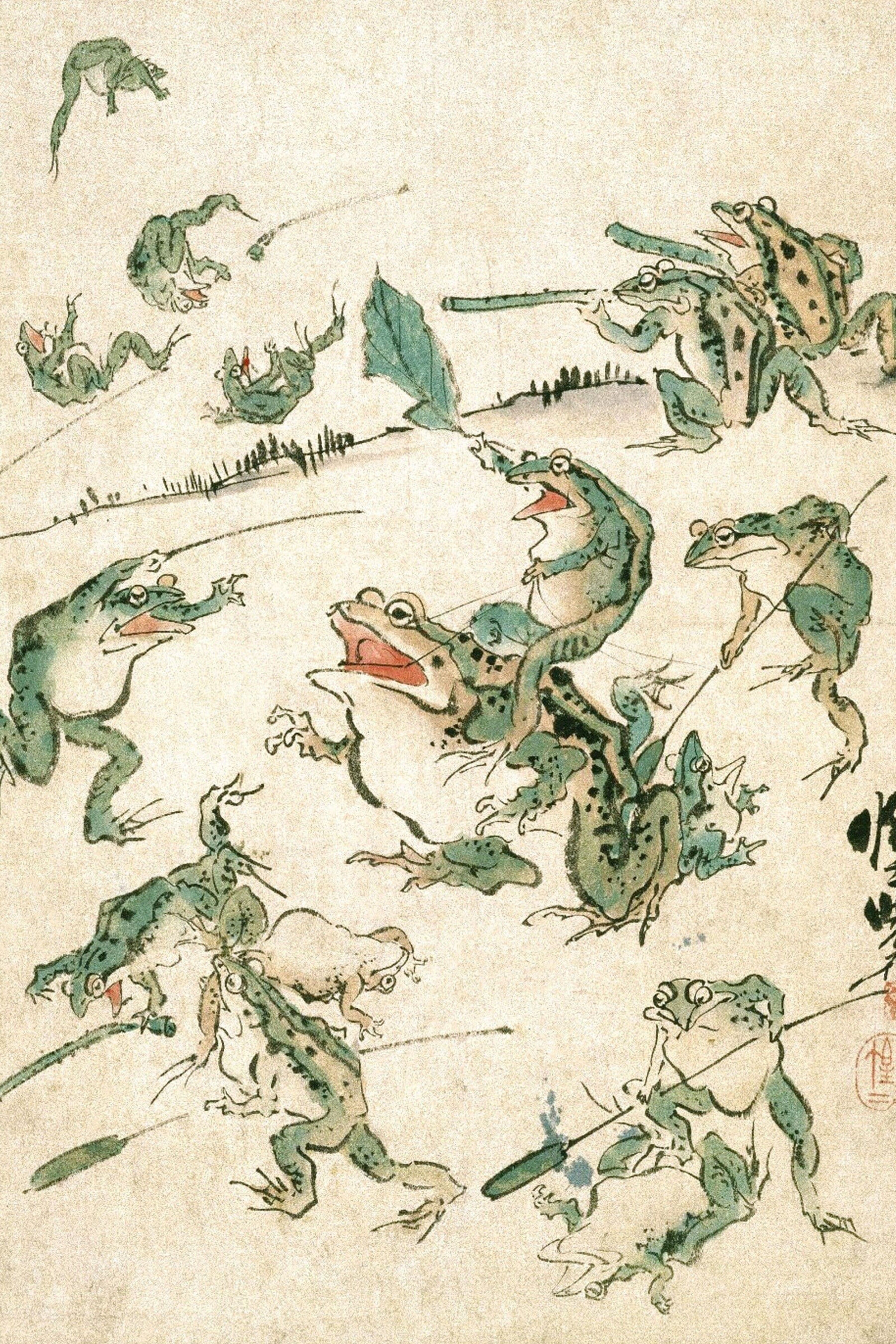
Kawanabe Kyosai
View all artwork by Kawanabe Kyosai
Kawanabe Kyōsai was a Japanese painter and printmaker whose virtuoso technique and wild imagination made him one of the most distinctive artists of the late Edo and early Meiji periods. Trained in both the Kano school of traditional painting and ukiyo-e, Kyōsai developed an eclectic style that combined multiple traditions with his own irreverent humor and creative genius. His work ranges from meticulous traditional subjects to outrageous caricatures, from Buddhist religious paintings to satirical images of contemporary society. Kyōsai was famous for his ability to paint while drunk, creating masterpieces in front of astonished audiences. His subjects included demons, ghosts, animals, historical and mythological scenes, and satirical commentary on Meiji-era modernization. Despite—or perhaps because of—his unconventional approach, Kyōsai was recognized as a master during his lifetime, receiving commissions from temples, collectors, and even foreign admirers including Josiah Conder. His work demonstrates the vitality and adaptability of Japanese artistic traditions during a period of rapid change.
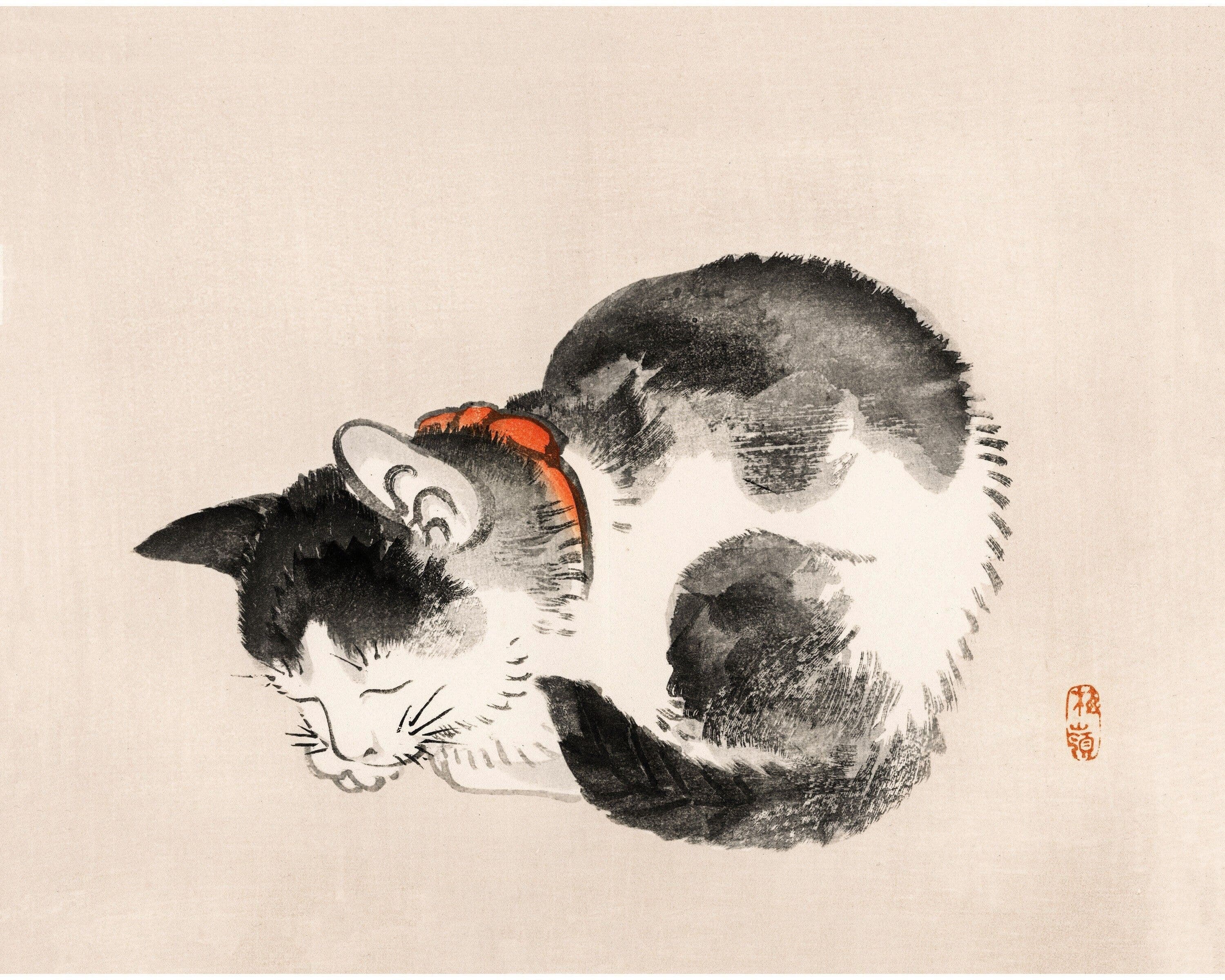
Kōno Bairei
View all artwork by Kōno Bairei
Kōno Bairei was a Japanese painter and woodblock print designer who became one of the leading kacho-ga (bird-and-flower painting) artists of the Meiji period. Born in Kyoto, Bairei studied in the Shijō school tradition, which emphasized realistic depiction of nature combined with decorative composition. His paintings and prints of birds, flowers, insects, and small animals demonstrate exceptional observational skill and technical mastery, rendered with elegant simplicity that captures the essence of his subjects. Bairei was instrumental in maintaining traditional Japanese painting aesthetics during the Meiji period's rush toward Westernization, demonstrating that traditional forms retained vitality and relevance. He also worked as a teacher and published instructional manuals that influenced subsequent generations of Japanese artists. Bairei's work bridges Edo period traditions and Meiji modernization, maintaining traditional subjects and techniques while adapting to new contexts and audiences.
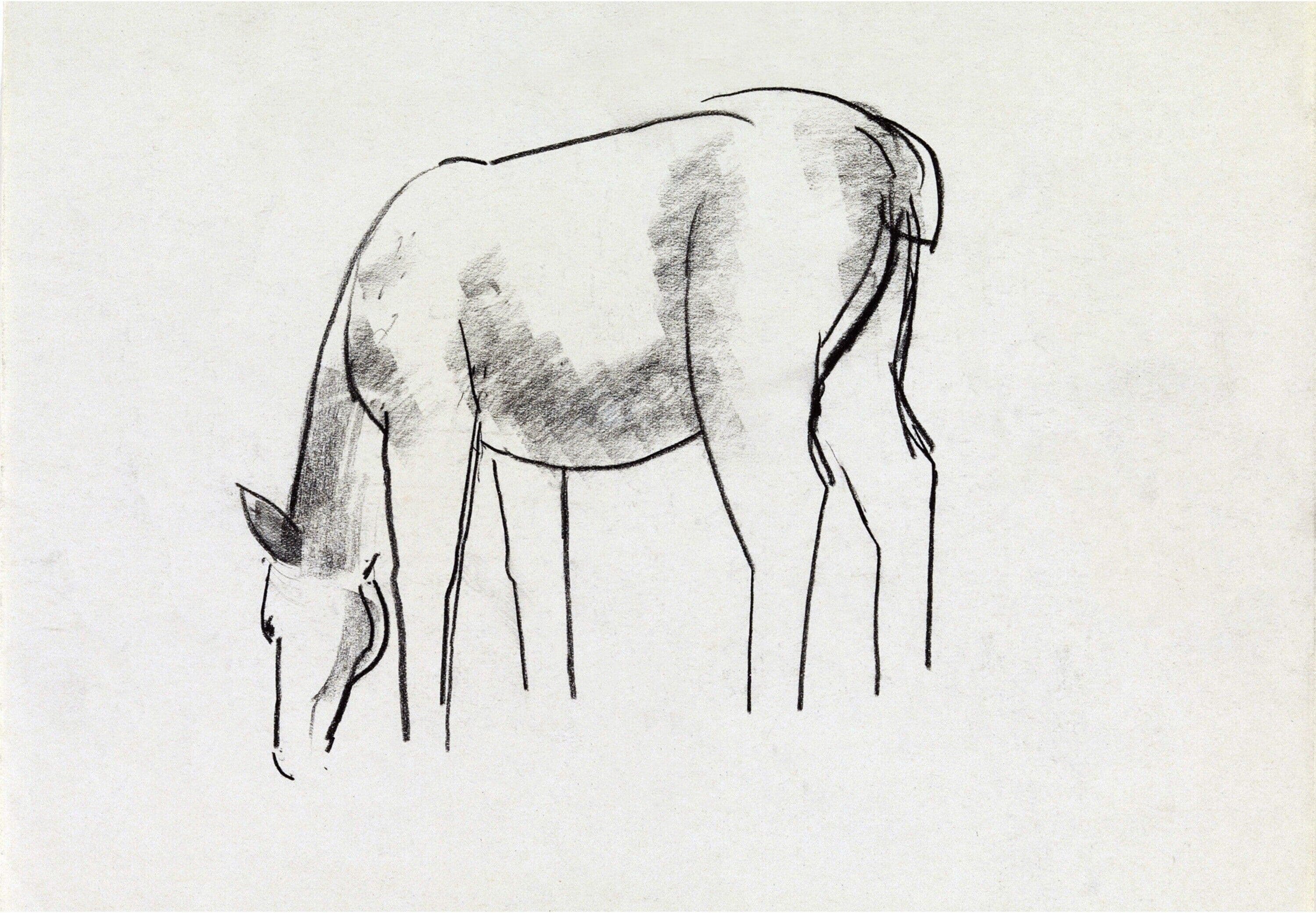
Leo Gestel
View all artwork by Leo Gestel
Leo Gestel was a Dutch painter whose eclectic modernist style made him one of the most versatile and innovative Dutch artists of the early 20th century. Born in Woerden, Gestel studied at the Academie Royale des Beaux-Arts in Amsterdam and was influenced by various avant-garde movements including Fauvism, Cubism, Futurism, and Expressionism. Rather than adhering rigidly to any single movement, Gestel synthesized different modernist approaches to create work characterized by bold color, dynamic composition, and expressive energy. His subjects included landscapes, still lifes, portraits, and scenes of modern life, all transformed through his modernist vision. Gestel was associated with the Bergen school and the Dutch avant-garde, helping to introduce international modernist developments to the Netherlands. His work demonstrates the possibility of creating a personal modernist language that draws from multiple sources while maintaining individual character. Gestel's versatility and openness to various influences make him an important figure in Dutch modern art.

Leon Bakst
View all artwork by Leon Bakst
Léon Bakst was a Russian painter and costume and stage designer whose exotic, colorful designs for the Ballets Russes revolutionized theatrical design and influenced fashion and decorative arts. Born Lev Rosenberg in St. Petersburg, Bakst studied at the Imperial Academy of Arts and became associated with the World of Art movement. His breakthrough came with his designs for Sergei Diaghilev's Ballets Russes, including productions of "Scheherazade," "The Firebird," and "The Afternoon of a Faun." Bakst's designs featured bold colors, exotic orientalist imagery, and revolutionary freedom of form that shocked and delighted audiences. His costume designs, with their flowing silhouettes and rich ornamentation, influenced contemporary fashion designers including Paul Poiret. Beyond theater, Bakst created paintings, book illustrations, and decorative designs, all characterized by his distinctive color sense and decorative imagination. His work represents the cross-fertilization between Russian and Western European art in the early 20th century and the elevation of theatrical design to fine art status.

Lilly Martin Spencer
View all artwork by Lilly Martin Spencer
Lilly Martin Spencer was one of the most successful American genre painters of the 19th century, creating popular images of domestic life that combined artistic skill with commercial appeal. Born in England and raised in Ohio, Spencer received artistic training from her parents and local artists before moving to New York to pursue a professional career. She specialized in scenes of middle-class domestic life, often featuring women and children engaged in everyday activities, painted with charm, humor, and technical accomplishment. Spencer's paintings resonated with Victorian audiences for their celebration of domestic virtues and their accessible, narrative quality. Unlike many women artists of her era who were restricted to certain subjects or amateur status, Spencer established herself as a professional painter, supporting her large family through her art. Her work provides valuable documentation of 19th-century American domestic life while demonstrating the possibility of professional success for women artists in a male-dominated field. Spencer navigated between artistic ambition and commercial necessity, creating work that was simultaneously popular and artistically accomplished.
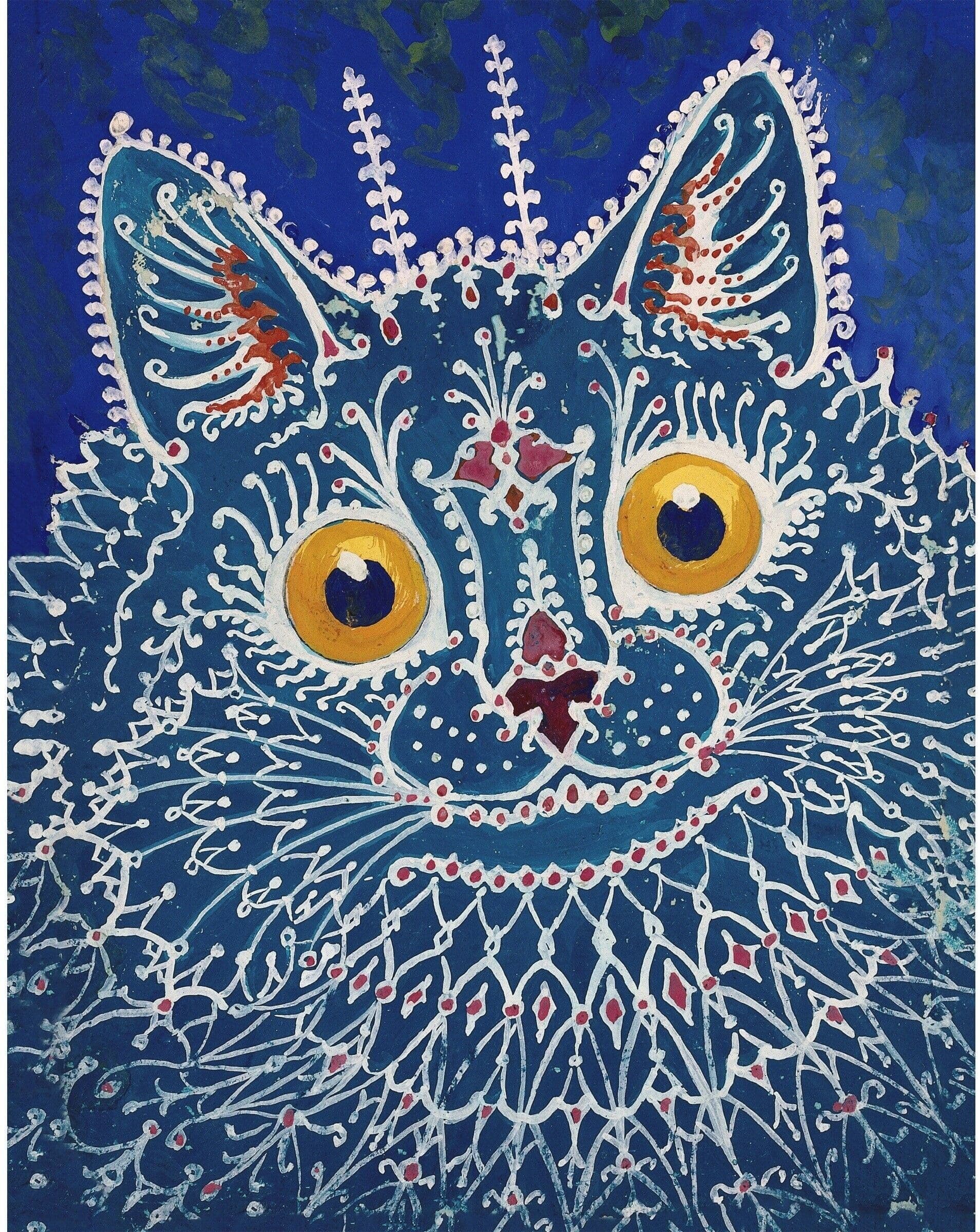
Louis Wain
View all artwork by Louis Wain
Louis Wain was a British artist best known for his distinctive drawings of anthropomorphized cats engaged in human activities. Born in London, Wain initially worked as a freelance artist and illustrator before discovering his signature subject: cats depicted with human characteristics and expressions, often shown in Victorian and Edwardian social situations. His whimsical, charming images of cats playing games, attending parties, and engaging in various human activities became immensely popular, appearing in newspapers, magazines, children's books, and postcards. Wain's cats helped transform public perception of cats from working animals to beloved pets. Later in life, Wain developed mental illness, and his artistic style changed dramatically, producing increasingly abstract and psychedelic cat images that have fascinated psychologists and art historians. Despite personal difficulties including mental illness and poverty, Wain created an enormous body of work that brought joy to millions. His legacy lies in both his charming early work and his later, more disturbing images, which together document his psychological journey.
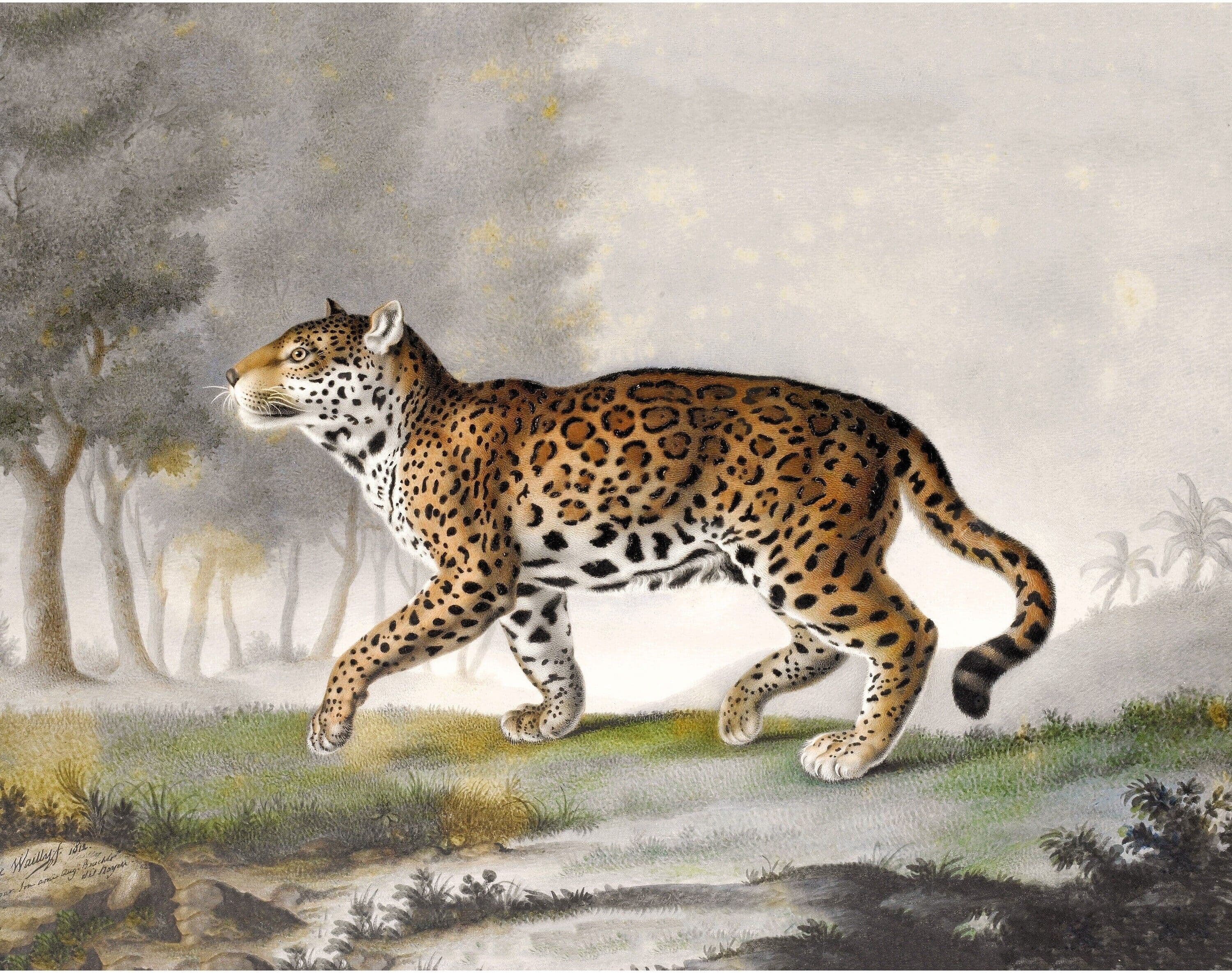
Léon de Wailly
View all artwork by Léon de Wailly
Léon de Wailly was a French decorative artist and illustrator active during the Belle Époque, known for his elegant illustrations and decorative designs. Working in the transitional period between Art Nouveau and Art Deco, de Wailly created illustrations for books, magazines, and advertising that combined refined technique with decorative sensibility. His work exemplifies the high standards of French commercial art during the Belle Époque, when illustration was considered a legitimate art form and attracted serious artistic talent. Artists like de Wailly helped establish the artistic poster and illustrated book as collectible art objects while serving commercial and entertainment functions. His elegant style and technical skill contributed to the rich visual culture of turn-of-the-century Paris.
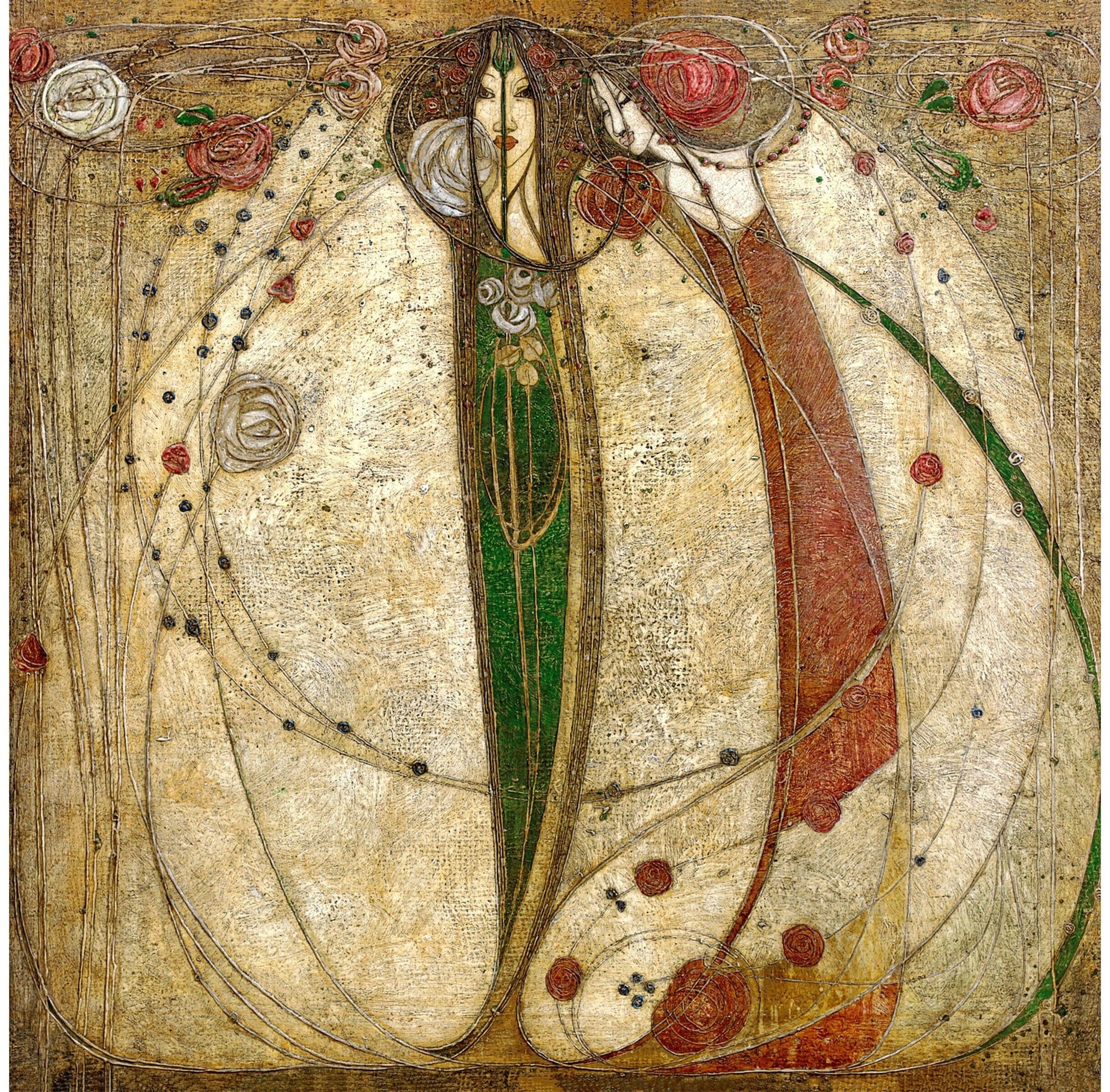
Margaret MacDonald Mackintosh
View all artwork by Margaret MacDonald Mackintosh
Margaret Macdonald Mackintosh was a Scottish artist whose symbolic, ethereal works were integral to the Glasgow Style and the broader Arts and Crafts and Art Nouveau movements. Born in England and educated at the Glasgow School of Art, Macdonald worked in various media including metalwork, embroidery, illustration, and gesso panels. She collaborated closely with her husband, architect and designer Charles Rennie Mackintosh, and her sister Frances Macdonald, creating a distinctive aesthetic characterized by elongated female figures, mystical symbolism, and decorative refinement. Macdonald's work often featured pale, otherworldly women amid roses and organic forms, rendered in a highly stylized manner that influenced the development of Art Nouveau. Her contributions to Mackintosh's architectural projects, including decorative panels and furniture designs, were essential to their integrated aesthetic vision. Long overshadowed by her famous husband, Macdonald is now recognized as a significant artist in her own right, whose work was central to the Glasgow Style and early modernist design.
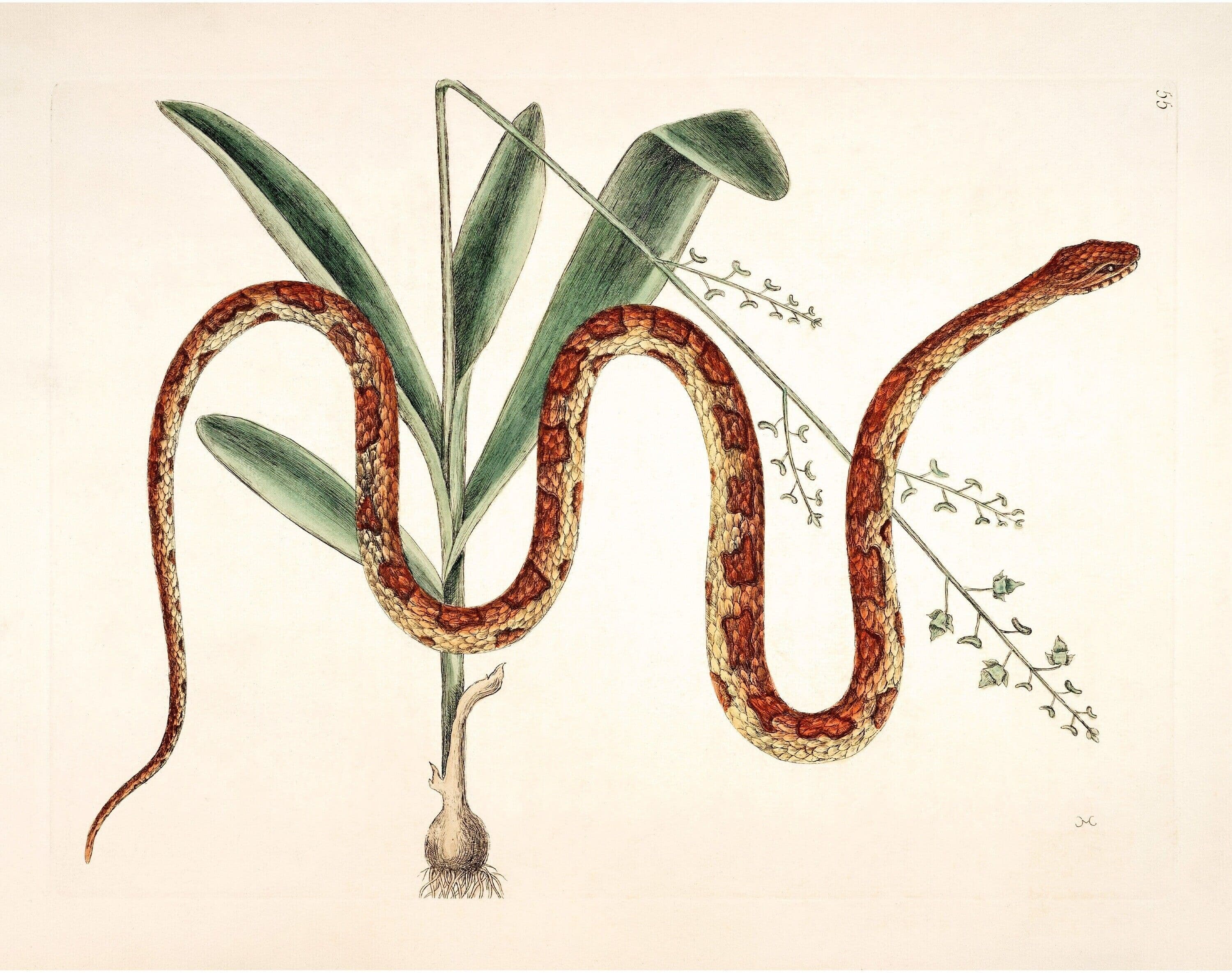
Mark Catesby
View all artwork by Mark Catesby
Mark Catesby was a British naturalist and artist whose pioneering work documenting the flora and fauna of the American colonies created one of the most important early natural history illustrations. Born in Essex, England, Catesby traveled to Virginia and later the Carolinas and the Bahamas, where he spent years observing, collecting, and drawing plants, animals, birds, and fish. His masterwork, "The Natural History of Carolina, Florida, and the Bahama Islands," published in two volumes between 1729 and 1747, contained 220 hand-colored engravings depicting species many of which were unknown to European science. Catesby both drew and engraved his own plates, an unusual accomplishment, and often depicted animals in their natural habitats with appropriate plants, anticipating modern ecological illustration. His work combined scientific observation with artistic skill, making significant contributions to both natural history and botanical illustration. Catesby's images provided Europeans with their first accurate visual record of much North American wildlife and remained an important reference for over a century.

Mary Ann Willson
View all artwork by Mary Ann Willson
Mary Ann Willson was an early 19th-century American folk artist whose colorful watercolors represent some of the earliest known works by a woman folk painter in America. Little is known about her life except that she lived in rural New York State with her companion Miss Brundage, supporting herself by selling her paintings to local residents. Willson created images of biblical scenes, historical subjects, flora and fauna, and imaginative compositions, all rendered in a bold, primitive style using homemade pigments derived from berries, brick dust, and other natural materials. Her work demonstrates the characteristic features of American folk art: flat composition, bright colors, simplified forms, and narrative directness. Willson's paintings were created entirely outside academic traditions and patronage structures, representing the vernacular visual culture of rural America. Her survival as an artist in an unconventional domestic arrangement and her ability to make a living from her art demonstrate alternative possibilities for women in early America.
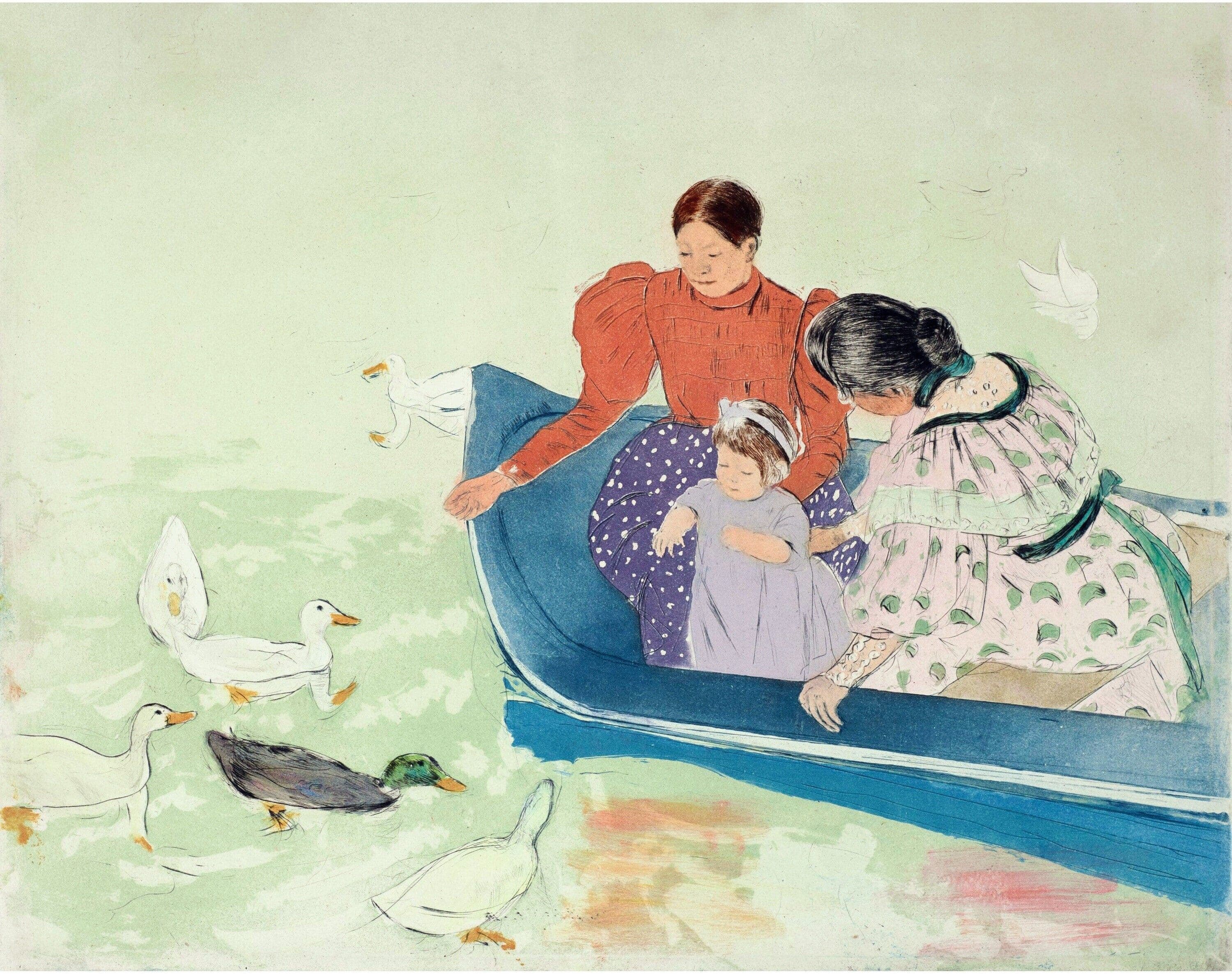
Mary Cassatt
View all artwork by Mary Cassatt
Mary Cassatt was an American painter and printmaker who became the only American artist to exhibit with the French Impressionists, creating distinctive images of the social and private lives of women. Born in Pennsylvania to a wealthy family, Cassatt studied at the Pennsylvania Academy of Fine Arts before moving permanently to Paris. She was invited by Edgar Degas to exhibit with the Impressionists, and her work combined Impressionist techniques with her own distinctive vision focused on the intimate moments of women's lives, particularly the bonds between mothers and children. Cassatt's paintings are characterized by strong drawing, bold compositions, and a modern approach to traditional subjects. Beyond painting, she was an accomplished printmaker, creating color prints influenced by Japanese ukiyo-e. Cassatt played an important role in advising American collectors, helping to build major American Impressionist collections. She represents a crucial link between American and French art, and her focus on women's experience provided an important counterpoint to male Impressionists' objectifying treatment of female subjects.

Maurice Pillard Verneuil
View all artwork by Maurice Pillard Verneuil
Maurice Pillard Verneuil was a French decorative artist and theorist who became one of the most important designers and teachers of Art Nouveau ornament. Born in Saint-Quentin, Verneuil studied under Eugène Grasset and became a prolific creator of decorative patterns, book illustrations, and designs for textiles, wallpapers, and various applied arts. His pattern books, including "Études de la Plante" and "L'Animal dans la Décoration," demonstrated how natural forms could be stylized into elegant decorative motifs suitable for various applications. Verneuil's designs combined careful observation of nature with sophisticated understanding of ornamental principles, showing how flowers, insects, and animals could inspire modern decorative vocabulary. As a teacher and through his published works, Verneuil influenced a generation of designers and helped establish principles of modern decorative design that bridged Art Nouveau and Art Deco. His work exemplifies the Art Nouveau commitment to reforming decorative arts through reference to nature and integration of art and industry.

Maxfield Parrish
View all artwork by Maxfield Parrish
Maxfield Parrish was an American painter and illustrator whose idealized, luminous images became among the most popular and widely reproduced artworks of the early 20th century. Born in Philadelphia, Parrish studied at the Pennsylvania Academy of Fine Arts and developed a distinctive style characterized by saturated colors (particularly a specific shade of blue now known as "Parrish blue"), precise technique, dramatic lighting, and idealized, often fantastical subjects. He worked extensively in commercial illustration, creating images for advertisements, magazines, books, and calendars that reached enormous audiences. Parrish's paintings typically feature idyllic landscapes, classical or medieval subjects, and beautiful figures in dreamlike settings, executed with meticulous craftsmanship and romantic imagination. His work represents the high point of American illustration's golden age and the successful integration of fine art technique with commercial purposes. Despite critical dismissal of his popular commercial work, Parrish achieved extraordinary financial success and cultural impact, with his images adorning millions of American homes.

Michelangelo Caetani
View all artwork by Michelangelo Caetani
Michelangelo Caetani was an Italian painter and member of the Caetani noble family, known for his watercolor landscapes and architectural views. Born into Roman aristocracy, Caetani pursued painting as both an artistic calling and gentlemanly pursuit, creating refined watercolors that documented Italian landscapes, architecture, and antiquities. His work exemplifies the tradition of topographical art that served both documentary and aesthetic purposes, recording sites of historical and cultural interest while creating beautiful images. Caetani's watercolors demonstrate the continuing vitality of landscape painting in 19th-century Italy and the important role played by aristocratic amateur artists in preserving visual records of Italian cultural heritage. His work bridges the traditions of Grand Tour topographical art and the developing interests of archaeology and architectural preservation.

Nikolai Astrup
View all artwork by Nikolai Astrup
Nikolai Astrup was a Norwegian painter and printmaker who created visionary images of the Norwegian landscape infused with folkloric and mystical elements. Born in rural western Norway, Astrup studied in Kristiania (Oslo) and Paris, where he encountered Post-Impressionism and Symbolism, but developed a highly personal style rooted in his experience of Norwegian nature and culture. His paintings feature the dramatic landscapes of western Norway—mountains, lakes, farms, and gardens—rendered with bold colors, expressive brushwork, and an almost hallucinatory intensity. Astrup often depicted seasonal festivals, particularly Midsummer Night celebrations, combining observed nature with folkloric and symbolic elements. His work represents a distinctive Norwegian contribution to modernism, demonstrating how an artist could absorb international influences while maintaining strong connections to local landscape and culture. Long underappreciated outside Norway, Astrup has gained international recognition as an important modernist whose work bridges naturalism and expressionism, reality and vision.

Ogata Korin
View all artwork by Ogata Korin
Ogata Kōrin was one of the greatest Japanese decorative painters, whose bold, stylized designs epitomize the Rinpa school aesthetic. Born into a wealthy Kyoto textile merchant family, Kōrin initially pursued a life of luxury before turning seriously to art in his forties. His work is characterized by dramatic simplification of forms, brilliant use of color and gold, and asymmetrical compositions that transform natural subjects into powerful decorative statements. Kōrin's paintings of irises, plum blossoms, waves, and other natural motifs demonstrate his ability to distill subjects to their essential elements while creating images of stunning beauty and impact. He revitalized the Rinpa school tradition established by Hon'ami Kōetsu and Tawaraya Sōtatsu, creating works that influenced Japanese decorative arts for centuries. Kōrin worked in various formats including screens, fans, lacquerware, and kimono designs, demonstrating the integration of fine and applied arts characteristic of Japanese aesthetics. His influence extended far beyond his lifetime, with the Rinpa tradition he revitalized continuing to inspire Japanese and international artists.

Ohara Koson
View all artwork by Ohara Koson
Ohara Koson was a Japanese printmaker who became one of the foremost artists of kacho-e (bird-and-flower prints) during the shin-hanga (new prints) movement of the early 20th century. Born in Kanazawa, Koson studied painting before turning to print design, creating hundreds of designs featuring birds, flowers, fish, and other natural subjects. His prints combine traditional Japanese aesthetics with subtle Western influences in composition and shading, creating images that are simultaneously traditional and modern. Koson's work is characterized by careful observation, elegant composition, and masterful use of color gradations achieved through woodblock printing techniques. His prints were primarily produced for export to Western markets, where they found appreciative audiences among collectors who valued their combination of decorative beauty and naturalistic observation. Koson represents the shin-hanga movement's success in revitalizing traditional woodblock printing while adapting to modern tastes and international markets.

Paul Chabas
View all artwork by Paul Chabas
Paul Chabas was a French academic painter best known for his idealized depictions of female nudes in natural settings, particularly his famous painting "September Morn," which became a cultural phenomenon in America. Born in Nantes, Chabas studied at the École des Beaux-Arts under William-Adolphe Bouguereau and Tony Robert-Fleury, becoming thoroughly grounded in French academic traditions. He specialized in paintings of young women bathing or resting in idyllic natural settings, rendered with smooth technique, soft lighting, and idealized beauty that exemplified late academic painting. "September Morn," showing a nude young woman wading in a lake, became notorious in America when censorship attempts made it one of the most reproduced images of the early 20th century. Chabas represents the final flowering of French academic painting, maintaining classical ideals of beauty and technical refinement even as modernist movements were transforming the art world. His success demonstrates the continuing appeal of academic art to popular audiences even after it lost critical favor.
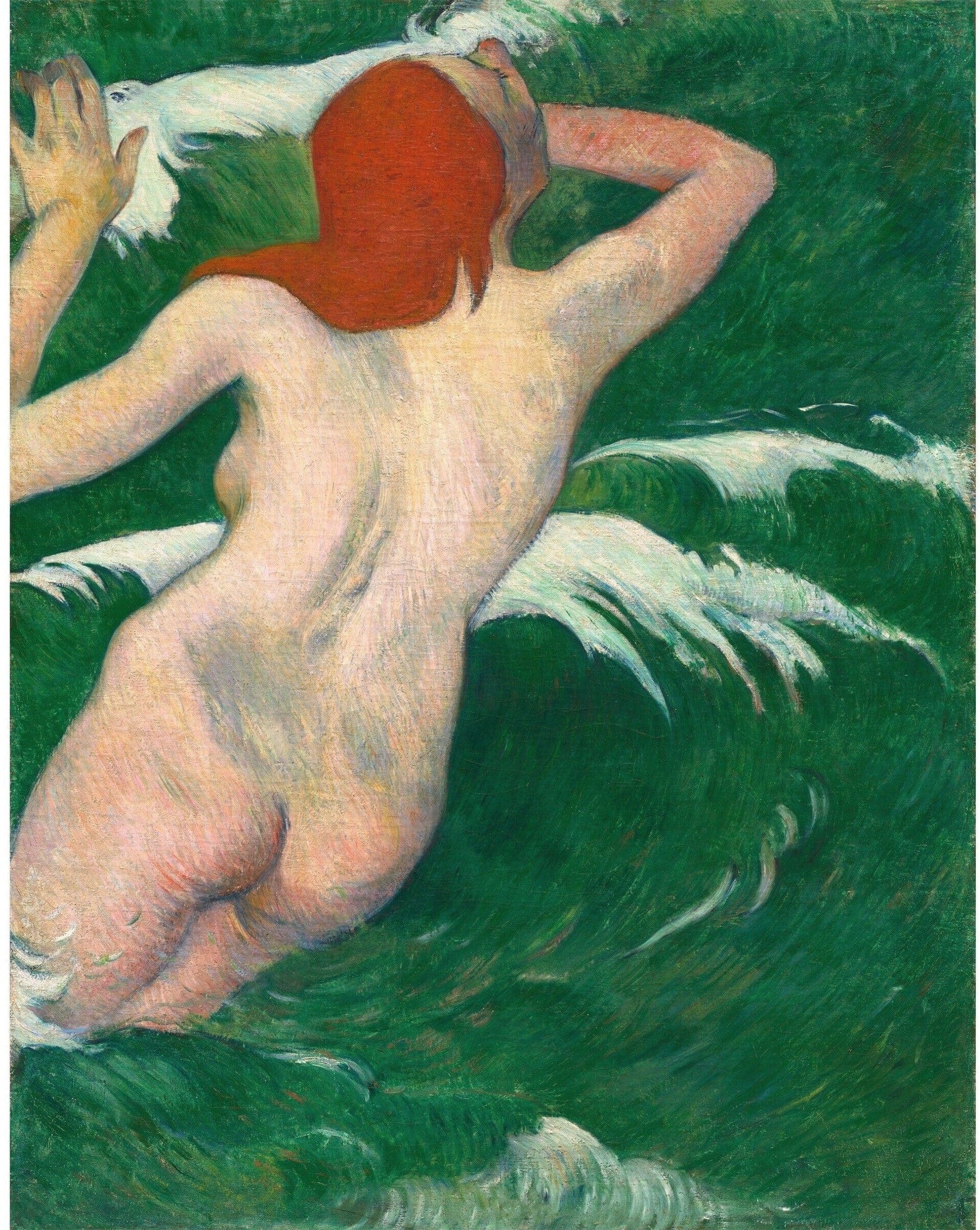
Paul Gauguin
View all artwork by Paul Gauguin
Paul Gauguin was a French Post-Impressionist artist whose bold use of color, simplified forms, and exploration of non-Western cultures profoundly influenced modern art. Initially a successful stockbroker and Sunday painter, Gauguin abandoned his conventional life to pursue art full-time, ultimately rejecting European civilization for what he perceived as more authentic, primitive cultures. After working with the Impressionists and spending time in Brittany developing a synthetist style characterized by flat areas of color and bold outlines, Gauguin traveled to Tahiti and the Marquesas Islands, where he created his most famous works. His Tahitian paintings feature local people and landscapes rendered in brilliant, non-naturalistic colors and simplified forms that conveyed emotional and symbolic meanings rather than optical reality. Gauguin's rejection of Western artistic conventions, his primitivism, and his emphasis on subjective expression influenced Fauvism, Expressionism, and the development of modern art. His life and work, though controversial and problematic in their relationship to colonialism and indigenous peoples, remain central to the history of modern painting.

Pieter Bruegel
View all artwork by Pieter Bruegel
Pieter Bruegel the Elder was the most significant Netherlandish painter of the 16th century, renowned for his landscapes and peasant scenes that combined close observation with moral complexity and visual sophistication. Born in or near Breda, Bruegel trained in Antwerp and traveled to Italy before establishing himself as a master painter. Unlike many contemporaries who focused on religious or mythological subjects in Italianate styles, Bruegel created distinctive images of Netherlandish life, including peasant festivals, village scenes, and allegorical subjects drawn from proverbs and folk wisdom. His masterpieces include "The Hunters in the Snow," "The Peasant Wedding," and "Netherlandish Proverbs," works that combine panoramic landscapes with intricate details of daily life. Bruegel's paintings demonstrate extraordinary technical skill, sophisticated composition, and a complex relationship to their subjects that resists simple interpretation. His work influenced subsequent Netherlandish painting and continues to fascinate viewers with its combination of accessibility and enigma, surface detail and underlying meanings.
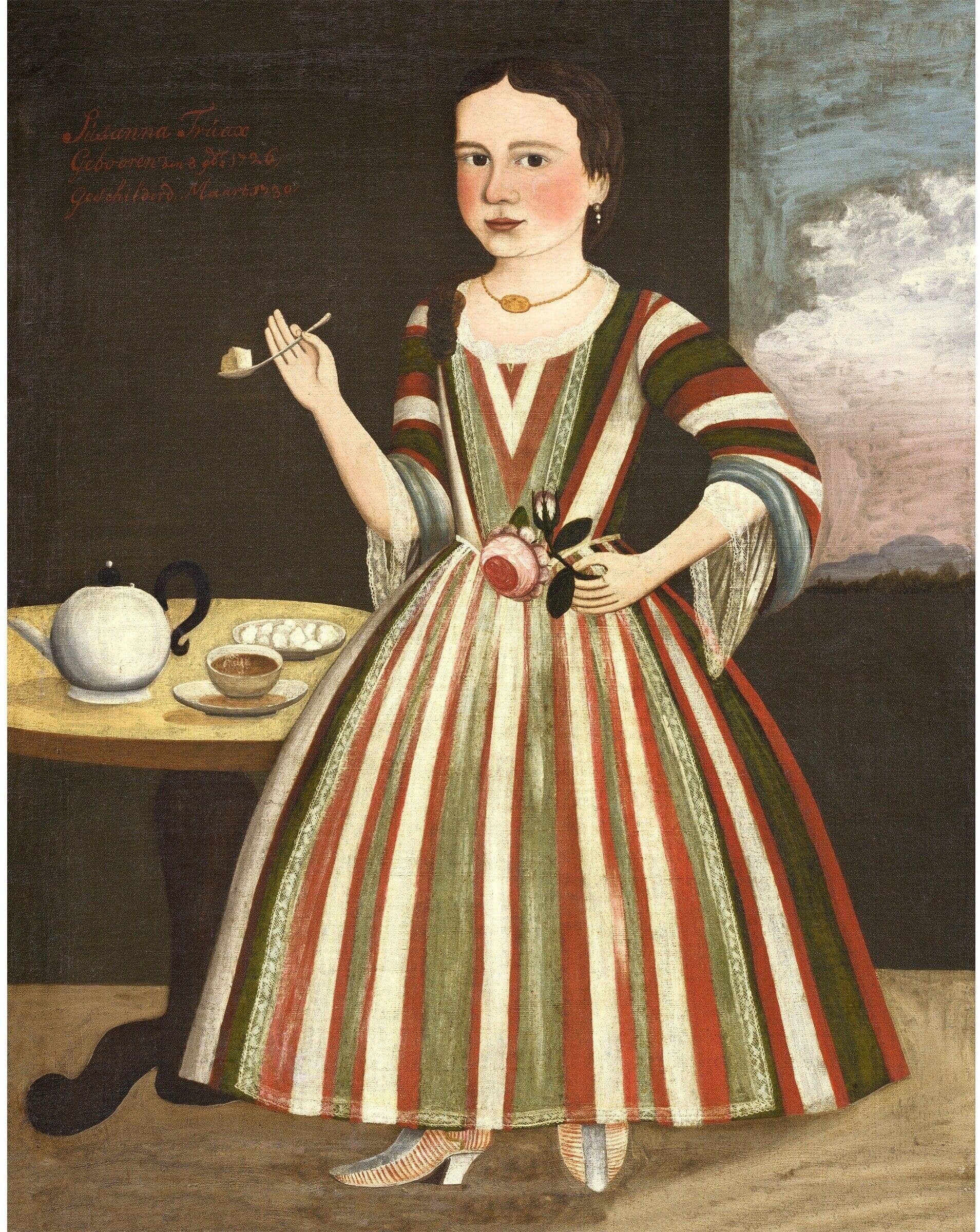
Pieter Vanderlyn
View all artwork by Pieter Vanderlyn
Pieter Vanderlyn was an early American portrait painter of Dutch colonial heritage, active in the Hudson River Valley during the 18th century. Born into the Dutch colonial community of Kingston, New York, Vanderlyn represented the continuation of Dutch artistic traditions in colonial America. He created portraits of local residents in a style that combined Dutch painting conventions with the provincial character of colonial life. His portraits are characterized by careful attention to costume and accessories, direct poses, and a somewhat flattened perspective typical of provincial portraiture. Vanderlyn's work provides valuable documentation of Dutch colonial society in New York and represents an important link between Dutch artistic traditions and emerging American art. His paintings exemplify the vernacular portrait traditions that existed in colonial America before the development of more sophisticated artistic institutions and practices in the early Republic.
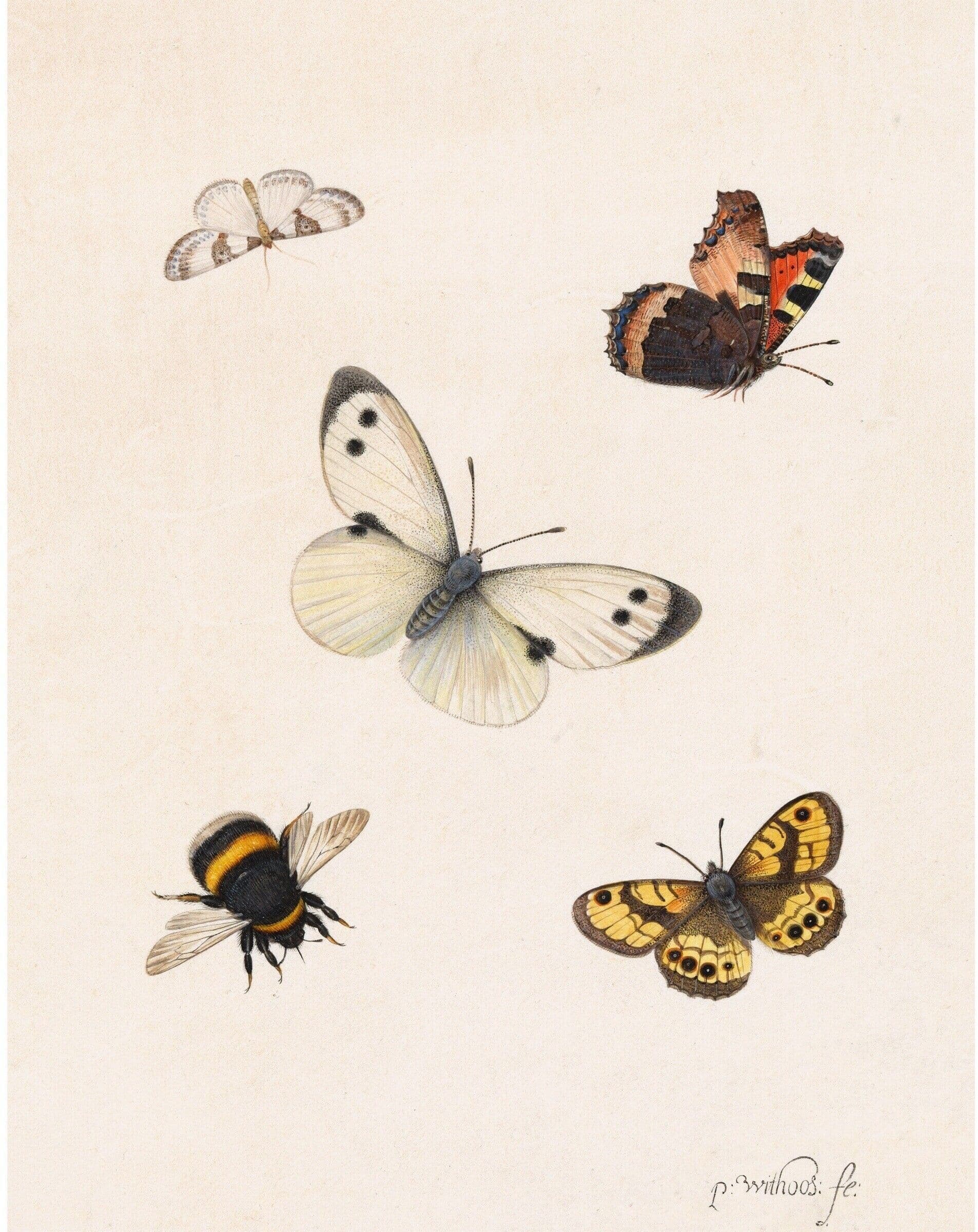
Pieter Withoos
View all artwork by Pieter Withoos
Pieter Withoos was a Dutch painter and draftsman known for his detailed studies of plants, insects, and small animals, continuing the tradition of natural history painting in the Dutch Golden Age. Born in Amersfoort, Withoos came from a family of artists and trained with his father Matthias Withoos, a specialist in landscape and natural history subjects. Pieter excelled in creating careful studies of flowers, butterflies, beetles, and other natural specimens, rendered with both scientific accuracy and artistic sensitivity. His work served multiple purposes: as records of natural phenomena, as subjects for contemplation of divine creation, and as decorative objects appreciated for their beauty and craftsmanship. Withoos's natural history studies demonstrate the Dutch Golden Age interest in empirical observation and the close connections between art, science, and natural theology. His meticulous renderings influenced both scientific illustration and decorative painting, contributing to the rich tradition of Dutch natural history art.

Robert Burns
View all artwork by Robert Burns
Robert Burns (not to be confused with the Scottish poet) was an early American portrait painter active in the late 18th century. Little biographical information survives about many early American artists who worked outside major urban centers and left limited documentary records. Artists like Burns created portraits for local communities, developing provincial styles that adapted European portrait conventions to American circumstances and clientele. These early American portraitists played an important role in documenting colonial and early Federal society while establishing the foundations for American portrait traditions. Their work provides valuable historical evidence of early American life while demonstrating the artistic skills and aesthetic sensibilities present in early America despite limited access to academic training or European artistic centers.
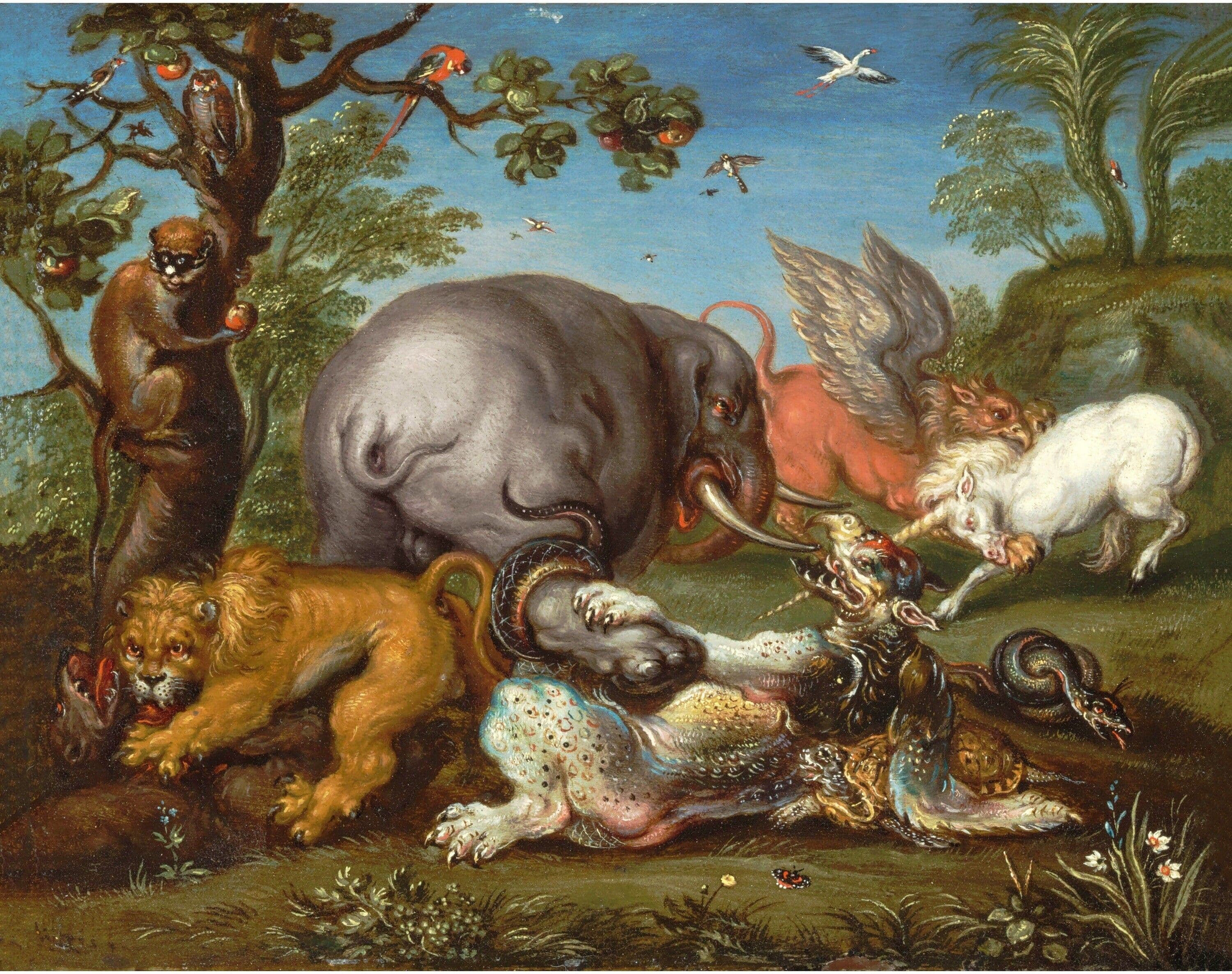
Roelant Savery
View all artwork by Roelant Savery
Roelant Savery was a Flemish-born Dutch painter celebrated for his Paradise scenes filled with diverse animals, his landscapes, and his flower still lifes. Born in Kortrijk (Flanders), Savery moved to Amsterdam as a child and later worked for Emperor Rudolf II in Prague and Emperor Matthias in Vienna, where he had access to the imperial menageries and natural history collections. This experience influenced his signature subject: densely populated Paradise or Garden of Eden scenes featuring dozens of different animals, birds, and plants, painted with meticulous detail and naturalistic accuracy. Savery's animal paintings demonstrate both careful observation and artistic imagination, creating images that were simultaneously scientific records, theological statements about divine creation, and spectacular displays of painterly skill. He also created influential landscape paintings, particularly scenes of Bohemian mountain landscapes. Savery's work exemplifies the late Mannerist tradition in Northern European art and influenced the development of animal painting and landscape as independent genres.
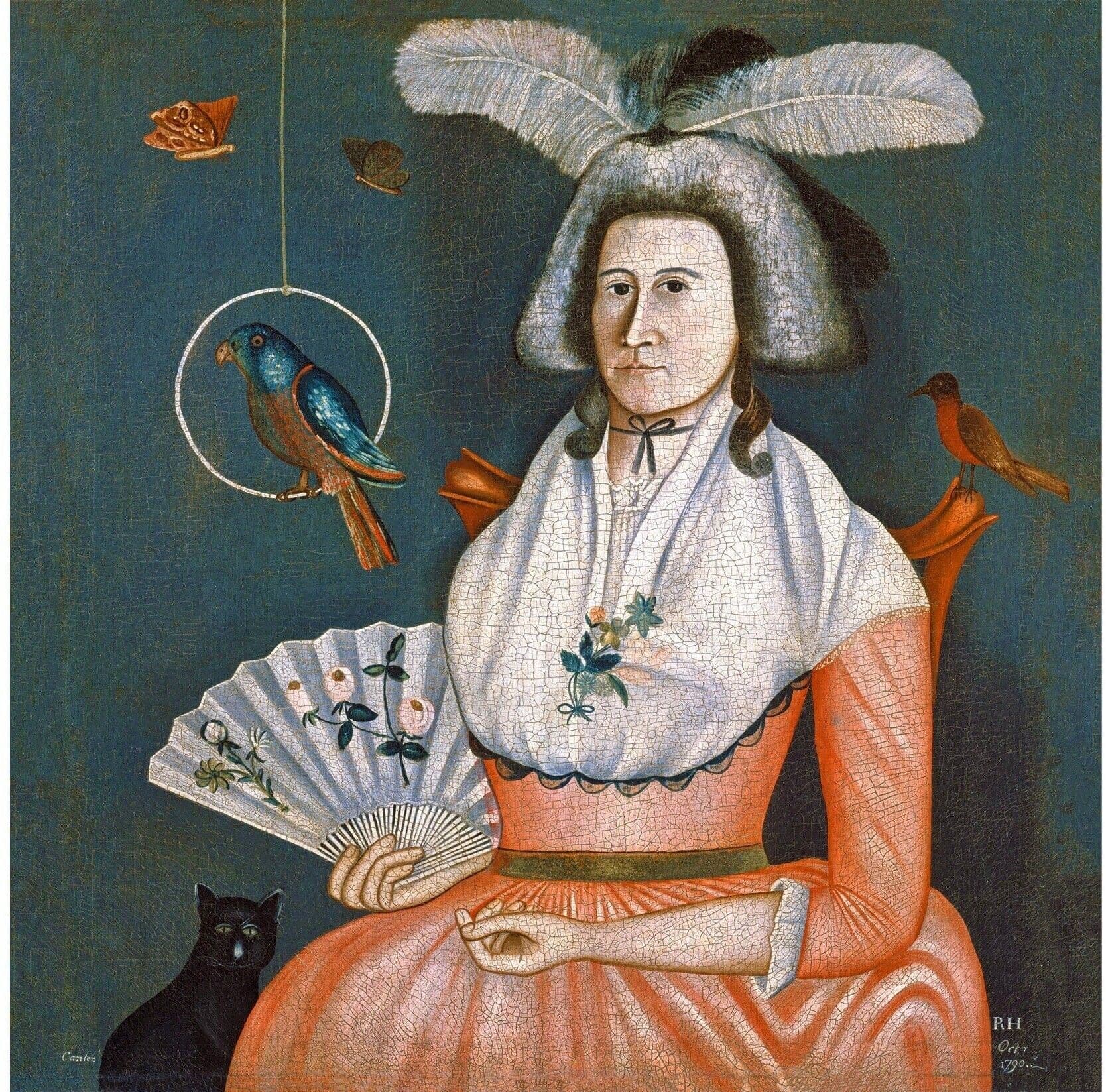
Rufus Hathaway
View all artwork by Rufus Hathaway
Rufus Hathaway was an early American portrait painter whose distinctive folk art style exemplifies the provincial portrait traditions of Federal-era New England. Born in Freetown, Massachusetts, Hathaway worked as a physician and self-taught artist, creating portraits for residents of southeastern Massachusetts. His paintings are characterized by their flat, linear quality, careful attention to costume and decorative details, and a somewhat awkward but compelling handling of anatomy and perspective. Hathaway's portraits demonstrate the aesthetic of American folk portraiture: emphasis on pattern and detail over naturalistic representation, direct presentation of subjects, and a charming naïveté that creates distinctive visual character. His work represents the vernacular artistic traditions that existed alongside more academically trained portraitists in early America, providing visual documentation of ordinary Americans while creating images of considerable aesthetic interest. Hathaway exemplifies the self-taught artist working within local communities to meet the desire for portraiture in early America.

Ryan Tshogs
View all artwork by Ryan Tshogs
rGya mtsho bKra shis, known as Ryan Tshogs, was a Tibetan painter working in the traditional thangka painting tradition. Thangka paintings are Tibetan Buddhist religious artworks created on silk or cotton, depicting Buddhist deities, mandalas, scenes from Buddhist scriptures, and other religious subjects. These paintings serve both devotional and instructional purposes within Tibetan Buddhism, used in meditation practices and religious teachings. Thangka painters worked within strict iconographic conventions that prescribed the appearance, attributes, poses, and relationships of religious figures, though skilled artists could express individual artistry within these constraints. The creation of thangkas was considered a spiritual practice as well as an artistic one, with painters often working under monastic patronage. Artists like Ryan Tshogs maintained and transmitted the sophisticated Tibetan painting tradition, which synthesized Indian, Chinese, and indigenous Tibetan artistic elements into a distinctive visual language for expressing Buddhist teachings.
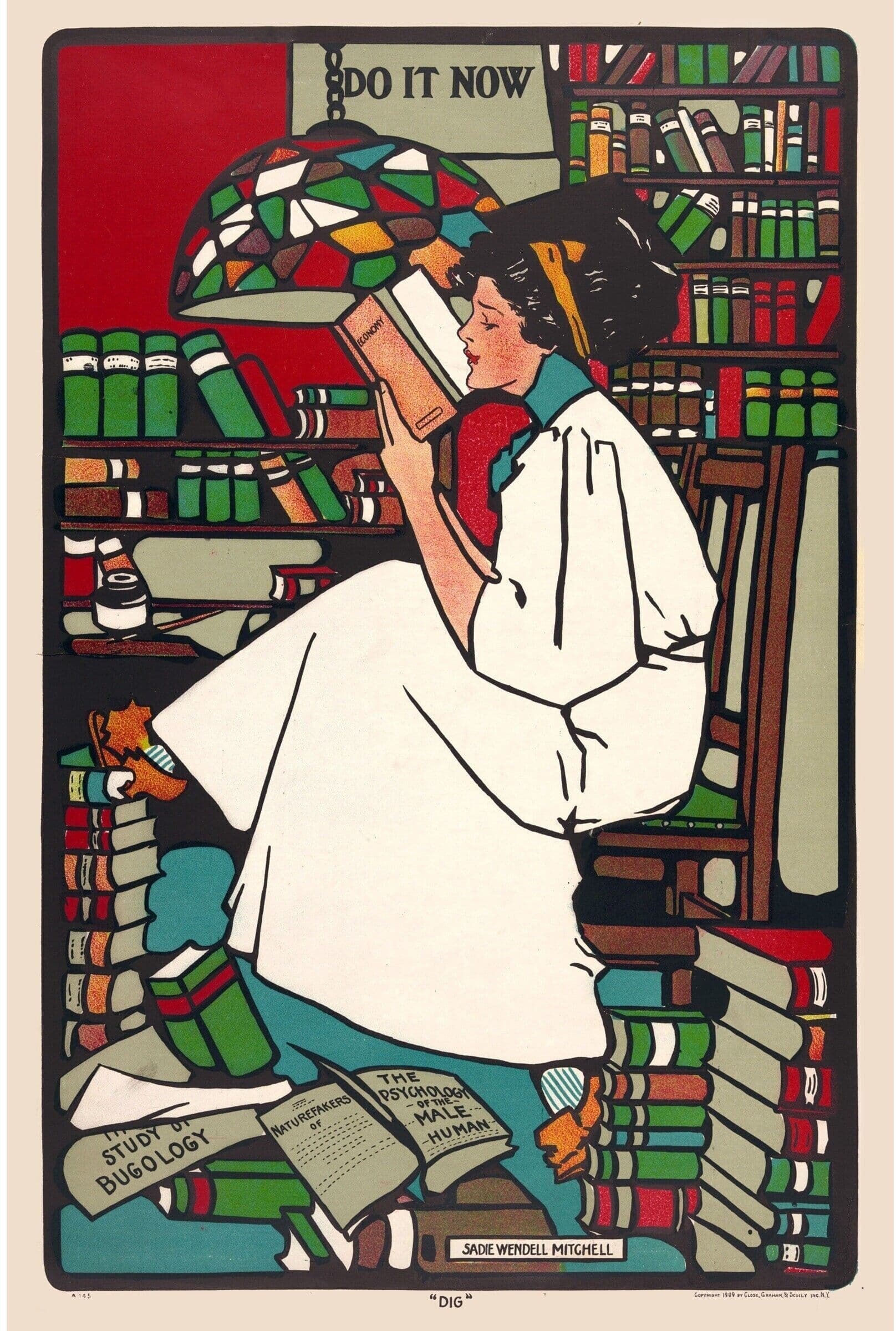
Sadie Wendell Mitchell
View all artwork by Sadie Wendell Mitchell
Sadie Wendell Mitchell was an American painter and illustrator active in the late 19th and early 20th centuries. Working during a period when increasing opportunities were opening for women artists, Mitchell created paintings and illustrations that demonstrated professional skill and artistic sensibility. Like many women artists of her generation, she navigated the challenges of establishing a professional career in a male-dominated field while developing her own artistic voice. Her work reflects the various artistic movements and commercial opportunities available to women artists in turn-of-the-century America, from traditional landscape and genre subjects to illustration for books and periodicals. Artists like Mitchell represent the growing professionalization of women in American arts during the Progressive Era, when educational opportunities expanded and public acceptance of women professionals increased, though significant barriers remained.
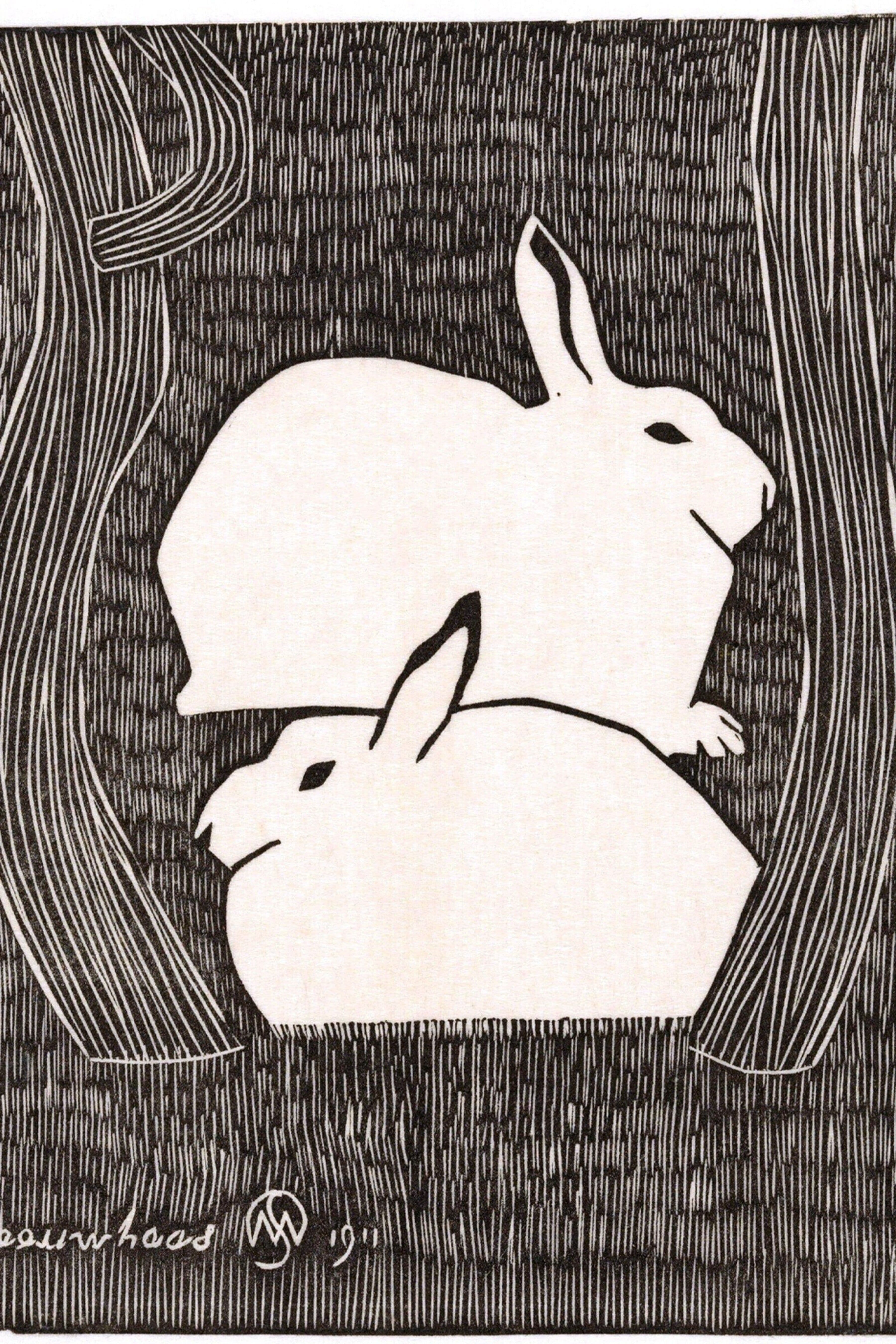
Samuel Jessurun de Mesquita
View all artwork by Samuel Jessurun de Mesquita
Samuel Jessurun de Mesquita was a Dutch graphic artist and teacher whose powerful woodcuts and linocuts demonstrate remarkable technical mastery and expressive force. Born in Amsterdam to a Portuguese-Jewish family, Jessurun de Mesquita studied at the Amsterdam Academy and became an influential teacher, with M.C. Escher among his students. His prints feature bold contrasts, intricate patterns, and subjects ranging from portraits to animals to fantastical imagery, all rendered with extraordinary precision and imaginative vision. Jessurun de Mesquita's work combined Art Nouveau decorative influences with a darker, more expressionistic sensibility, creating prints that are simultaneously beautiful and unsettling. He specialized in depicting exotic animals, particularly big cats, rendered with both naturalistic observation and symbolic power. Tragically, Jessurun de Mesquita and his wife were murdered at Auschwitz during the Holocaust, and much of his work was destroyed. His surviving prints demonstrate the remarkable achievements of early 20th-century printmaking and stand as testament to a life and talent cut short by genocide.

Santiago Ramón y Cajal
View all artwork by Santiago Ramón y Cajal
Santiago Ramón y Cajal was a Spanish neuroscientist and pathologist who won the Nobel Prize in Physiology or Medicine for his groundbreaking research on the nervous system, and whose scientific drawings represent a remarkable fusion of art and science. Born in rural Aragón, Cajal initially aspired to be an artist but pursued medicine at his father's insistence. His artistic talents proved essential to his scientific work: using modified Golgi staining techniques, he created thousands of meticulously detailed drawings of neurons and neural structures that revolutionized understanding of the nervous system. Cajal's drawings are not merely scientific illustrations but works of remarkable aesthetic beauty, demonstrating his extraordinary powers of observation, technical drawing skill, and ability to represent complex three-dimensional structures on two-dimensional surfaces. His images helped establish the neuron doctrine—the understanding that the nervous system is composed of discrete cells rather than a continuous network. Cajal represents the ideal of the artist-scientist, whose visual imagination and aesthetic sensibility served scientific discovery.
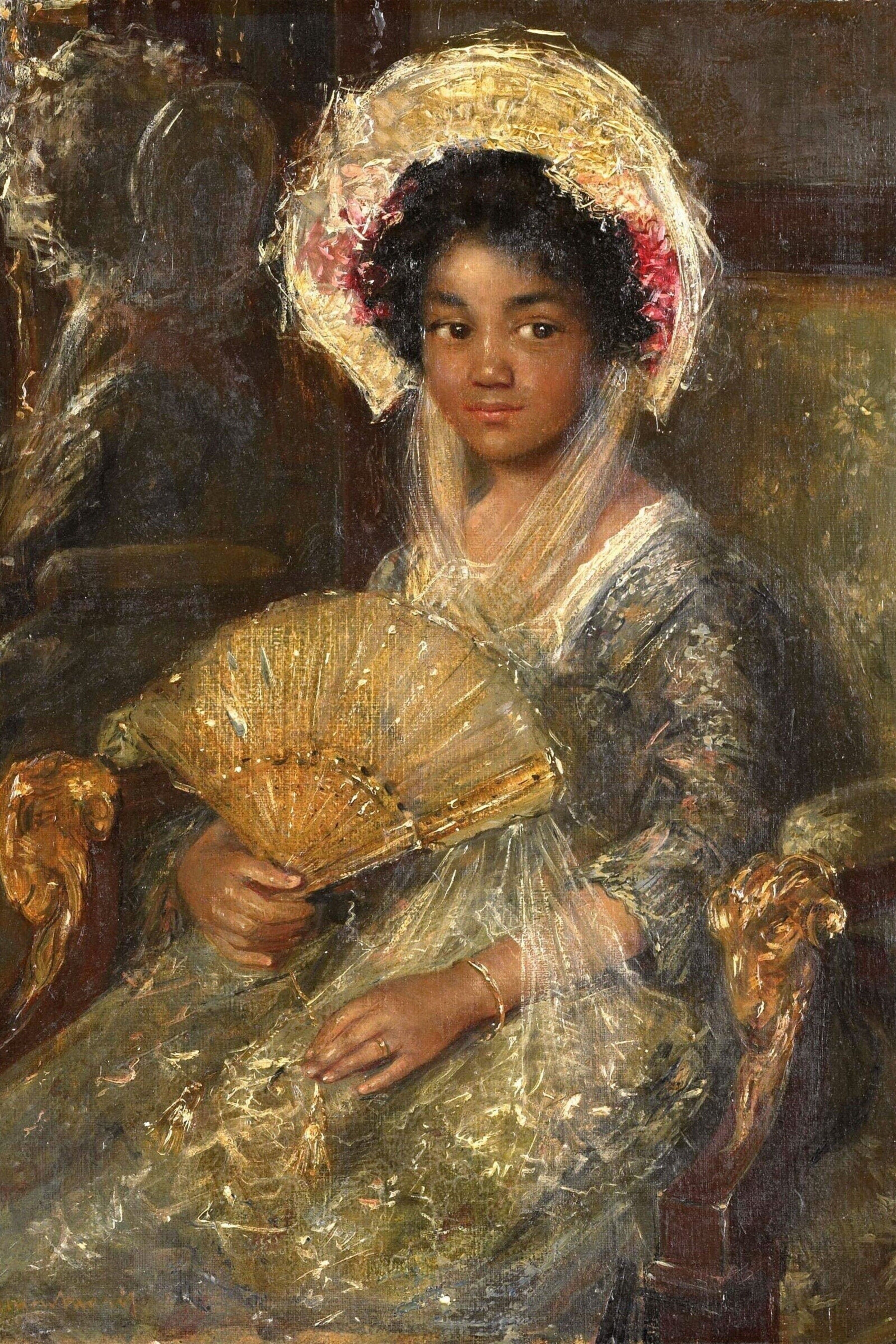
Simon Maris
View all artwork by Simon Maris
Simon Maris was a Dutch painter associated with the Amsterdam Impressionism movement, known for his atmospheric landscapes, portraits, and still lifes rendered with subtle tonalities and refined brushwork. Born in The Hague into an artistic family, Maris developed a style characterized by muted colors, soft light, and contemplative mood. His paintings often feature Dutch landscapes, interiors, and quiet domestic scenes painted with sensitivity to atmosphere and subtle gradations of tone. Maris represented a particularly Dutch response to Impressionism, emphasizing tonal harmony and mood over the bright colors and broken brushwork of French Impressionism. His work continues the Dutch tradition of painting that values atmospheric effects, quiet subjects, and technical refinement. Maris taught at the Rijksakademie and influenced subsequent generations of Dutch painters, maintaining connections to Dutch artistic traditions while engaging with contemporary European developments.
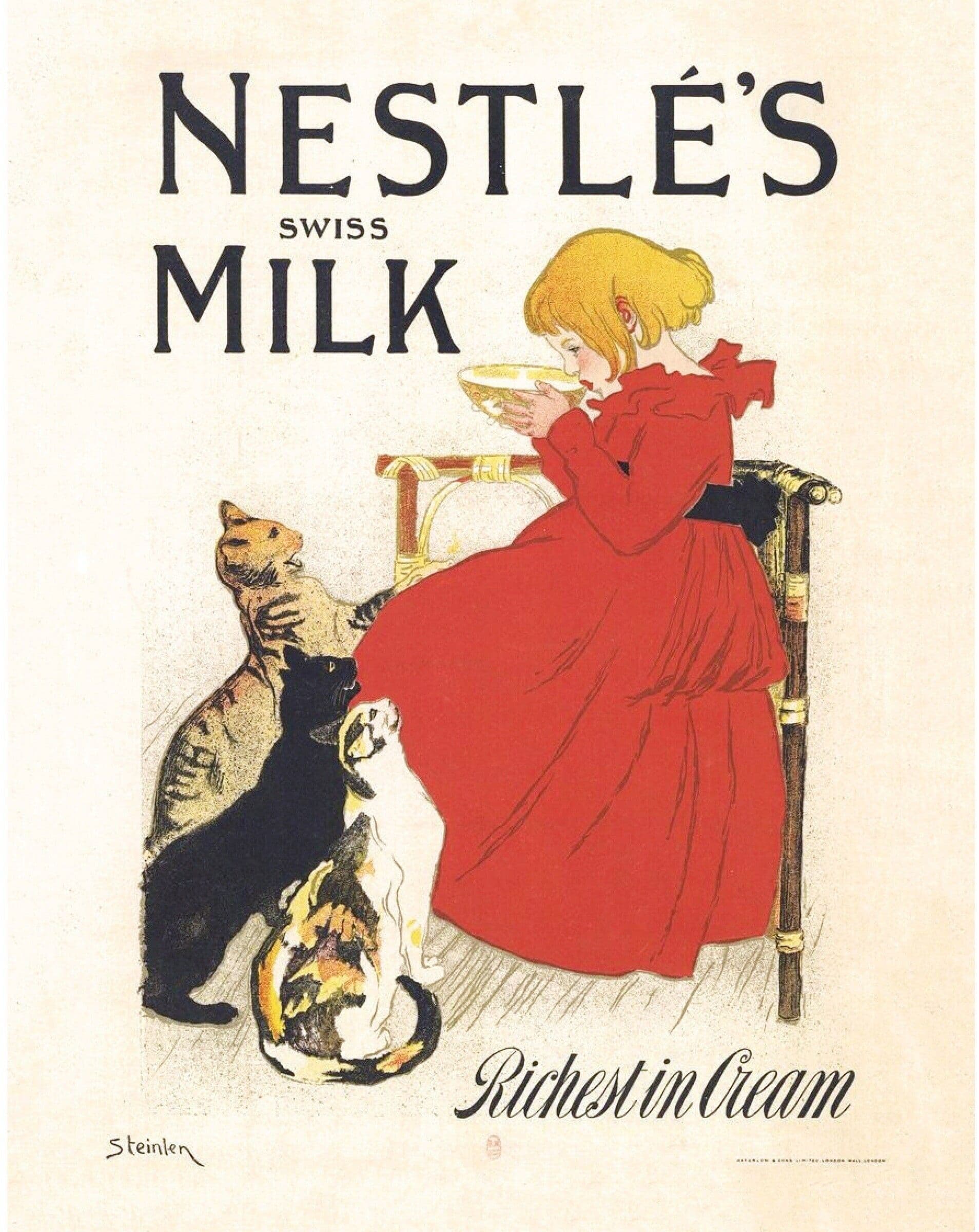
Theophile Steinlen
View all artwork by Theophile Steinlen
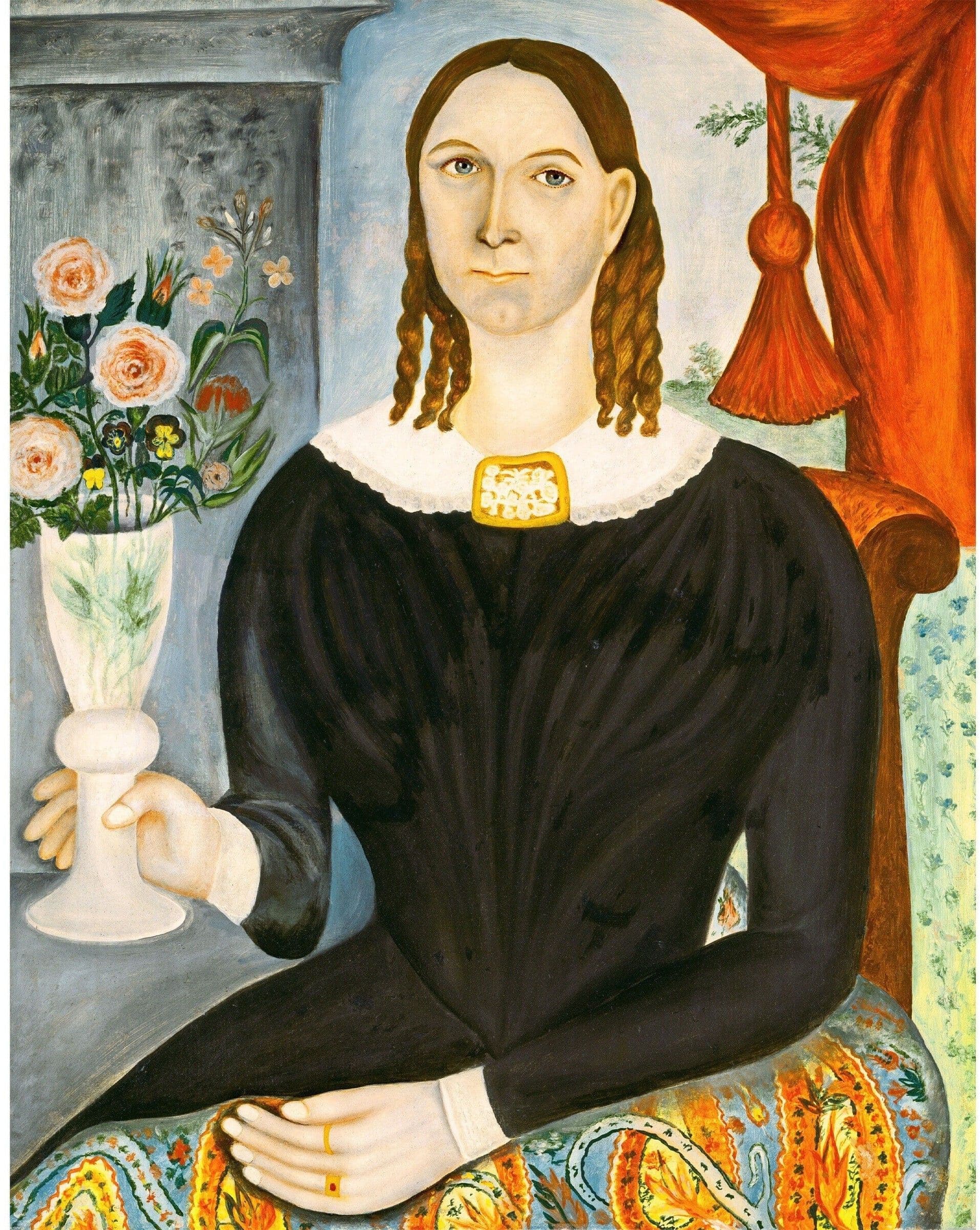
Thomas Skynner
View all artwork by Thomas Skynner
Thomas Skynner was a British artist active in the 18th or early 19th century about whom little biographical information survives. Many artists working in Britain during this period, particularly those working outside London or in specialized fields like topographical drawing or commercial illustration, left limited documentary records. Artists like Skynner contributed to the rich visual culture of Georgian and Regency Britain, creating works that served various purposes from topographical documentation to decorative arts. The survival of works attributed to Skynner provides evidence of artistic activity and aesthetic sensibilities even when biographical details have been lost to history, reminding us that many skilled artists worked without achieving lasting fame or leaving extensive historical records.
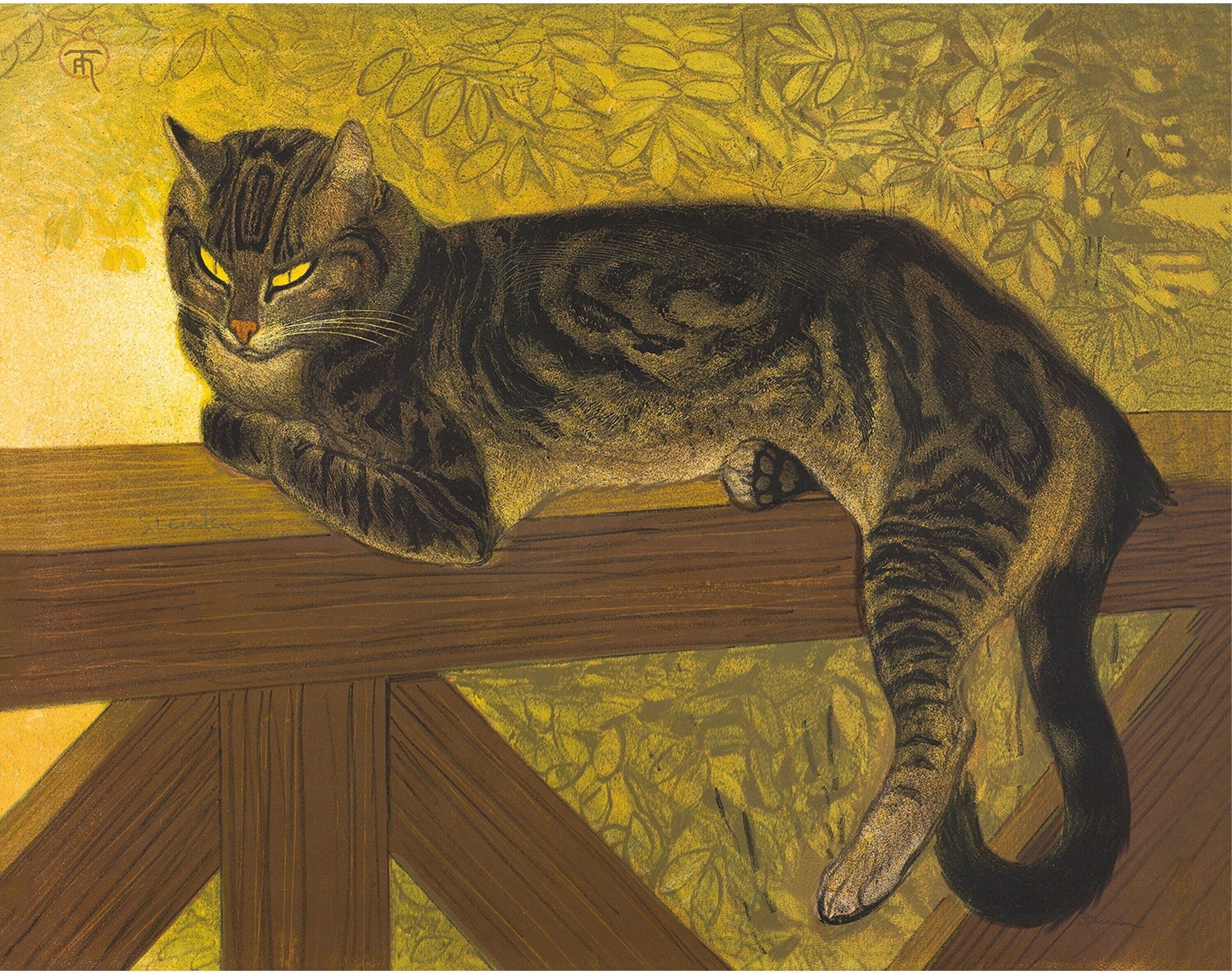
Théophile‑Alexandre Steinlen
View all artwork by Théophile‑Alexandre Steinlen
Théophile-Alexandre Steinlen was a Swiss-born French Art Nouveau painter, printmaker, and poster artist renowned for his images of cats, his posters for Montmartre cabarets, and his sympathetic depictions of Parisian working-class life. Born in Lausanne, Switzerland, Steinlen moved to Paris where he became associated with the bohemian artistic community of Montmartre. His most famous work, the poster "Tournée du Chat Noir," featuring a black cat, became an icon of Belle Époque Paris and remains one of the most recognizable images of the era. Beyond his commercial work, Steinlen created numerous drawings, prints, and paintings depicting the daily lives of working people, prostitutes, and the urban poor, rendered with both social awareness and artistic skill. His style combined Art Nouveau decorative elements with a more naturalistic approach influenced by his social concerns. Steinlen's prolific output and his ability to work across fine art and commercial illustration made him one of the most visible artists of turn-of-the-century Paris.
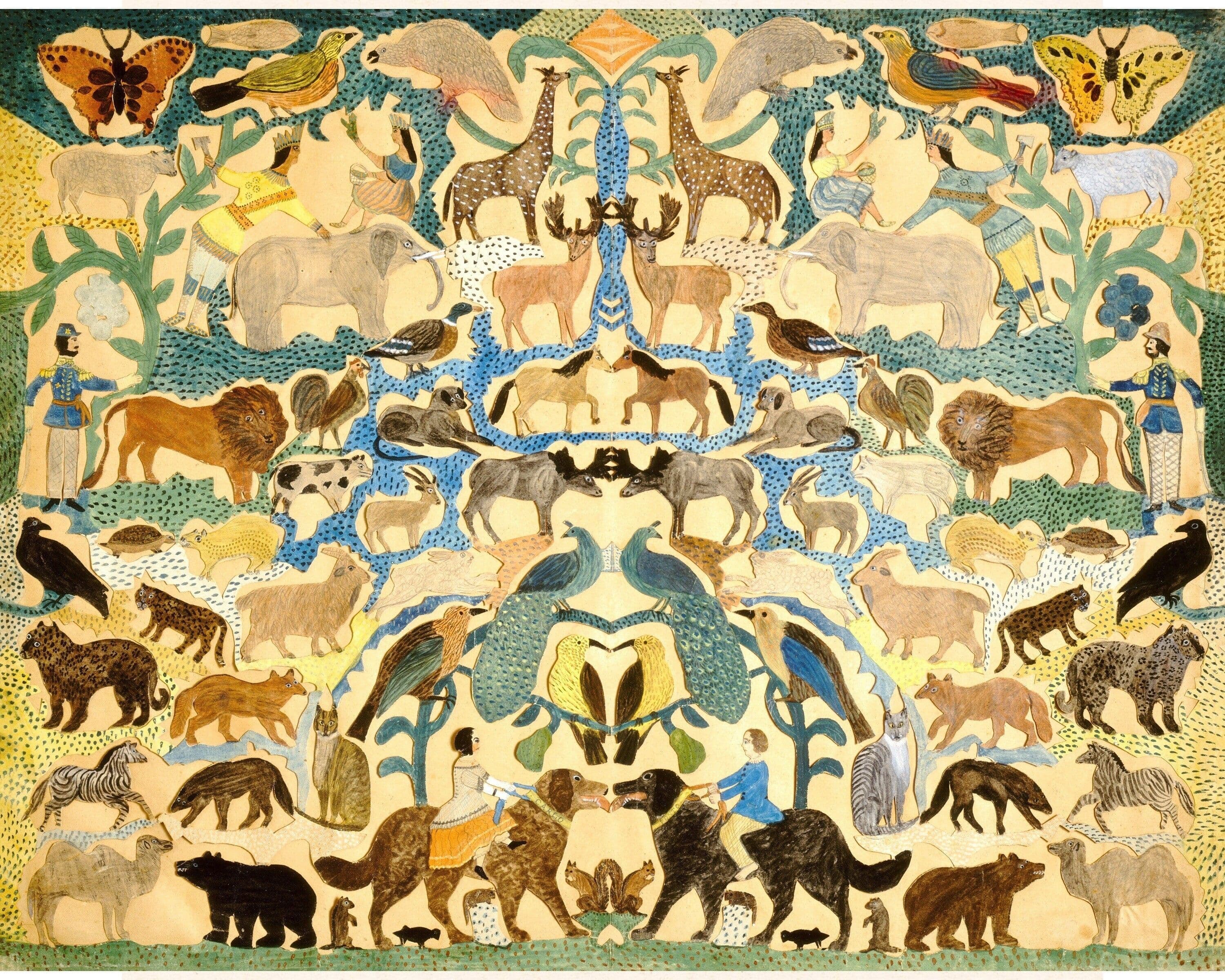
Unknown
View all artwork by Unknown
Throughout art history, countless works have been created by artists whose identities have been lost to time. These unknown artists include anonymous medieval manuscript illuminators, folk artists working in vernacular traditions, indigenous artists whose names were never recorded by colonizers, craftspeople whose work was not considered worthy of attribution, and makers working in collective traditions where individual authorship was not emphasized. Works by unknown artists provide valuable evidence of artistic practices, aesthetic sensibilities, and cultural values across different times and places, even when we cannot attach them to specific individuals. The category "Unknown" reminds us that art historical knowledge is incomplete and that many skilled, creative individuals have contributed to visual culture without receiving individual recognition. These anonymous works often demonstrate remarkable artistic achievement and continue to provide aesthetic pleasure and historical insight despite our inability to identify their creators.
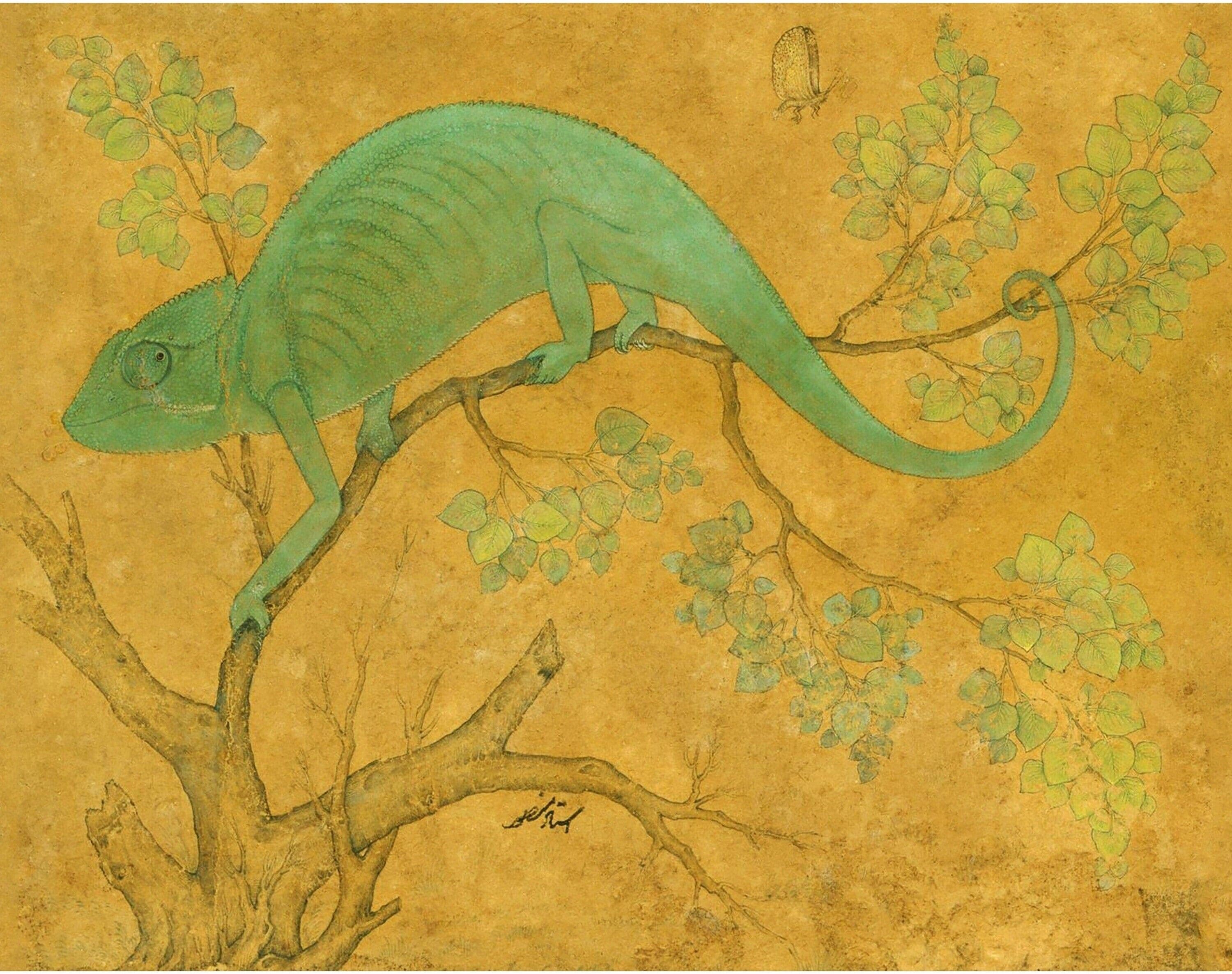
Ustad Mansur
View all artwork by Ustad Mansur
Ustad Mansur was one of the greatest painters in the Mughal imperial workshops, renowned for his extraordinarily detailed and lifelike depictions of birds, animals, and flowers. Working under emperors Akbar, Jahangir, and Shah Jahan, Mansur achieved the title "Ustad" (master) and received the honorific "Nadir-al-Asr" (Wonder of the Age) from Emperor Jahangir, who particularly valued naturalistic painting. Mansur's paintings demonstrate exceptional observational skills and technical mastery, depicting rare and exotic creatures brought to the Mughal court with scientific accuracy and artistic refinement. His studies of birds, including the Siberian crane and various exotic species, combine meticulous detail with compositional elegance. Mansur represents the height of Mughal natural history painting, when careful observation of nature was valued both for scientific knowledge and aesthetic pleasure. His work bridges Persian miniature traditions and emerging interests in naturalistic representation, creating images that served both imperial glorification and genuine scientific interest.
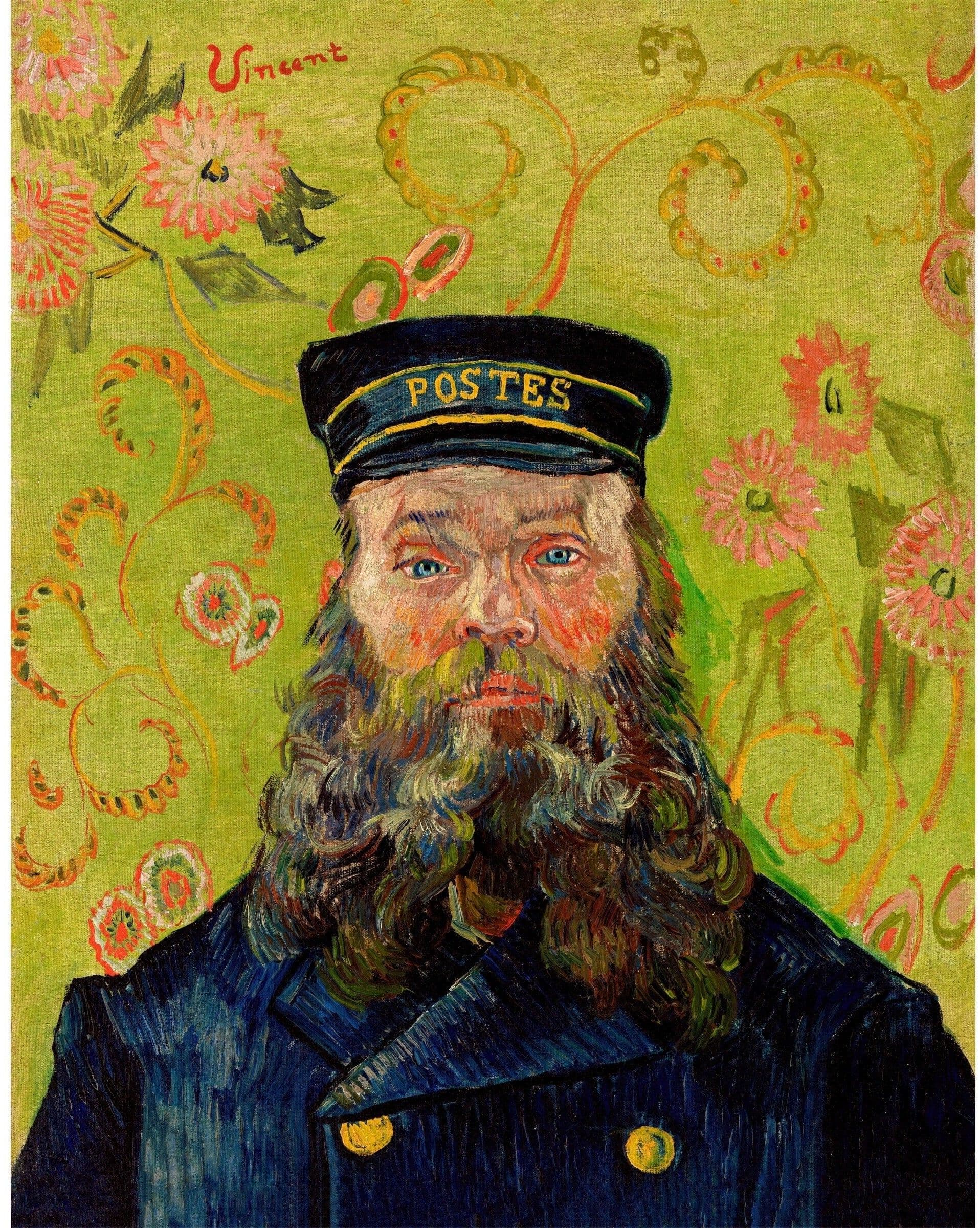
Vincent van Gogh
View all artwork by Vincent van Gogh
Vincent van Gogh was a Dutch Post-Impressionist painter who created some of the most famous and influential works in Western art despite selling only one painting during his lifetime and struggling with mental illness throughout his career. Born in the Netherlands, van Gogh worked various jobs including art dealer and missionary before devoting himself to painting in his late twenties. His early work featured dark, earthy colors and subjects drawn from peasant life, but after moving to Paris and encountering Impressionism and Japanese prints, his palette brightened and his technique evolved. Van Gogh's mature style, developed in Arles and Saint-Rémy, features expressive brushwork, intense colors, and emotional directness that convey his inner experiences and his profound response to nature. Despite periods of mental crisis and voluntary commitment to an asylum, van Gogh worked with extraordinary productivity, creating hundreds of paintings and drawings in just over a decade. His suicide at age 37 ended a tragically short career, but his work's emotional power, innovative technique, and distinctive vision profoundly influenced Expressionism and modern art. Van Gogh's posthumous fame has made works like "Starry Night" and "Sunflowers" among the most recognized images in art history.

Warwick Goble
View all artwork by Warwick Goble
Warwick Goble was a British illustrator whose delicate, imaginative illustrations for fairy tales and folklore represent an important contribution to the Golden Age of illustration. Born in London, Goble initially worked as a printer and lithographer before establishing himself as a book illustrator. He became particularly known for his illustrations of fairy tales, including works by H.G. Wells, folktales from various cultures, and classic children's literature. Goble's style was influenced by Japanese art, particularly in his use of composition, line, and flat areas of color, but maintained a distinctly Western sensibility. His watercolor illustrations feature ethereal quality, delicate detail, and a romantic imagination that perfectly captured the dreamlike atmosphere of fairy tales and fantasy. Goble worked extensively on gift books—lavishly illustrated editions intended as luxury objects—which showcased his refined technique and decorative sense. His work represents the early 20th-century fascination with folklore, orientalism, and the possibilities of color printing technology, contributing to the rich tradition of British book illustration.
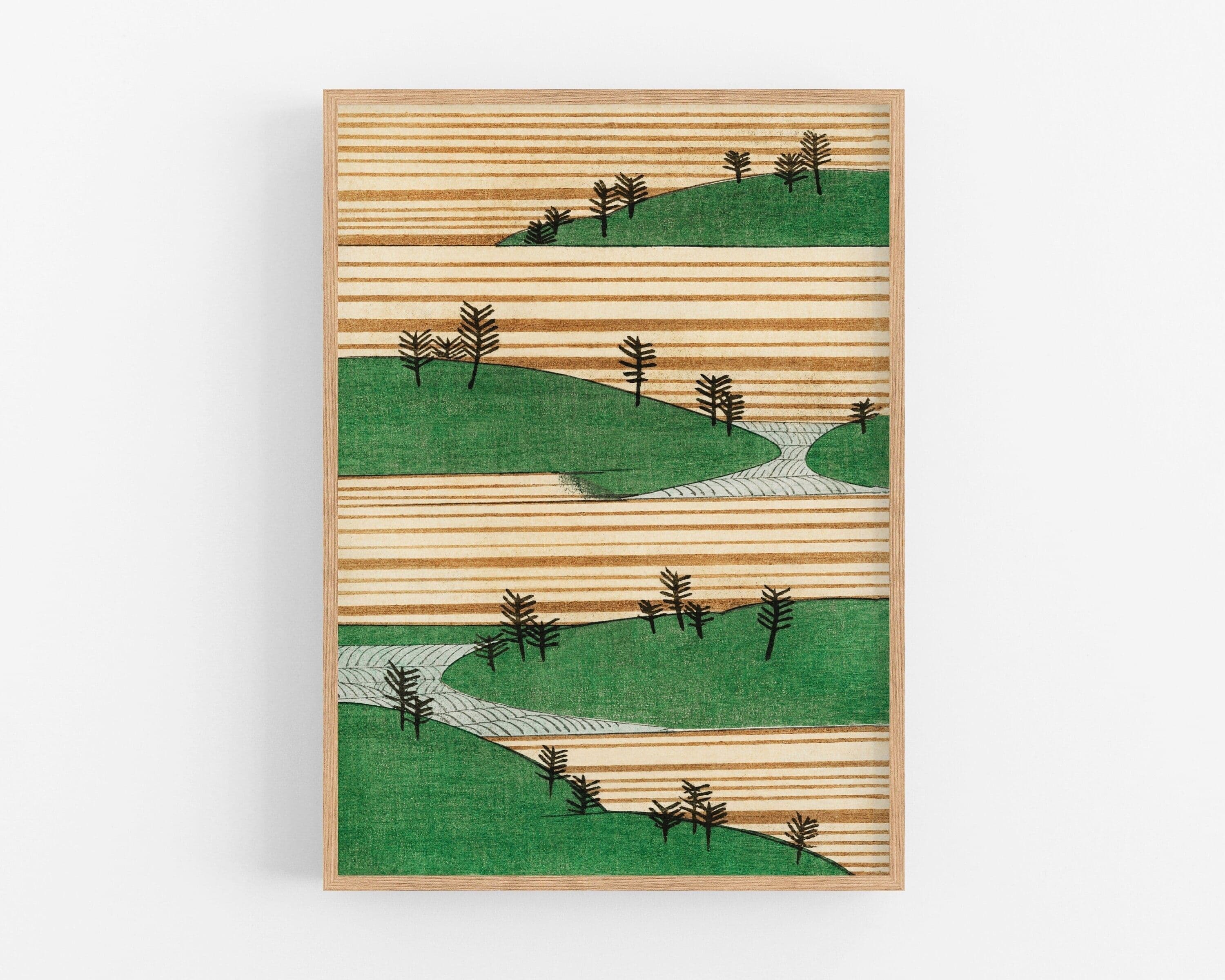
Watanabe Seitei
View all artwork by Watanabe Seitei
Watanabe Seitei was a Japanese painter and woodblock print designer who successfully navigated between traditional Japanese artistic practices and Western influences during the Meiji period. Born in Edo (Tokyo), Seitei studied both traditional Japanese painting and Western techniques, becoming proficient in both. He excelled in kacho-ga (bird-and-flower painting), creating works that combined traditional Japanese subjects and aesthetic sensibilities with subtle Western influences in modeling and spatial construction. Seitei was particularly successful in creating designs for export, understanding how to adapt Japanese artistic traditions to appeal to Western collectors while maintaining artistic integrity. His prints and paintings demonstrate refined technique, careful observation of nature, and an ability to synthesize different artistic traditions without sacrificing coherence or quality. Seitei represents the Meiji period's complex cultural negotiations, as Japanese artists adapted to modernization and international engagement while preserving valued traditional practices.
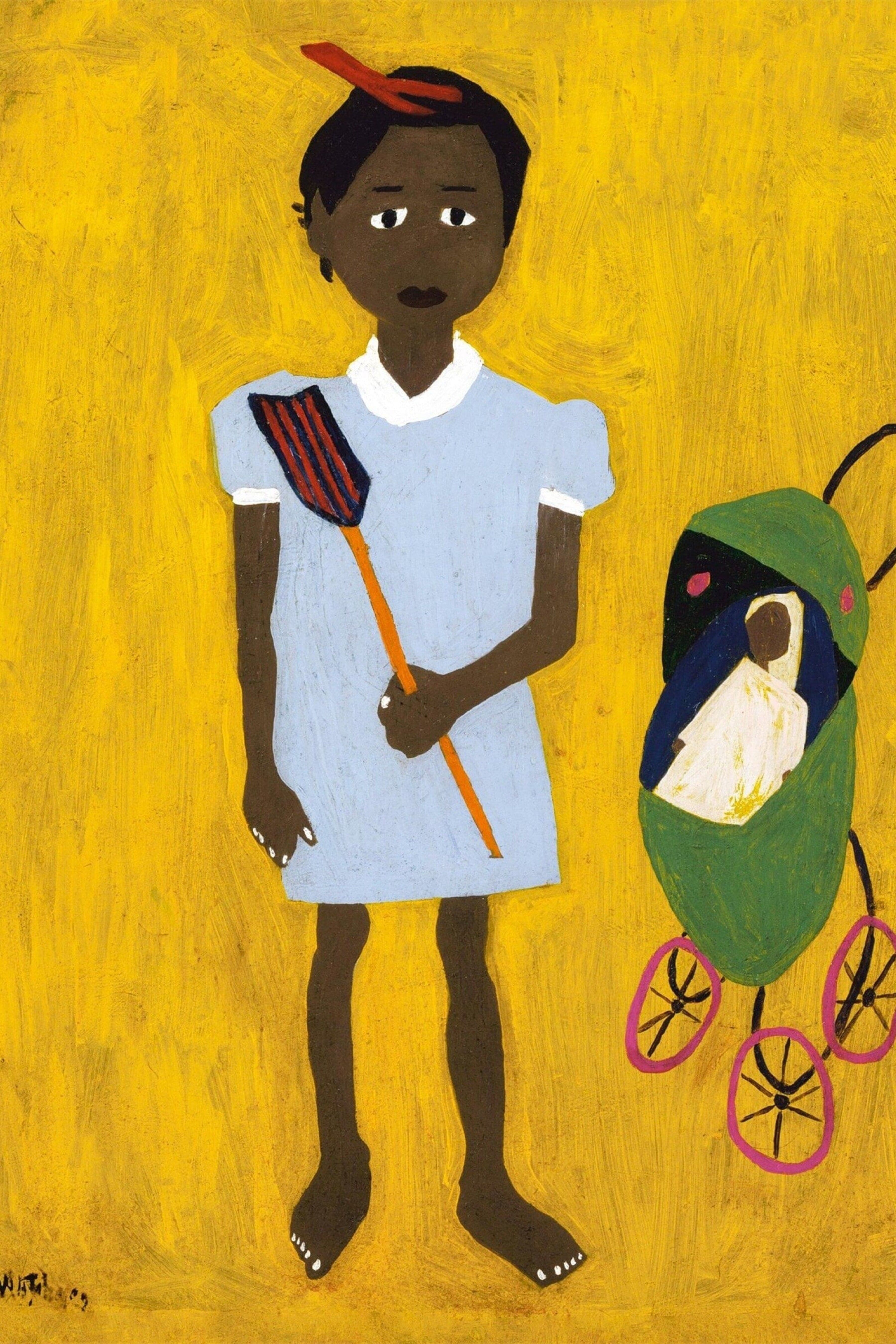
William H. Johnson
View all artwork by William H. Johnson
William H. Johnson was an African American painter whose distinctive style evolved from European modernist influences to a powerful folk art-inspired approach that celebrated African American life and culture. Born in South Carolina, Johnson studied at the National Academy of Design in New York and in Europe, where he was influenced by Expressionism and worked in a sophisticated modernist style. After witnessing the poverty and racism in the American South and experiencing rising fascism in Europe, Johnson dramatically changed his approach, adopting a deliberately primitive style characterized by flat forms, bold colors, and simplified compositions. This later style, which he used to depict African American life, religious subjects, and historical scenes, was intended to be more accessible and to celebrate Black culture and experiences. Johnson's career was cut short by mental illness, and he spent his last years in institutions. His work, largely unknown during his lifetime, has since been recognized as an important contribution to American art and to African American cultural expression, representing both sophisticated artistic achievement and powerful social statement.

Xavier Martinez
View all artwork by Xavier Martinez
Xavier Martínez was a Mexican-born painter who became an important figure in early California modernism, bringing European artistic training and Mexican cultural perspective to the San Francisco Bay Area art scene. Born in Guadalajara, Mexico, Martínez studied at the San Francisco Art Institute and in Paris at the École des Beaux-Arts and Académie Julian, where he encountered Impressionism and Post-Impressionism. Returning to California, he established himself as a portraitist, landscape painter, and teacher, creating works that synthesized his academic training with more modern approaches. Martínez was part of the bohemian artistic community in Piedmont and Carmel, associated with other California artists and writers. His work bridges 19th-century academic traditions and 20th-century modernism, combining solid draftsmanship with freer brushwork and a colorist sensibility influenced by both Mexican culture and European modernism. As a Mexican-American artist working in California, Martínez represents the multicultural character of California art and the important role of artists of color in developing regional artistic identity.
